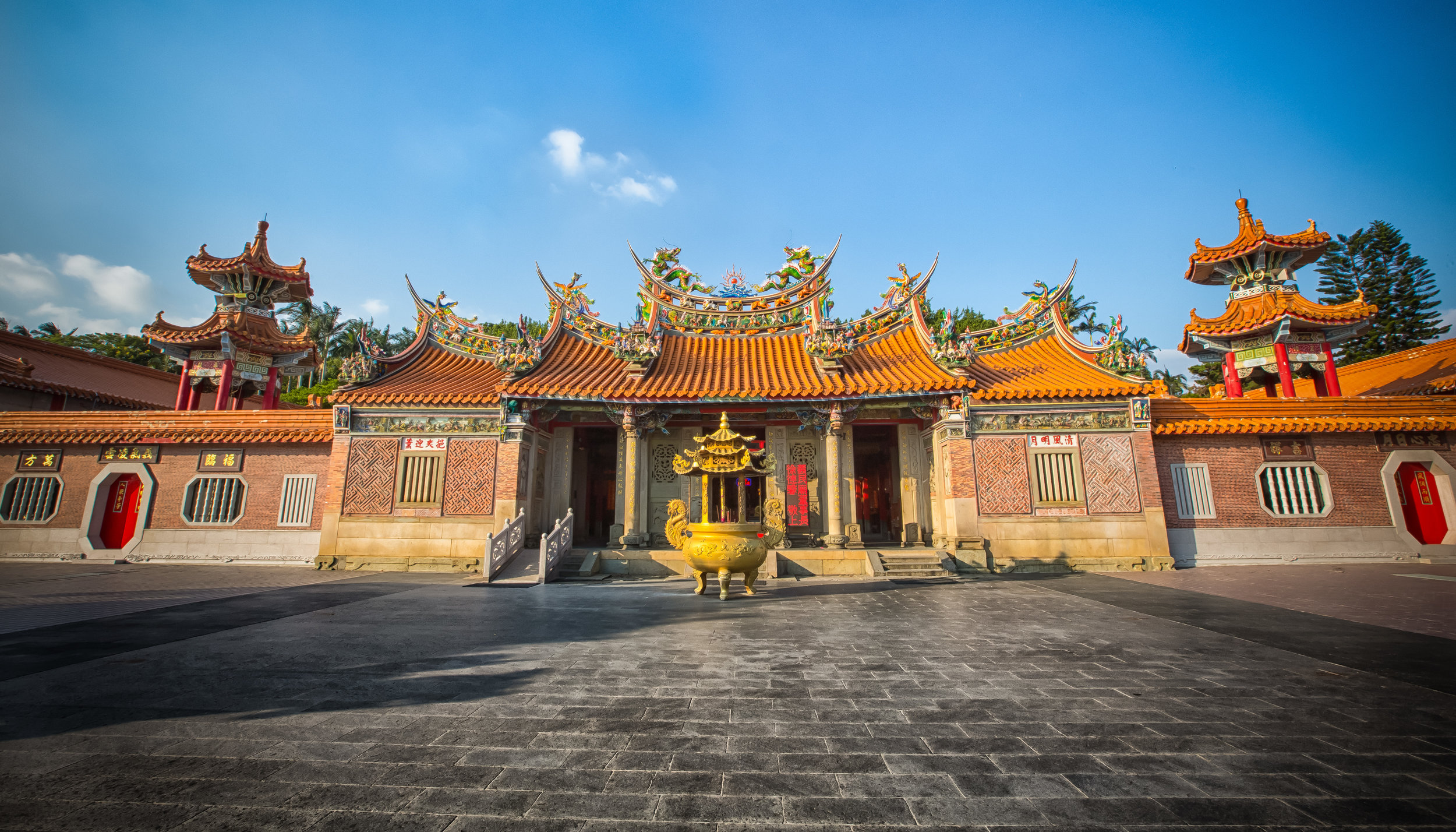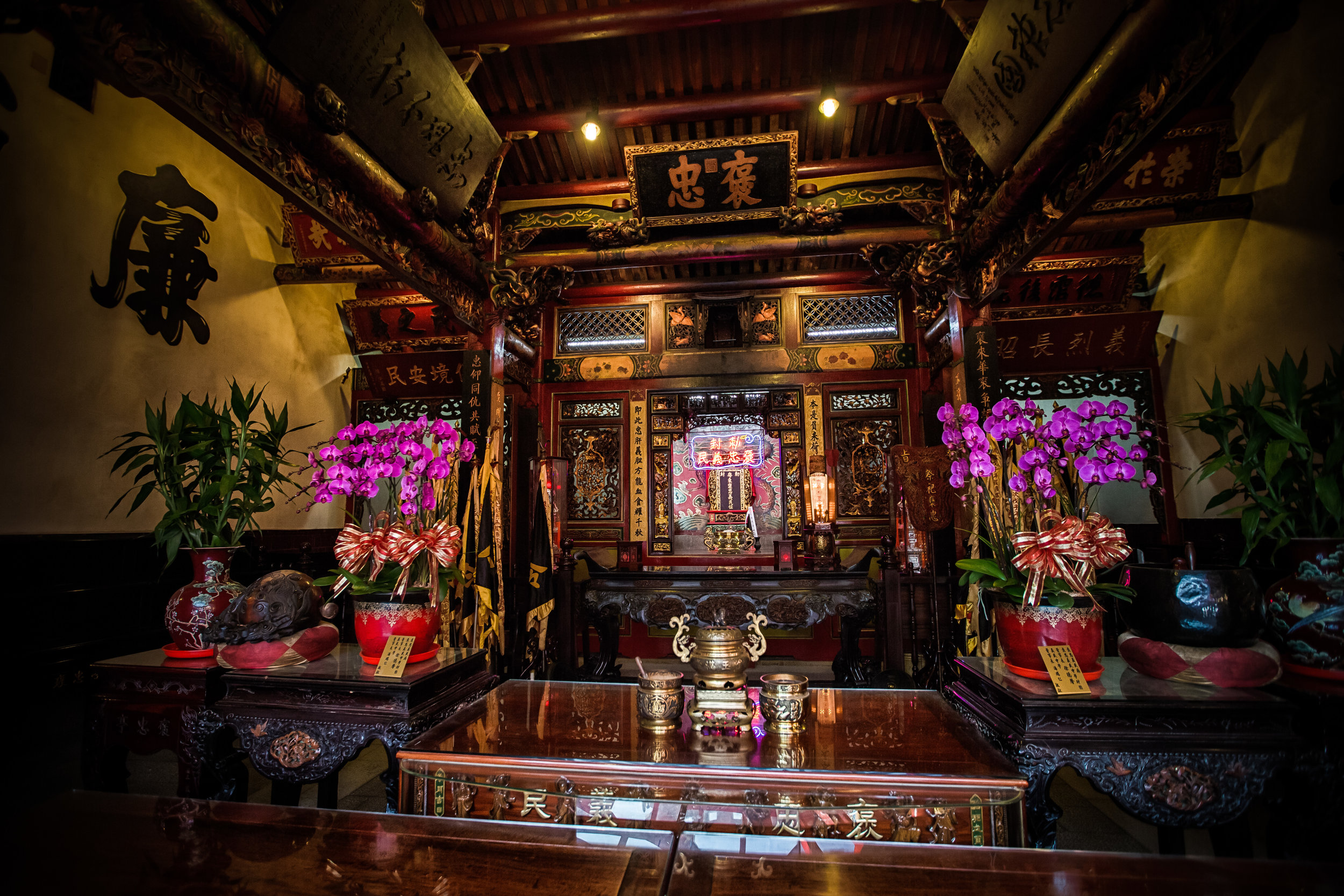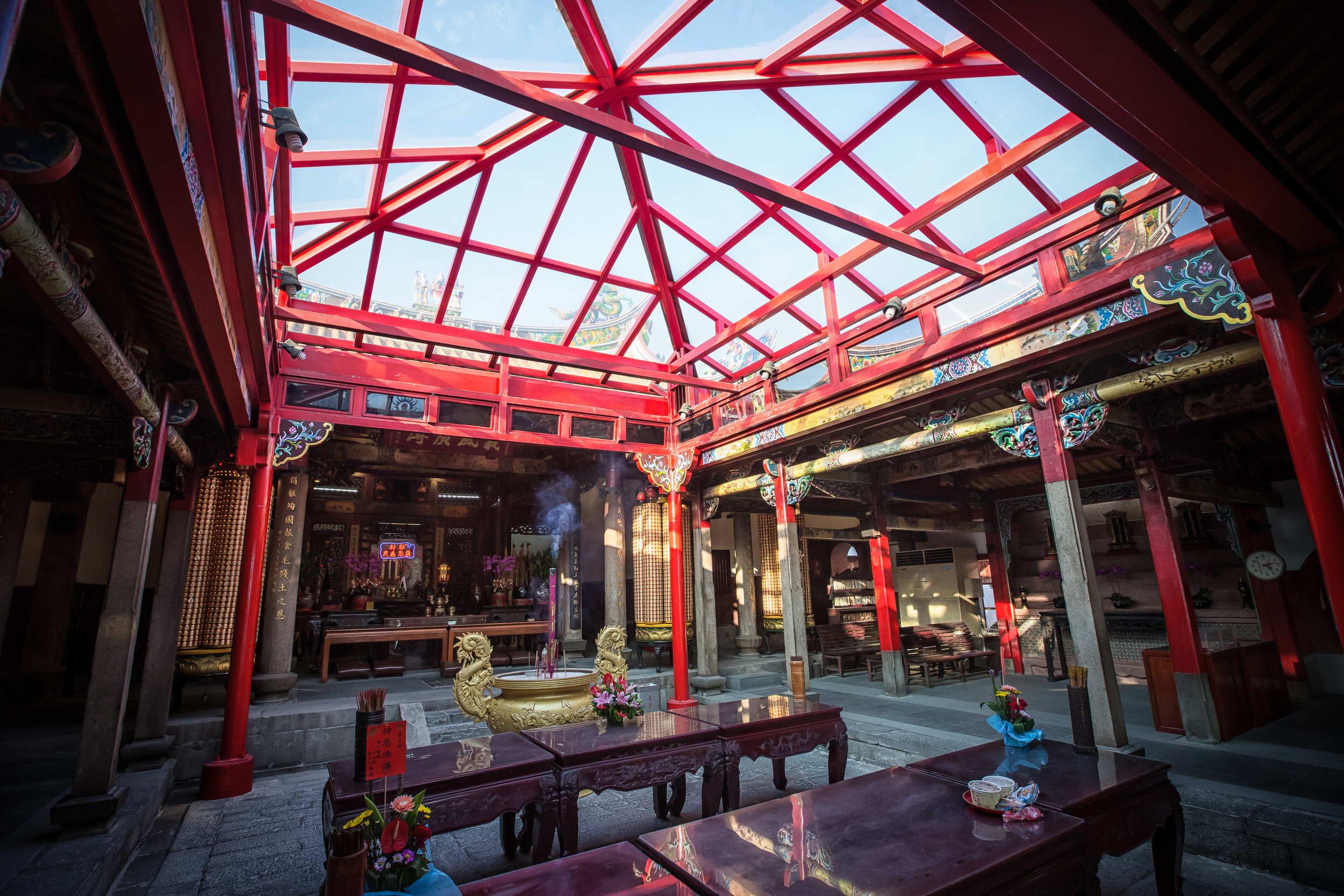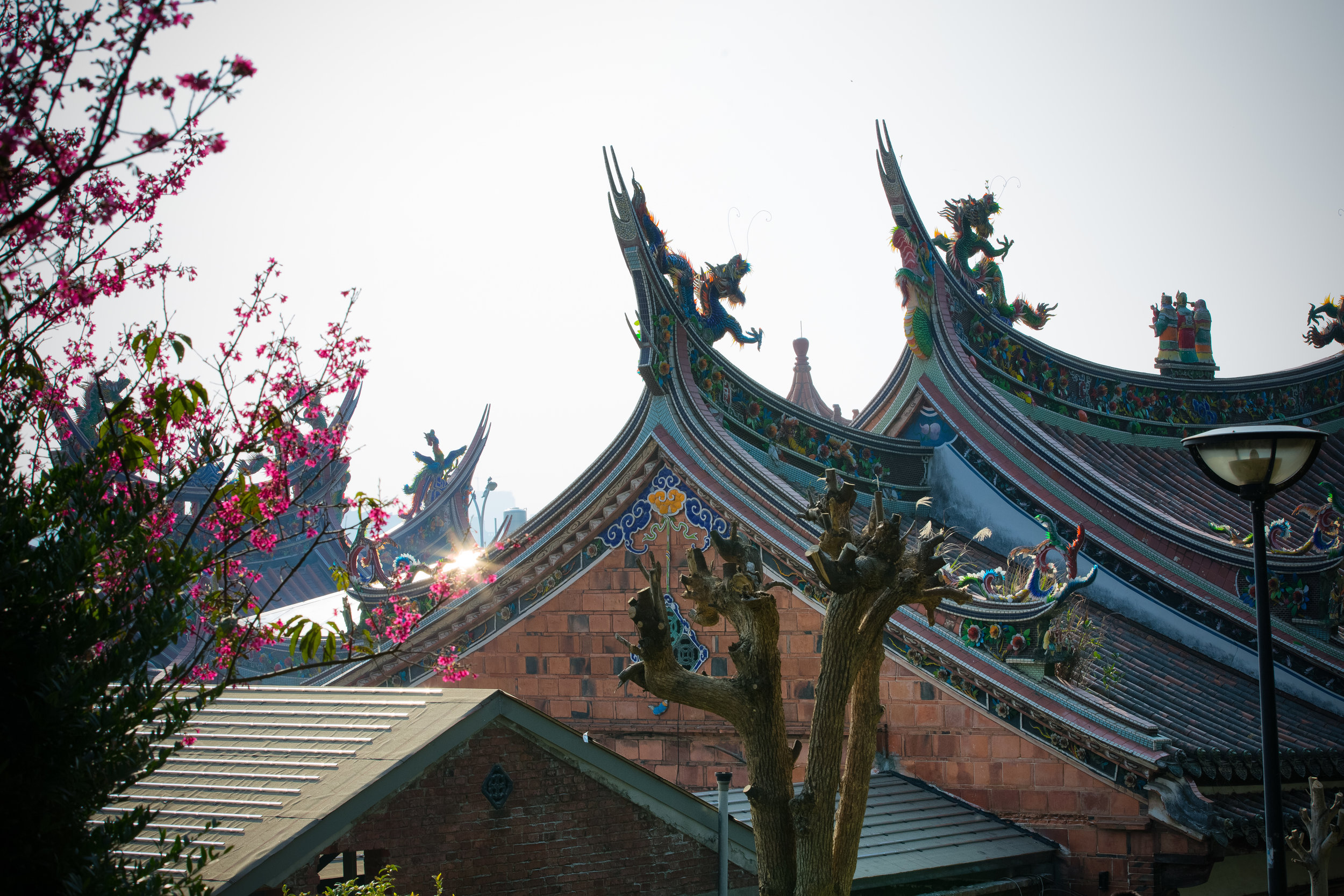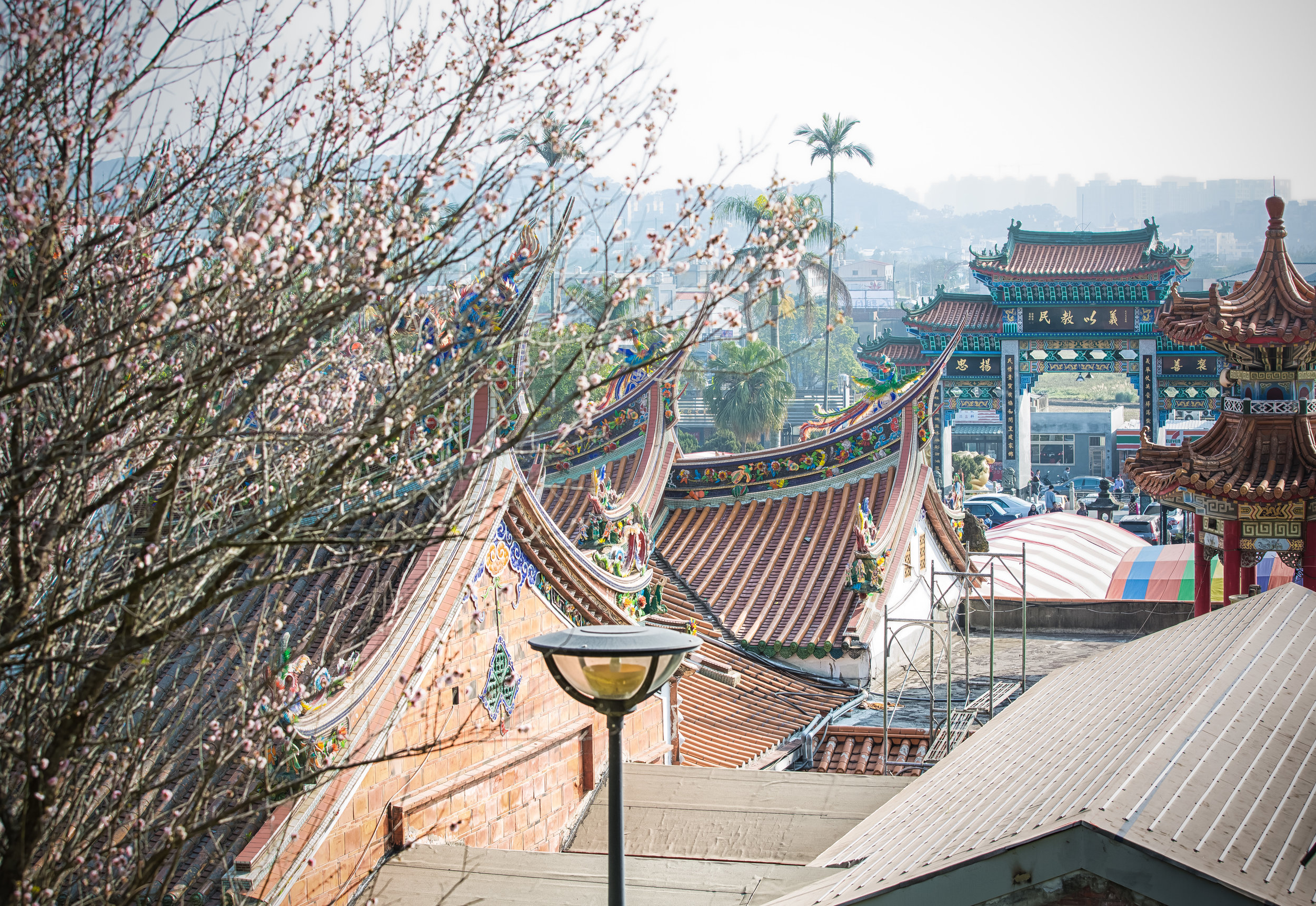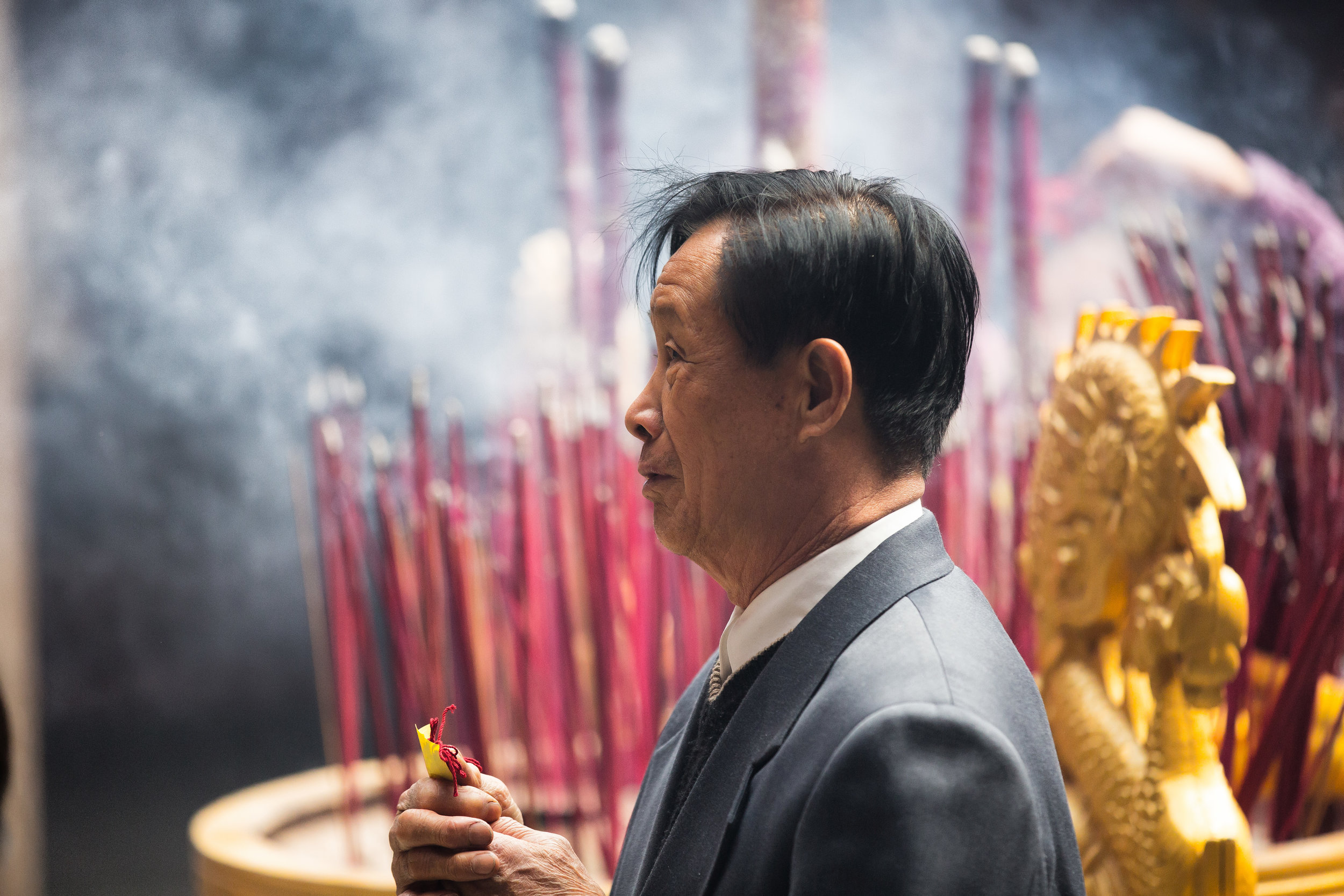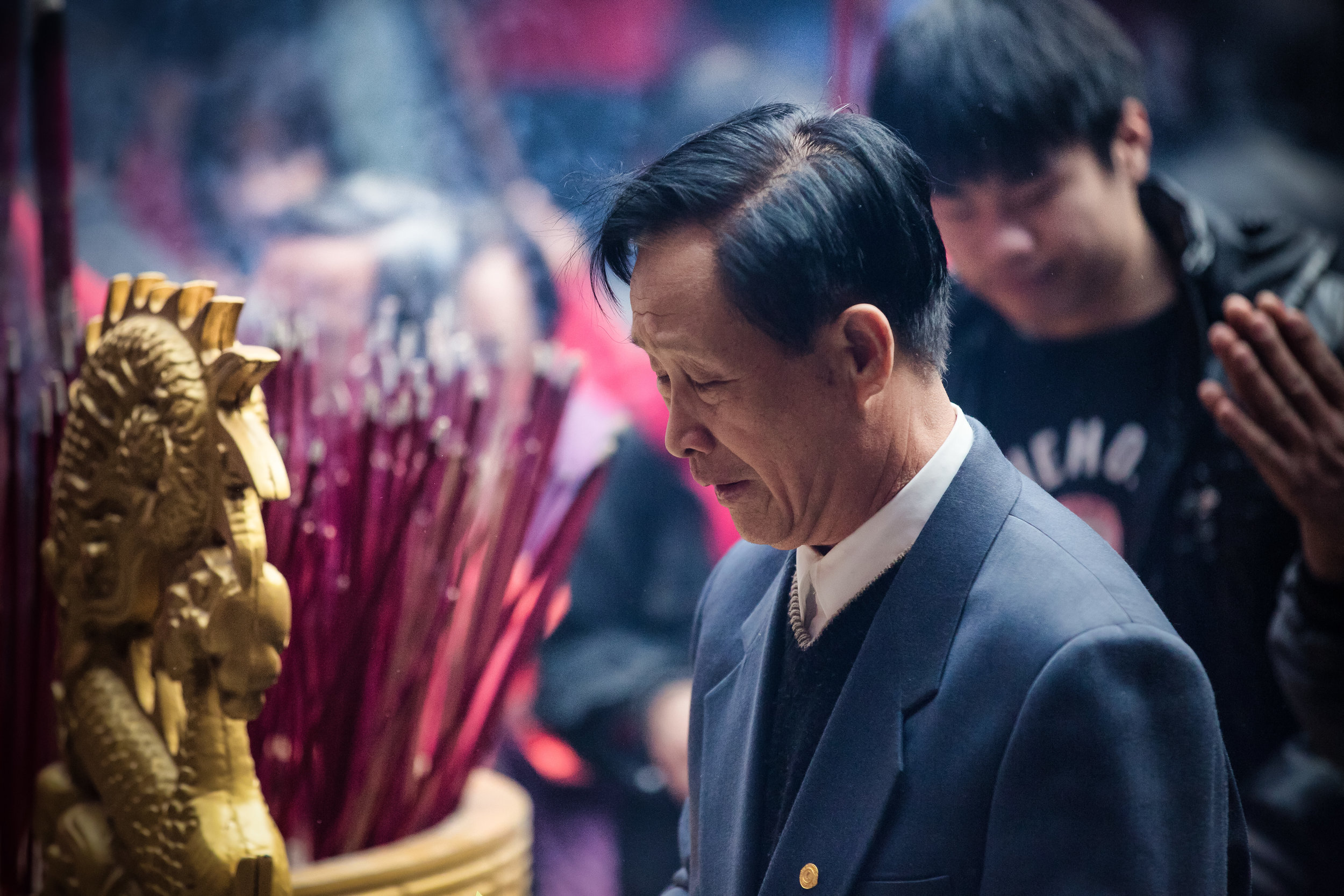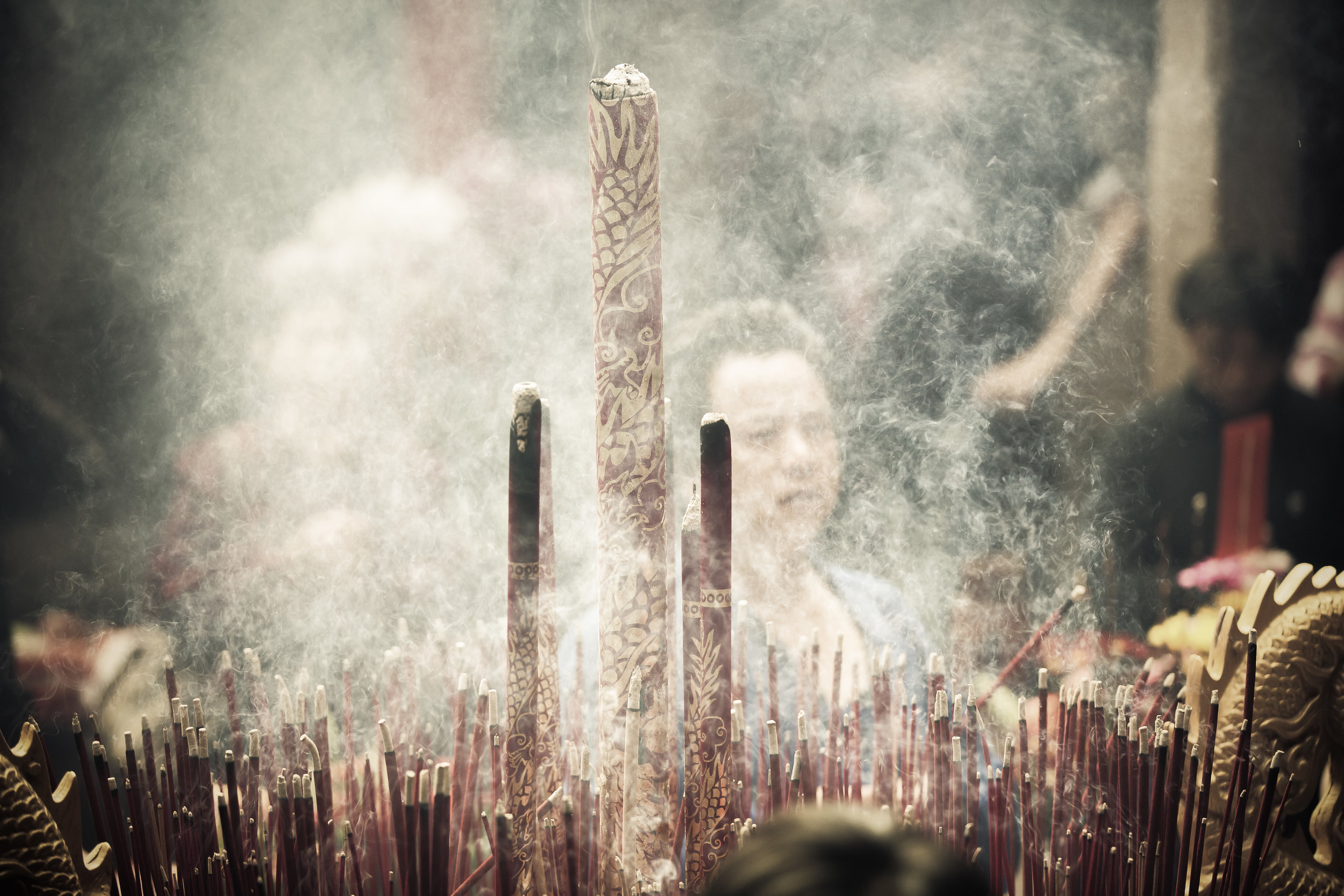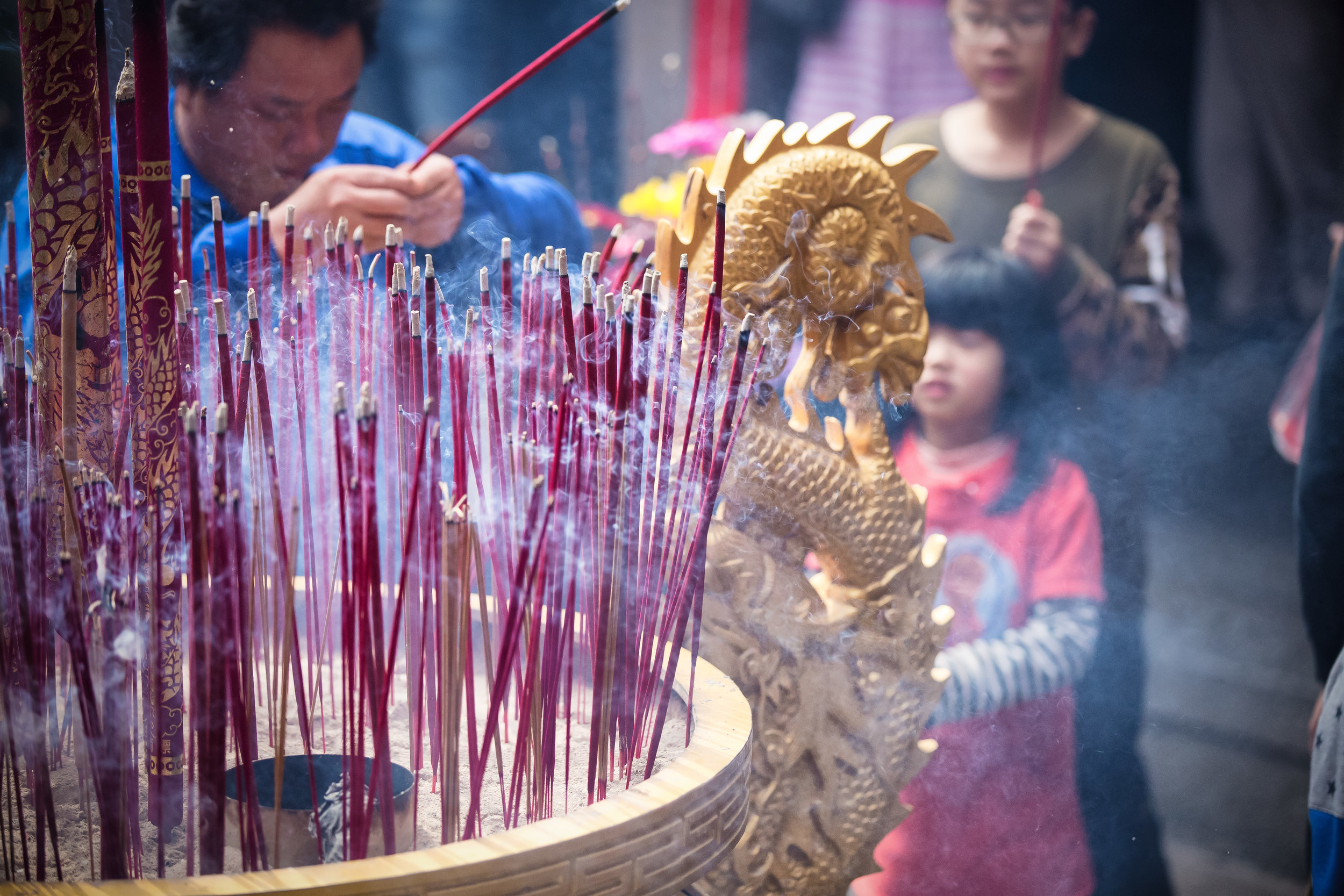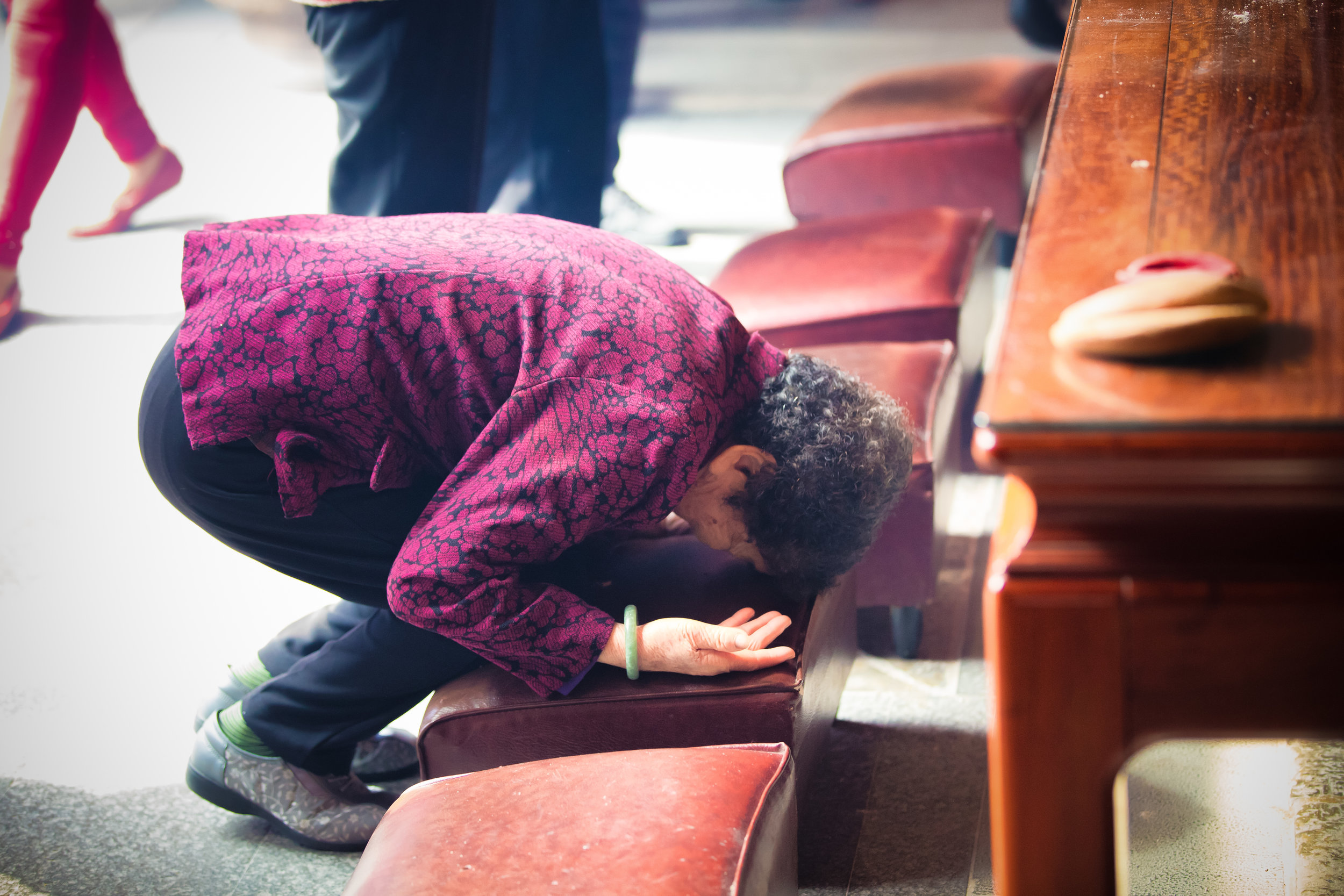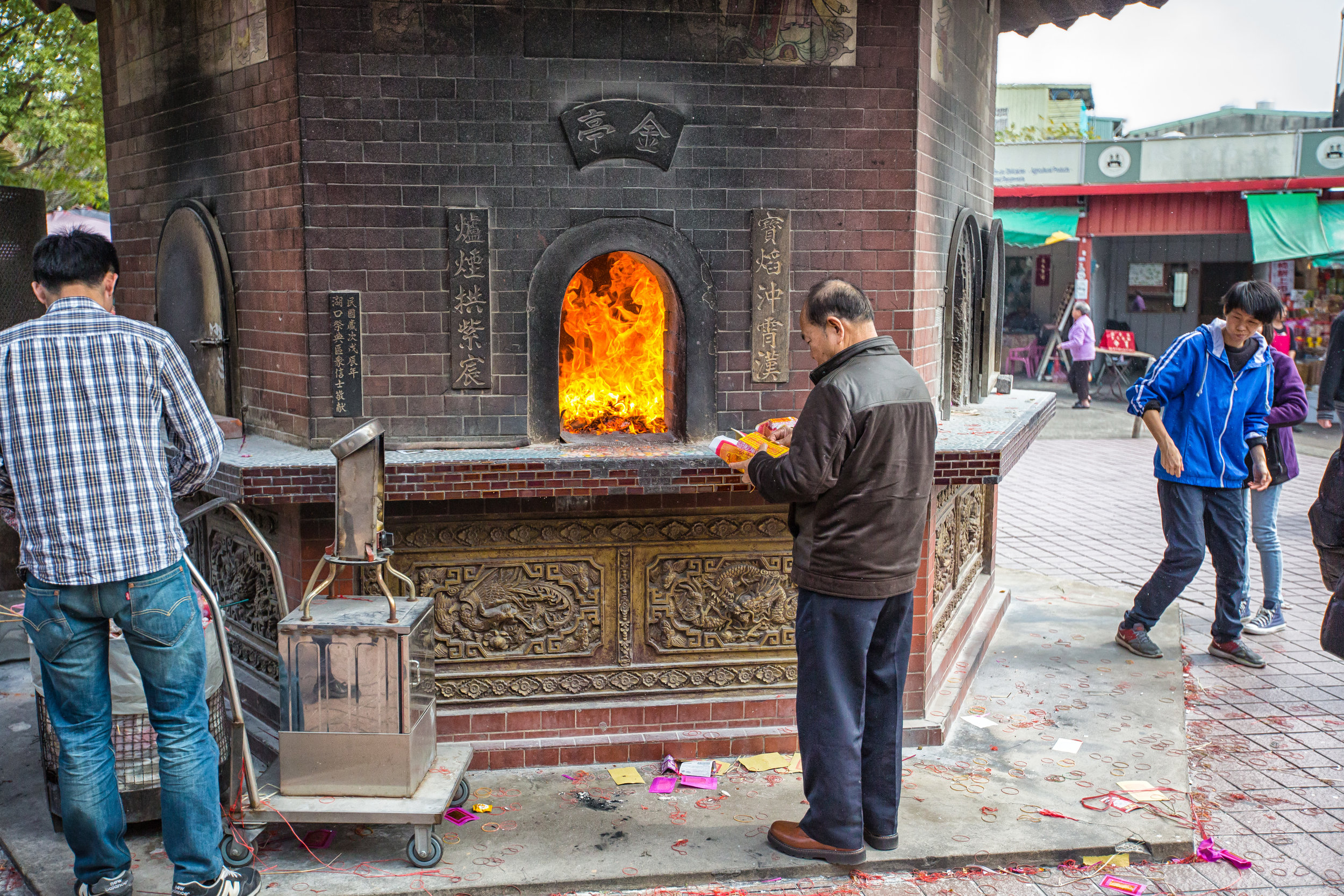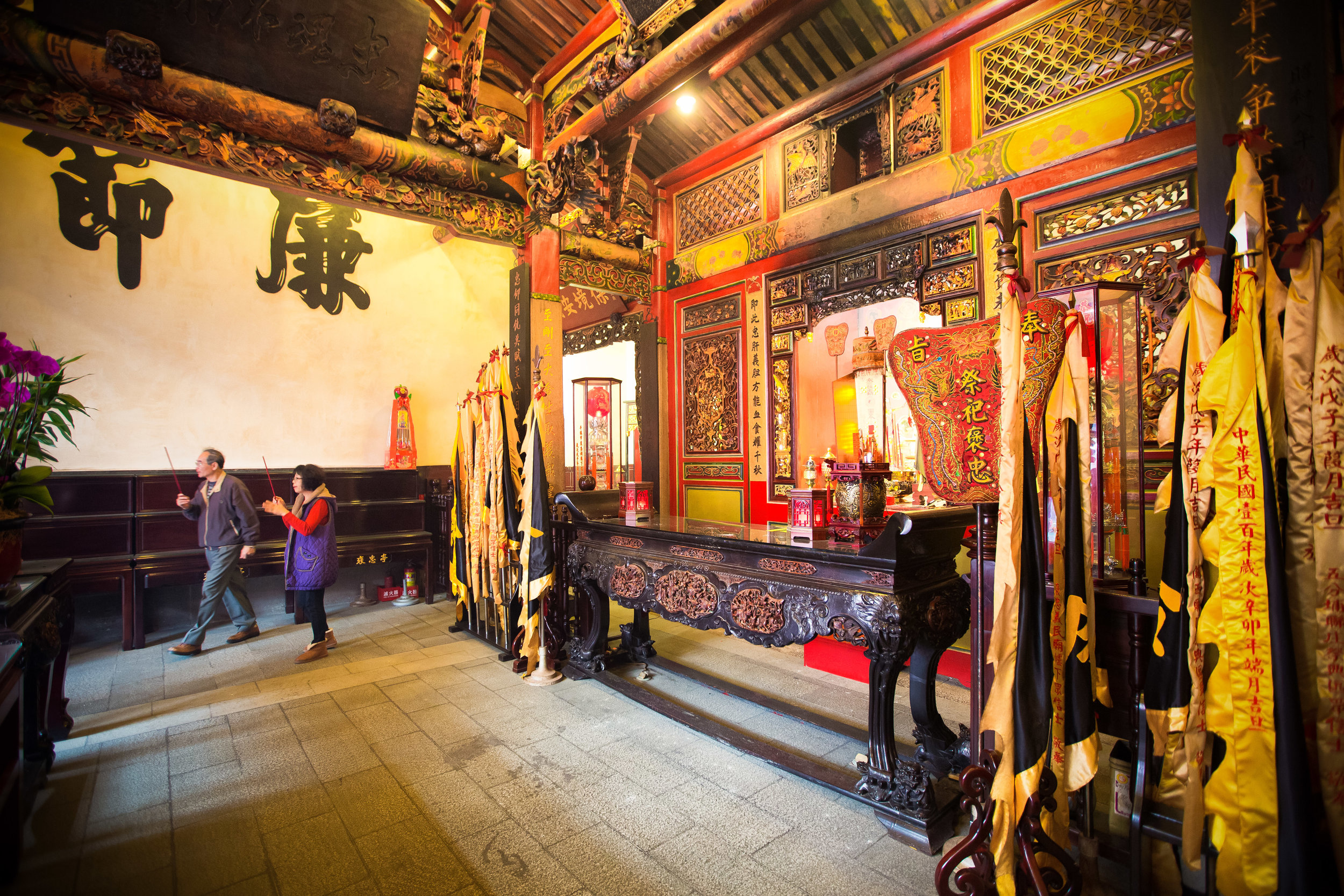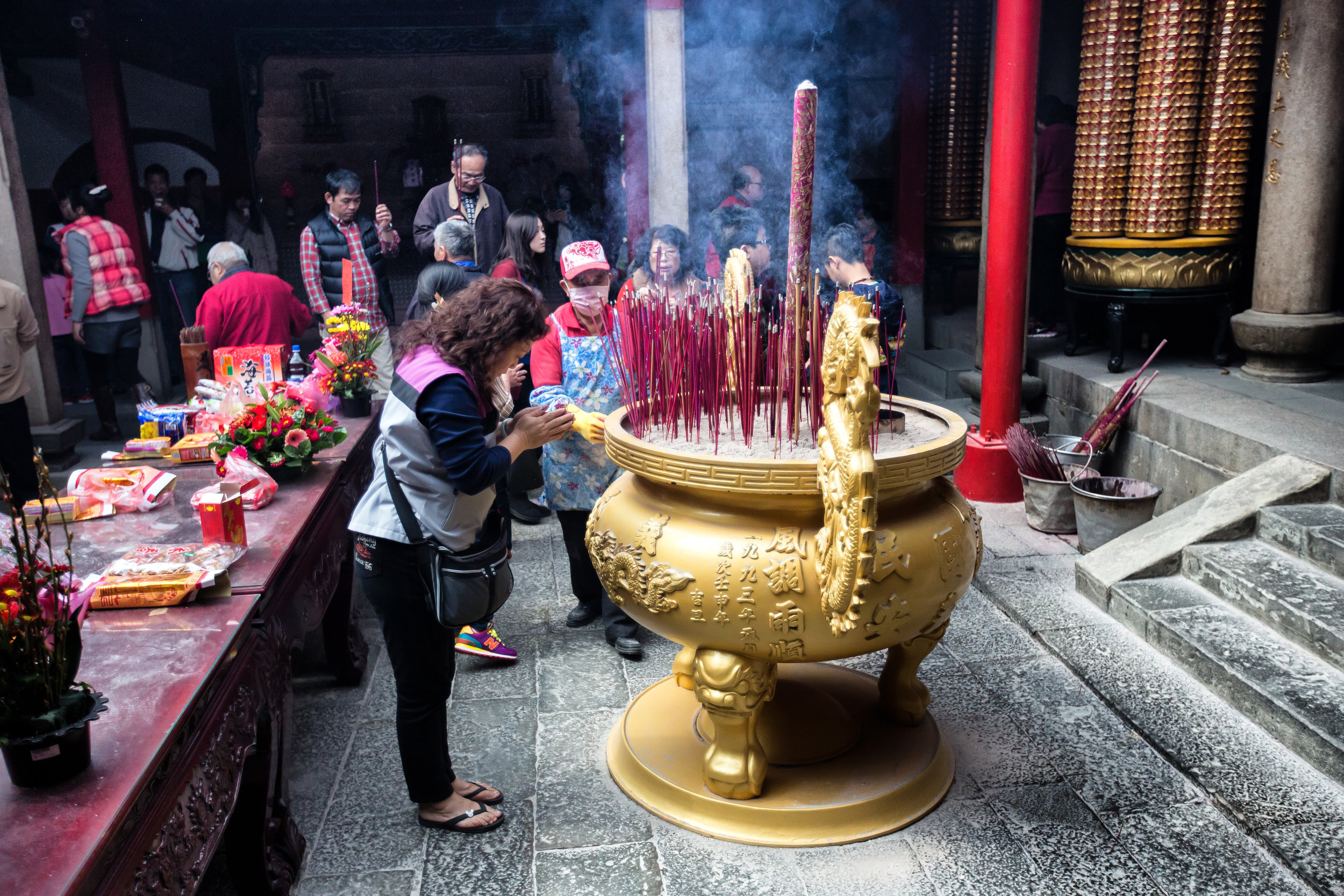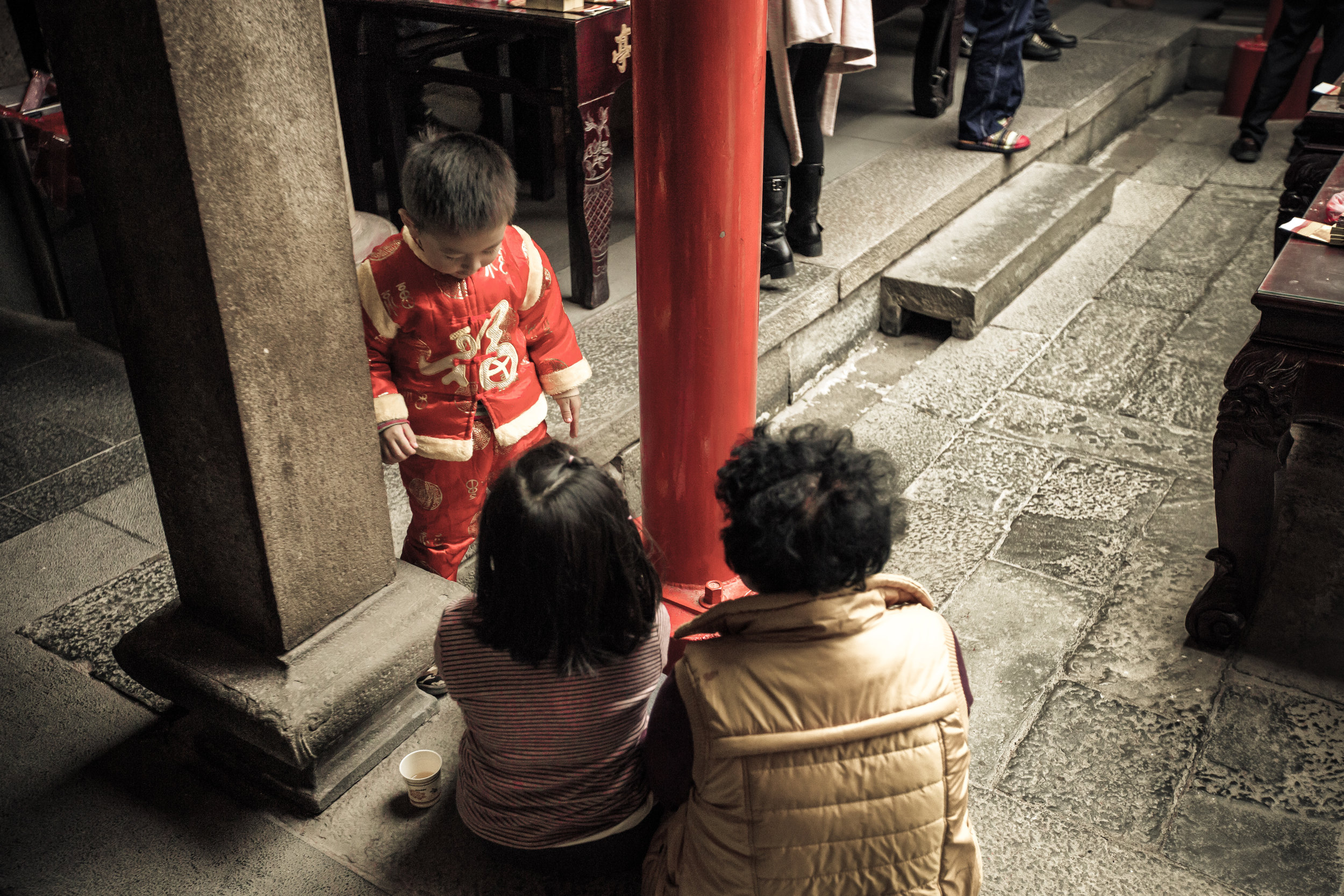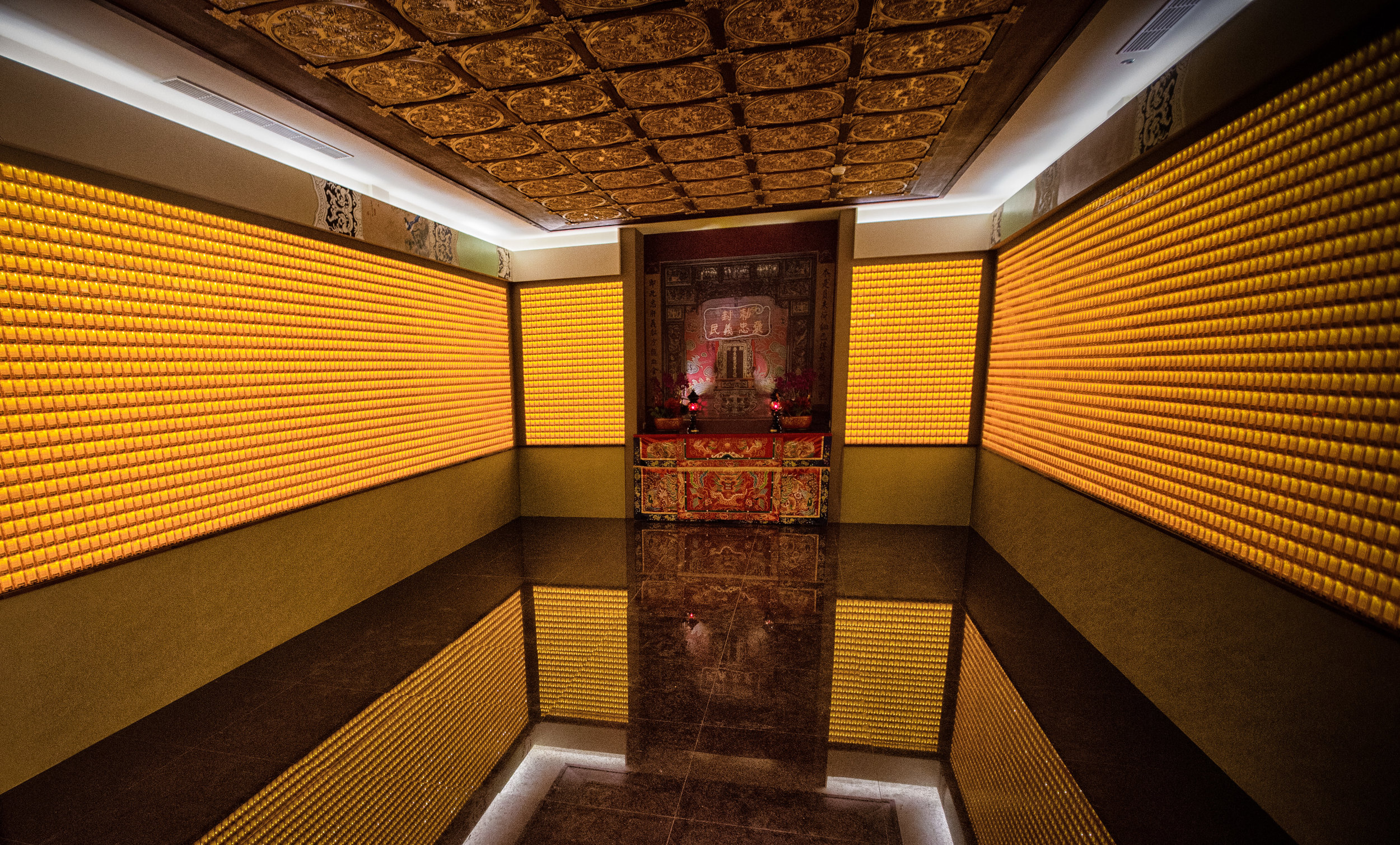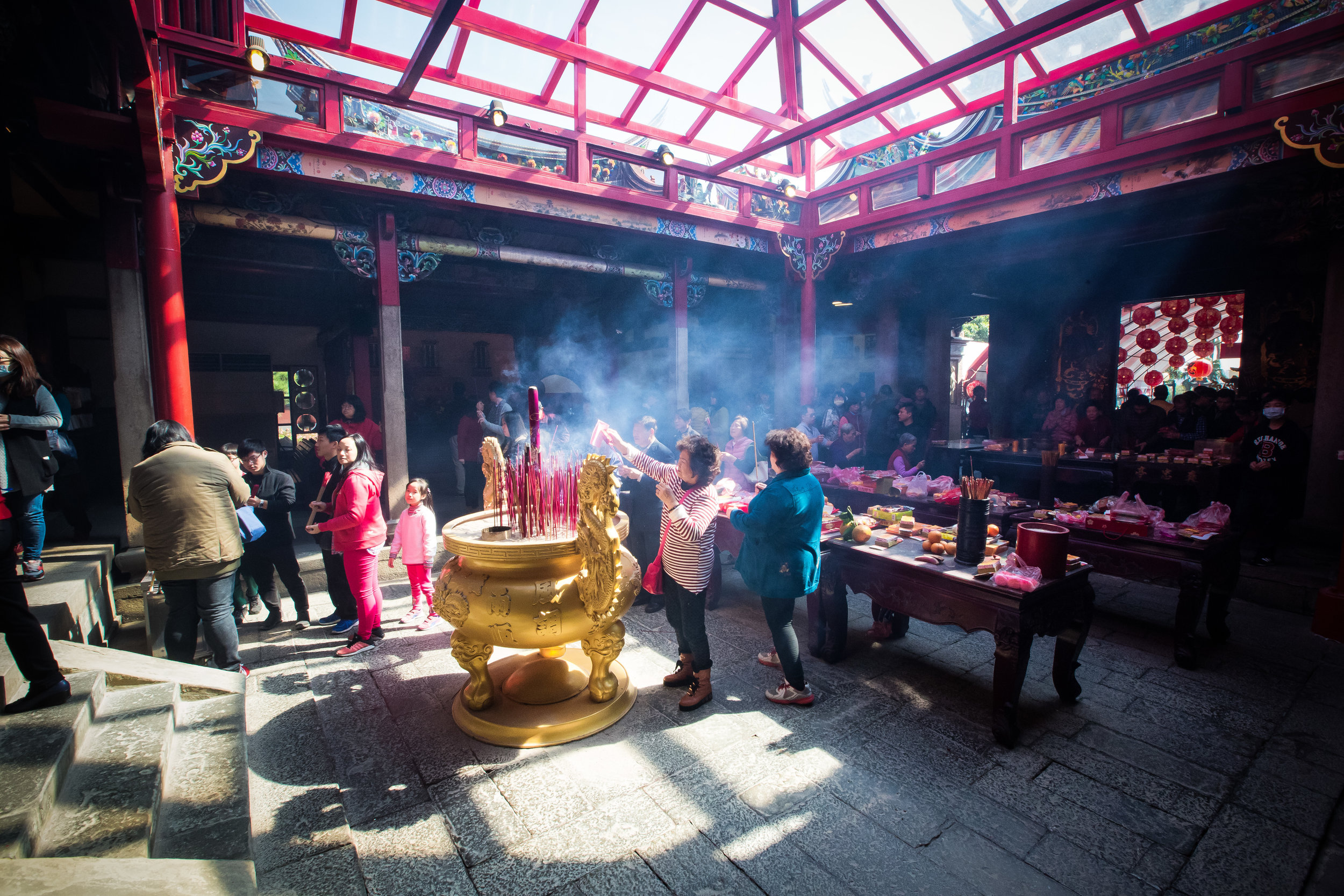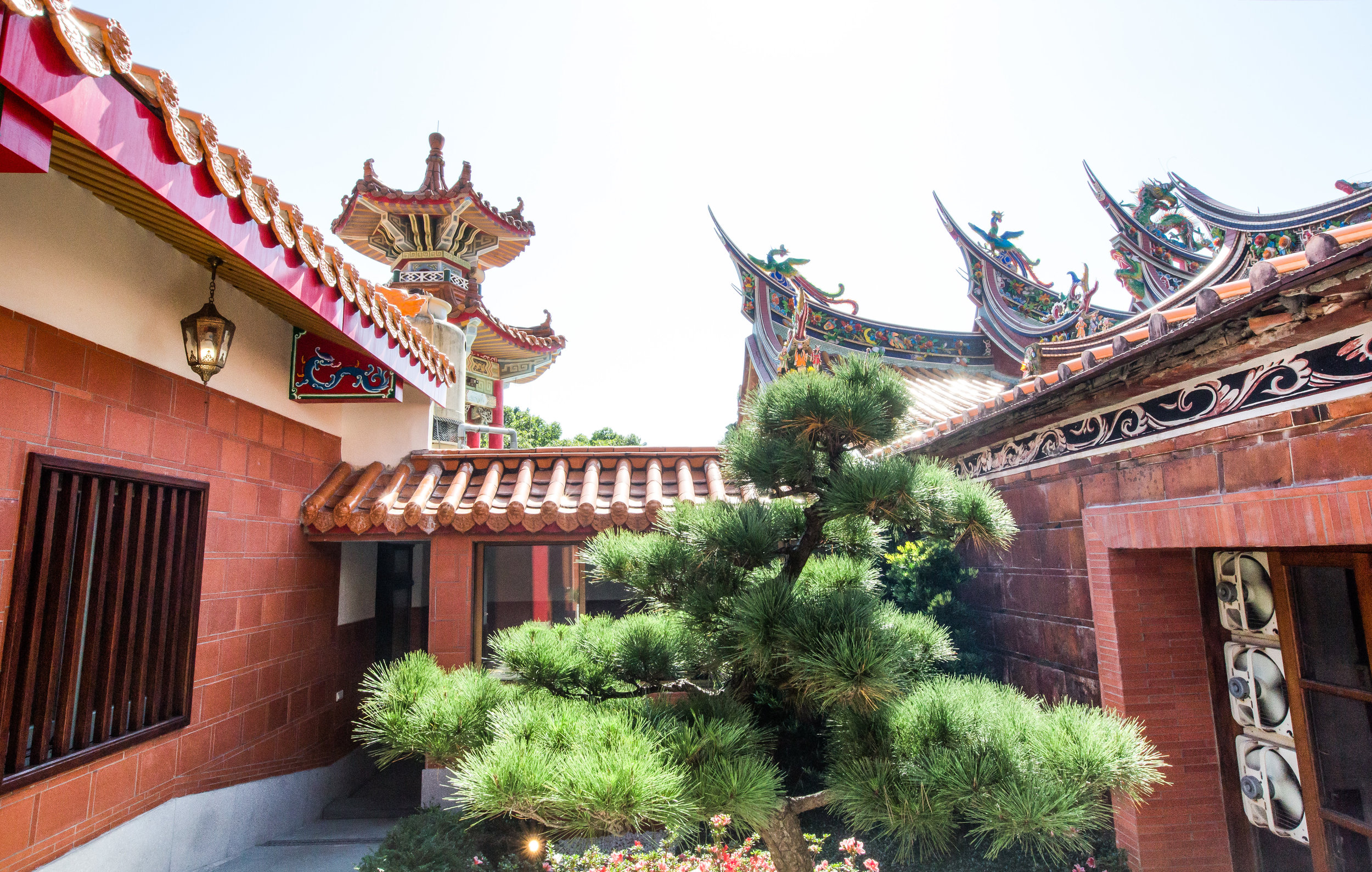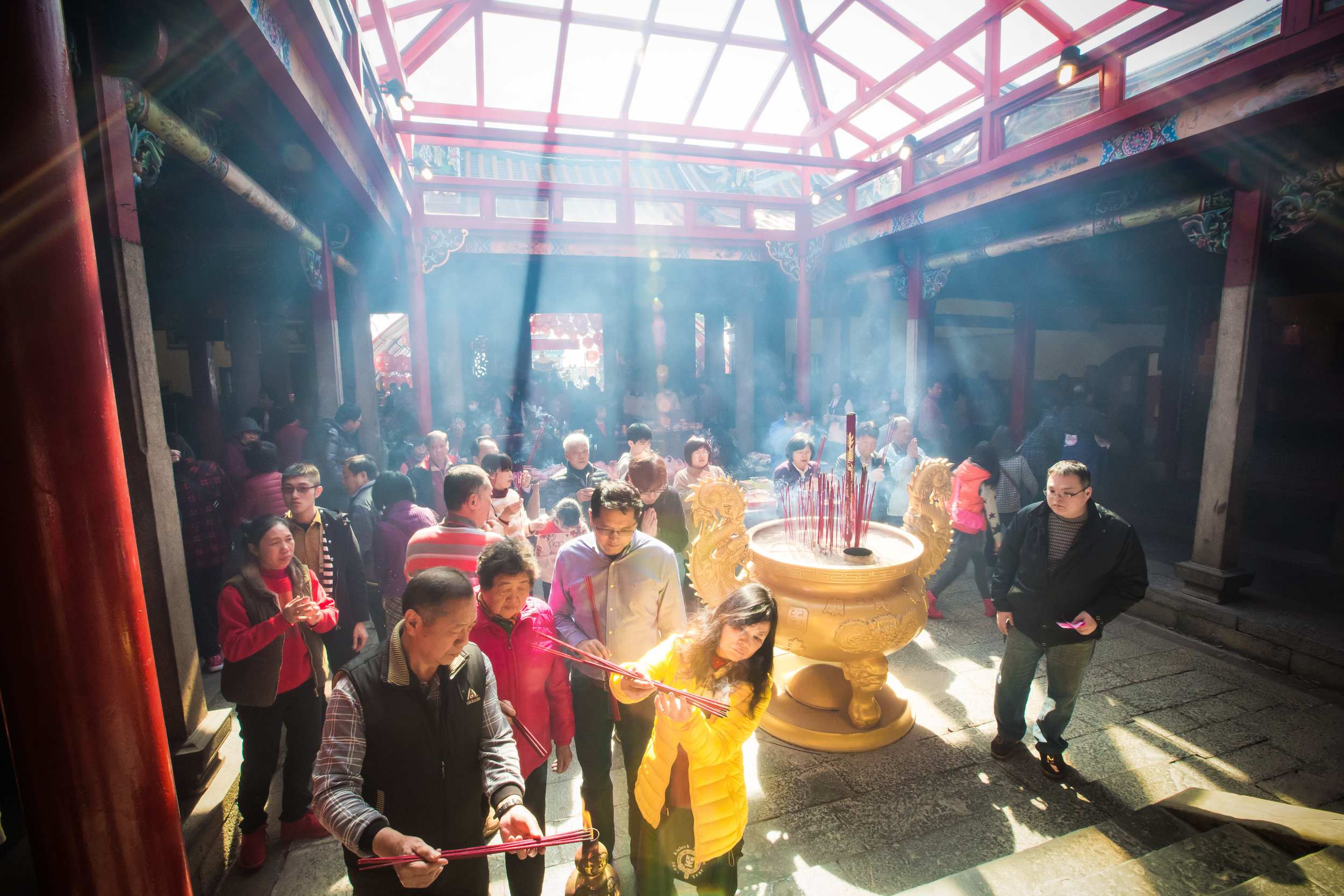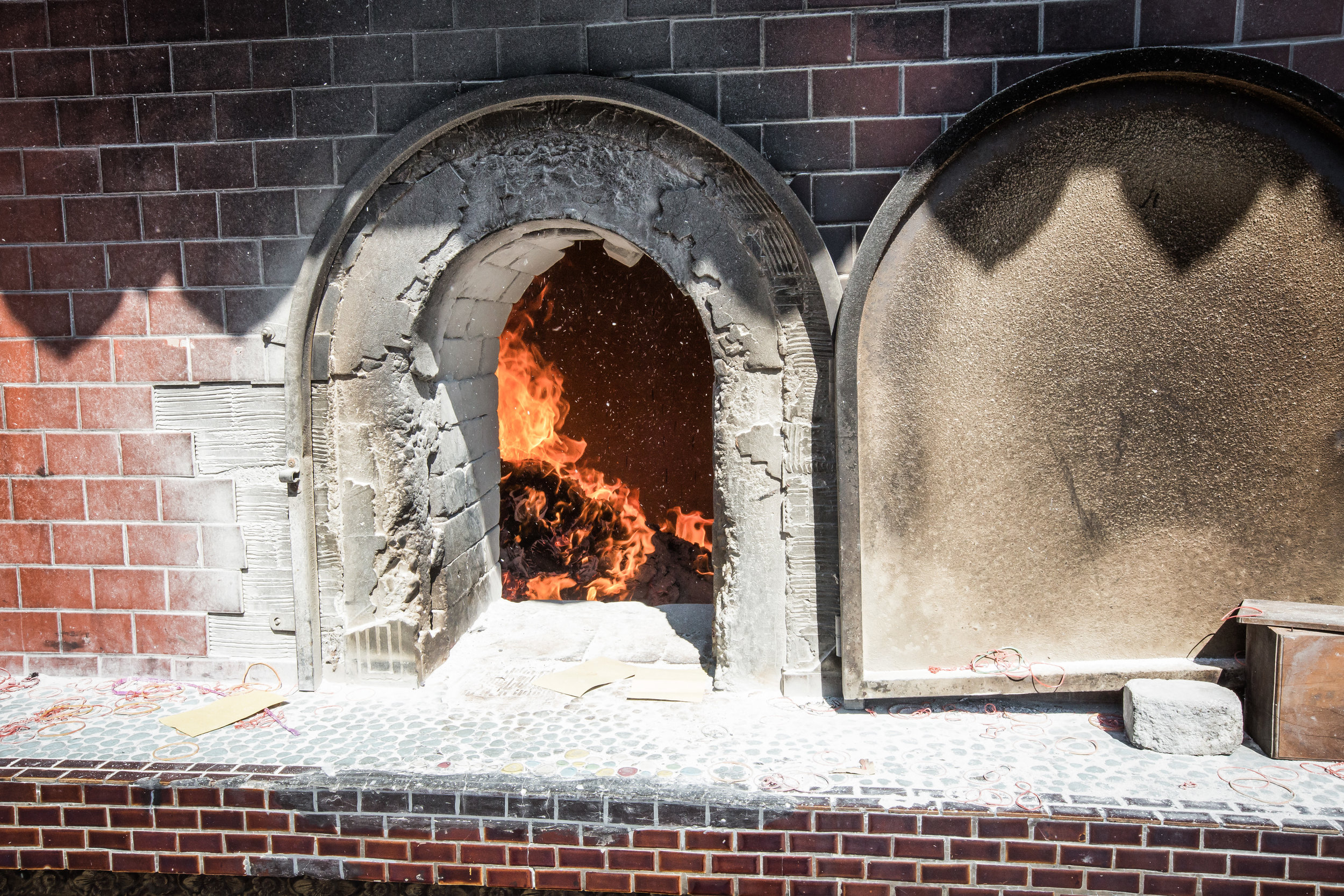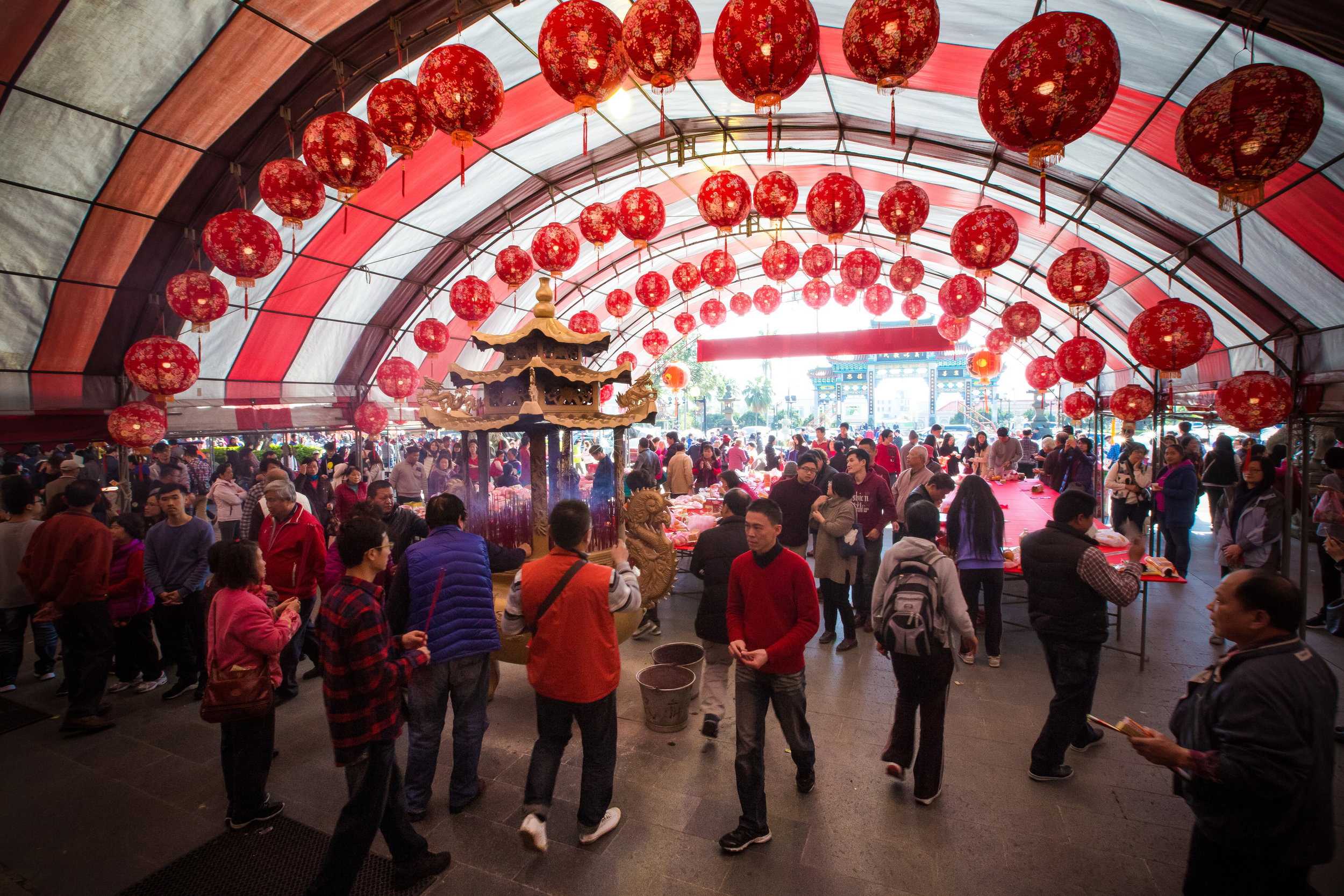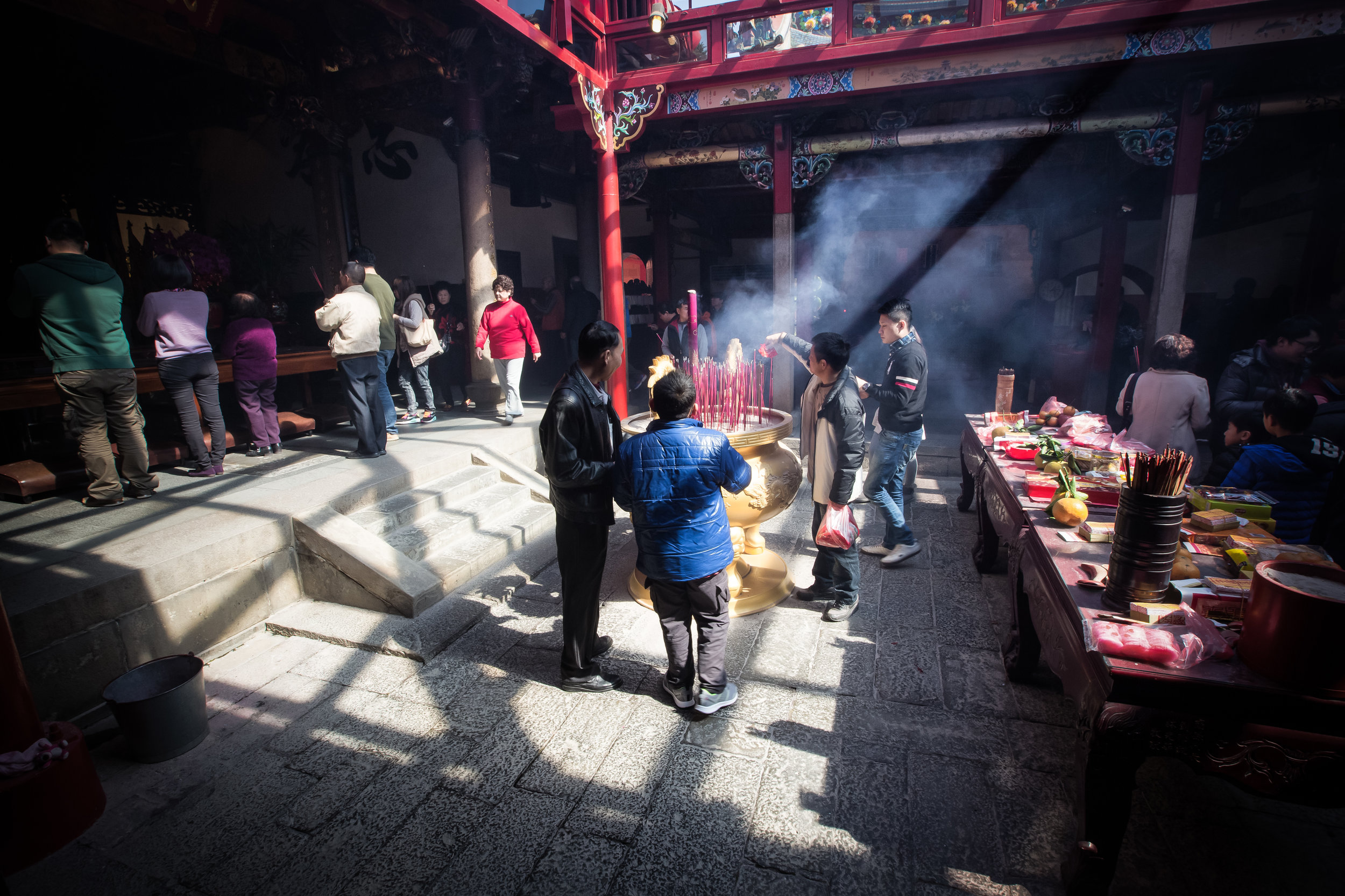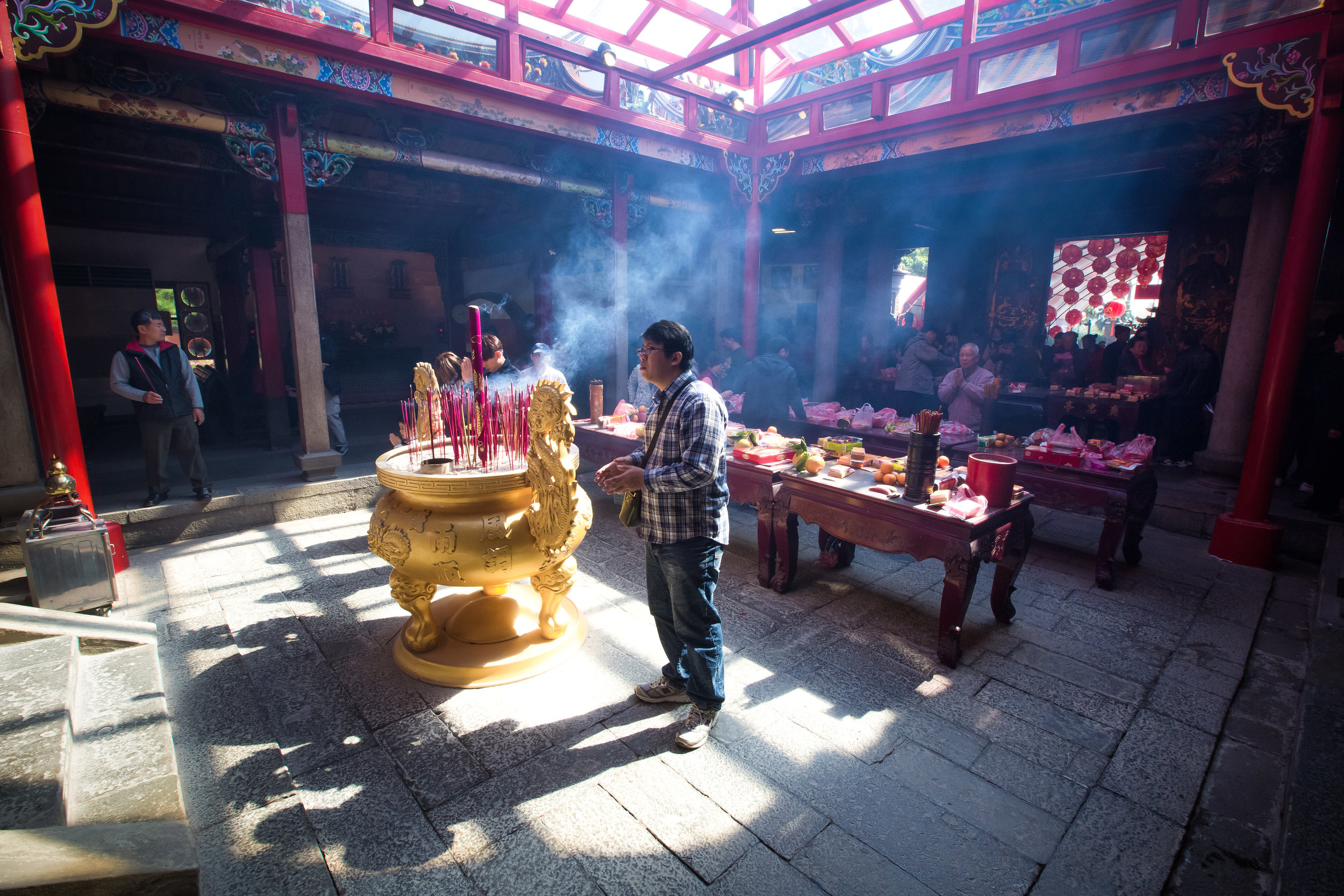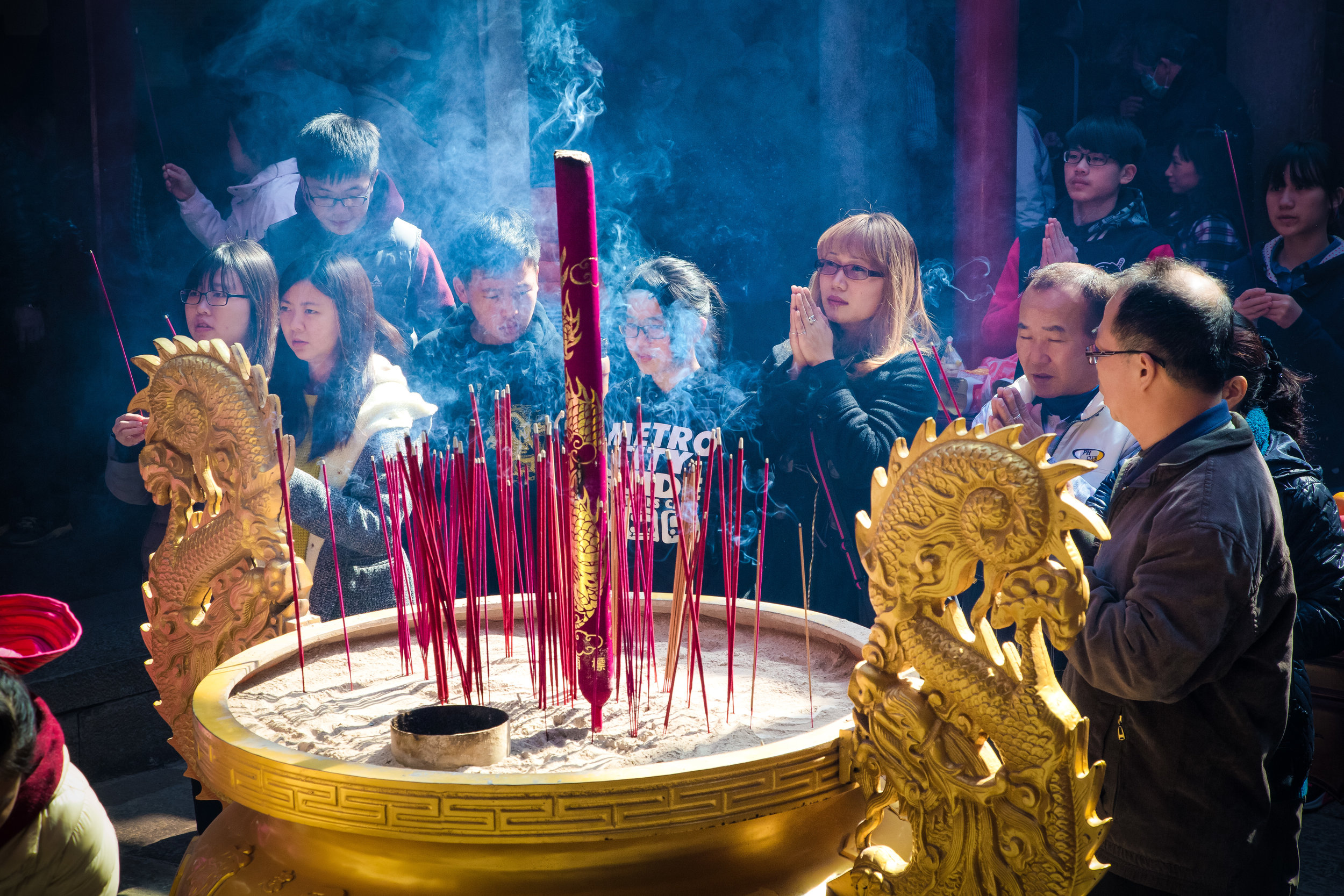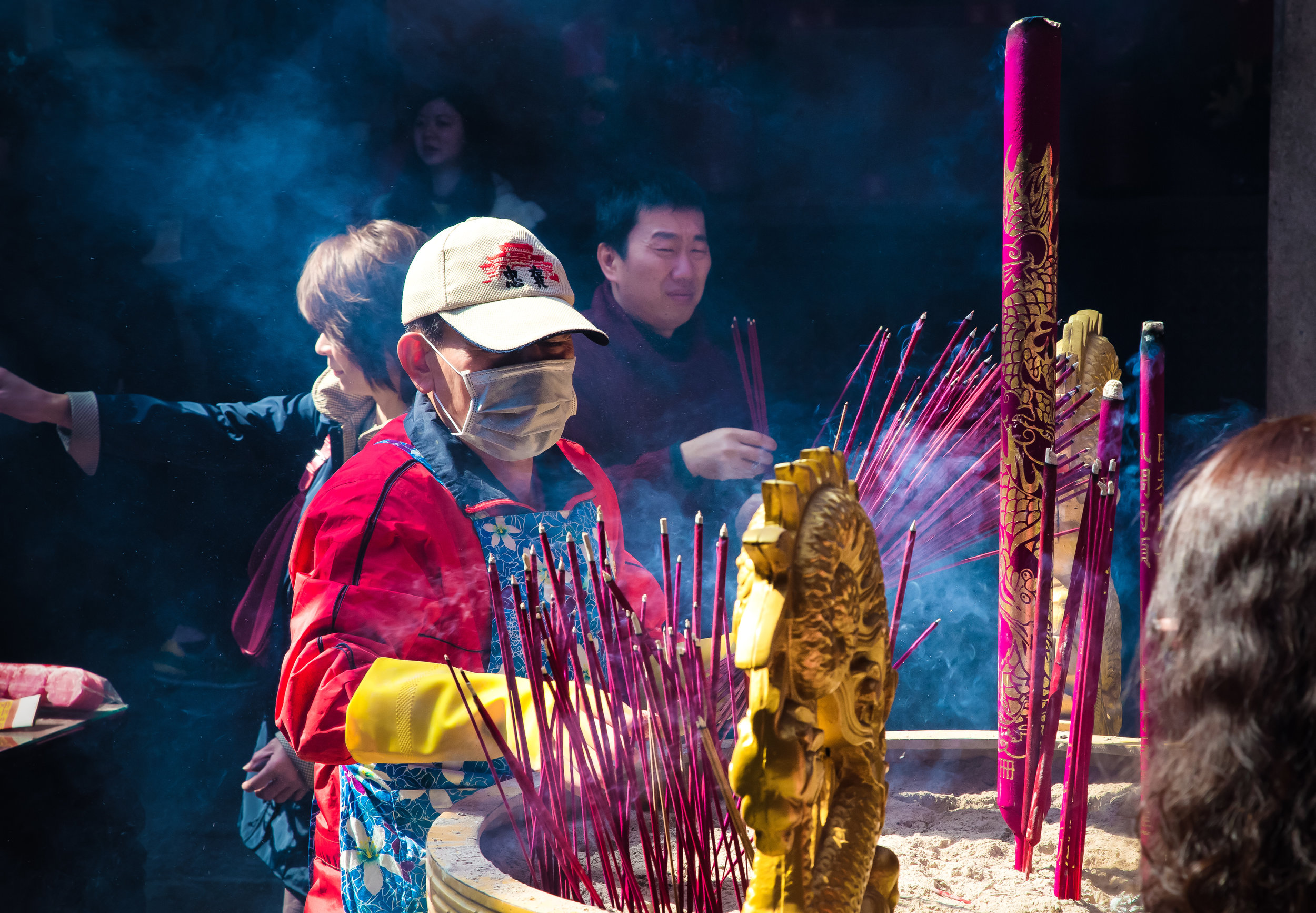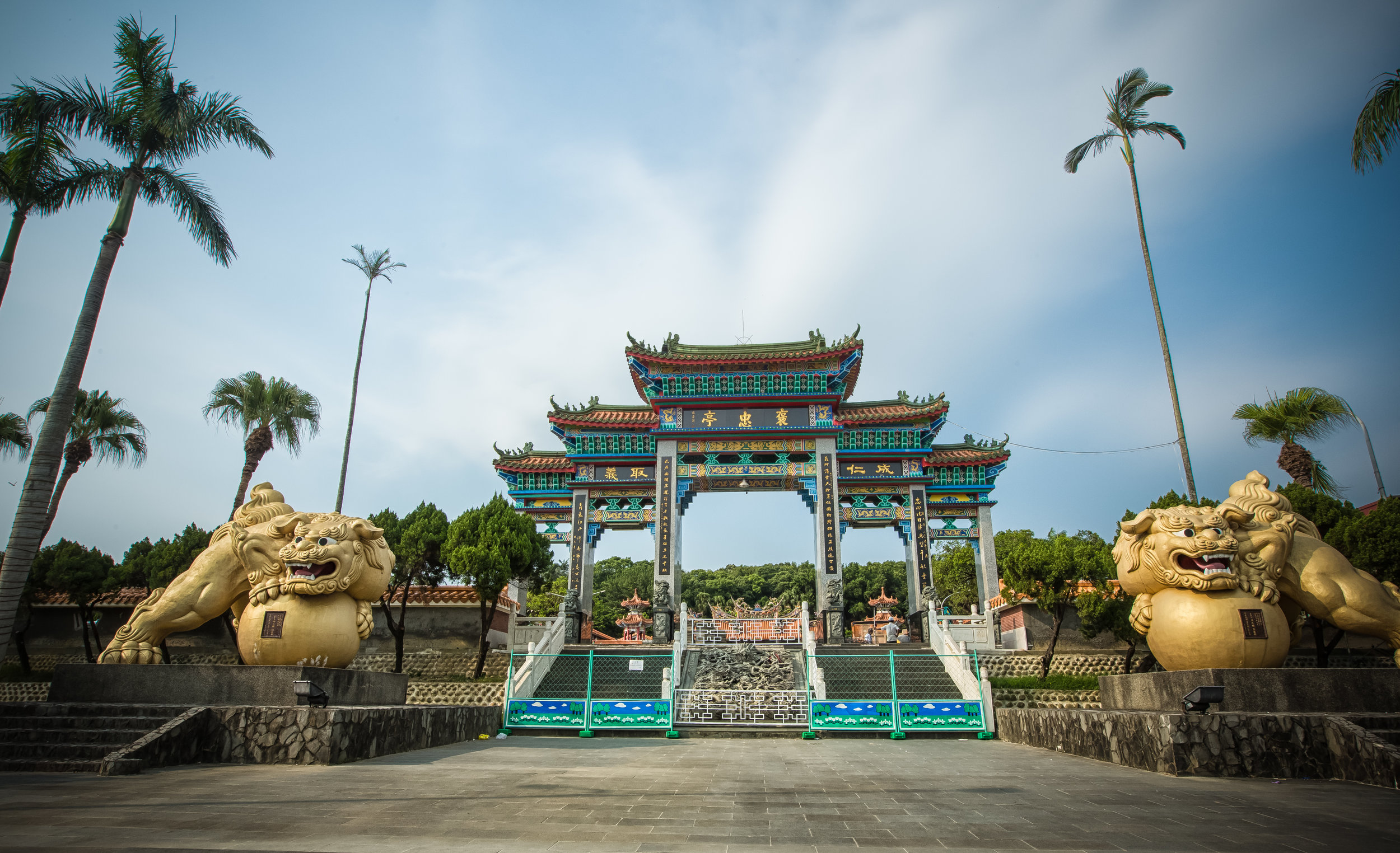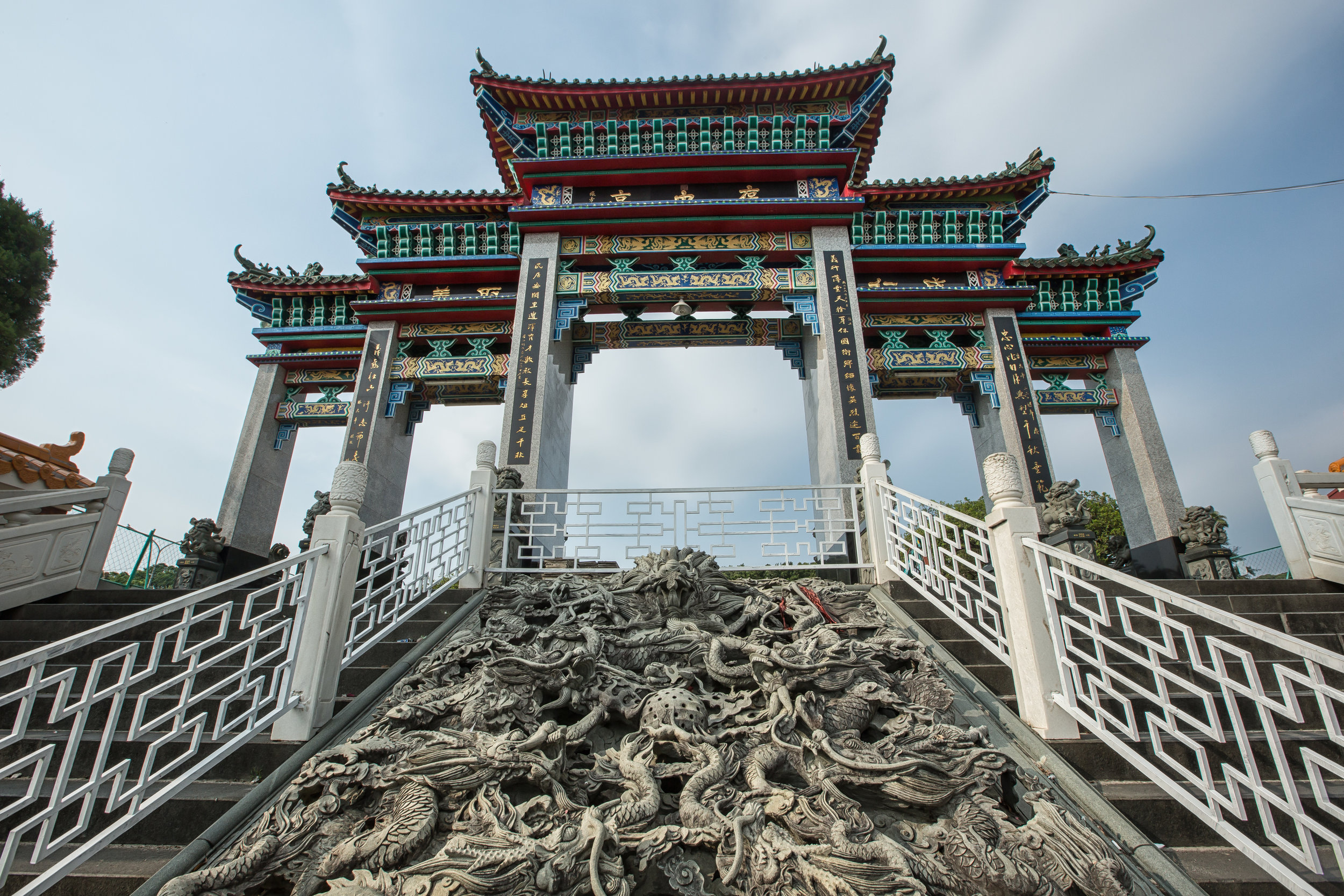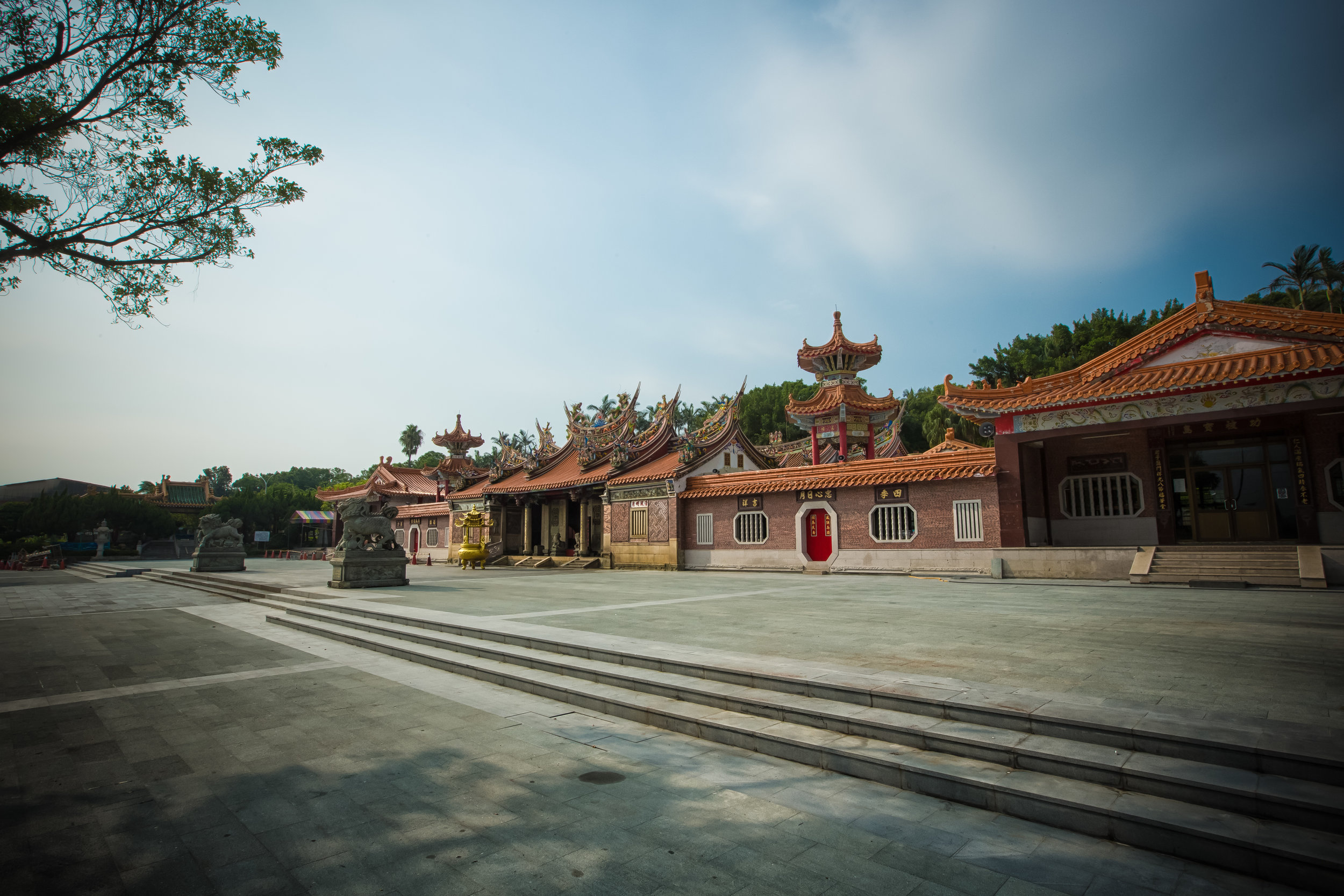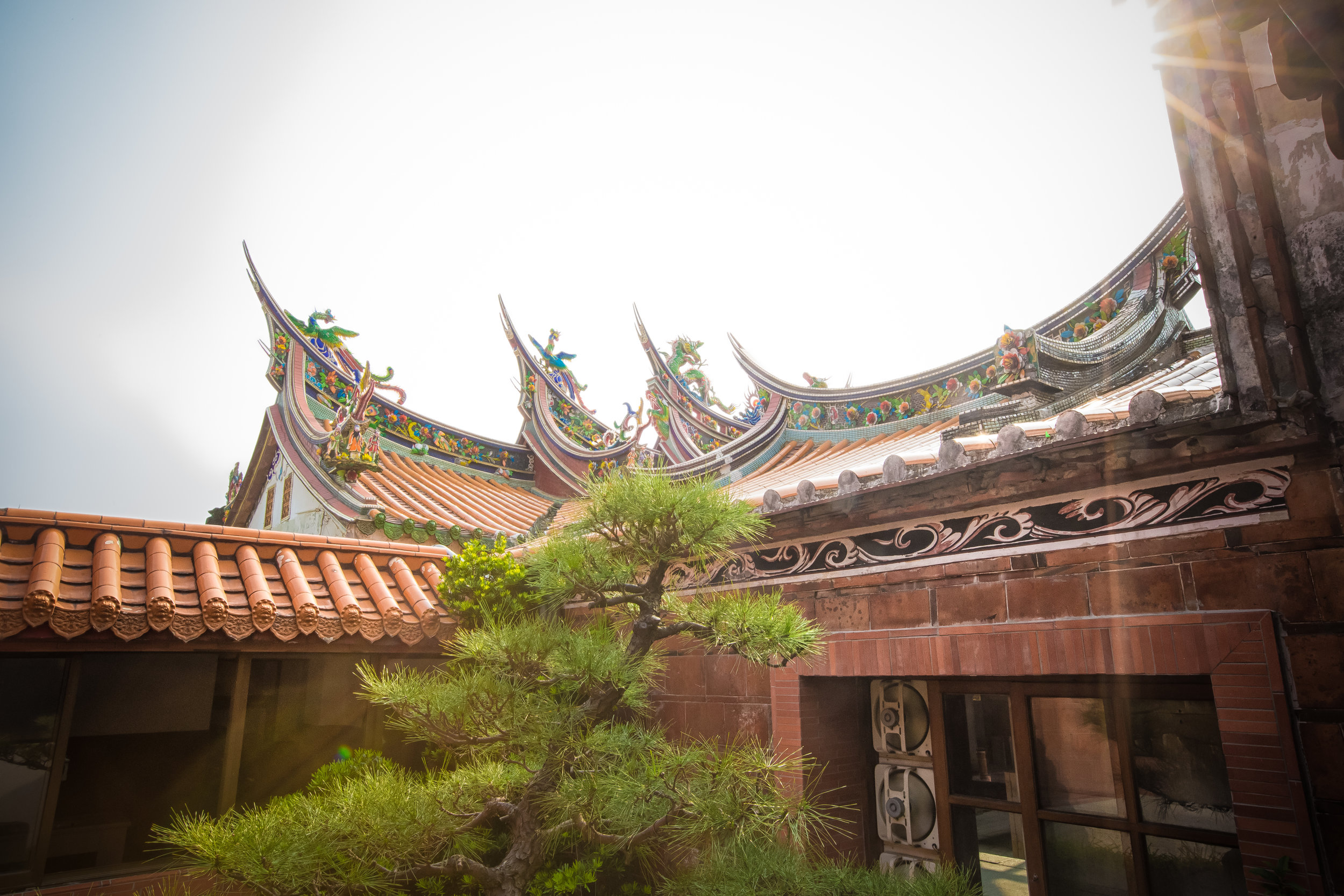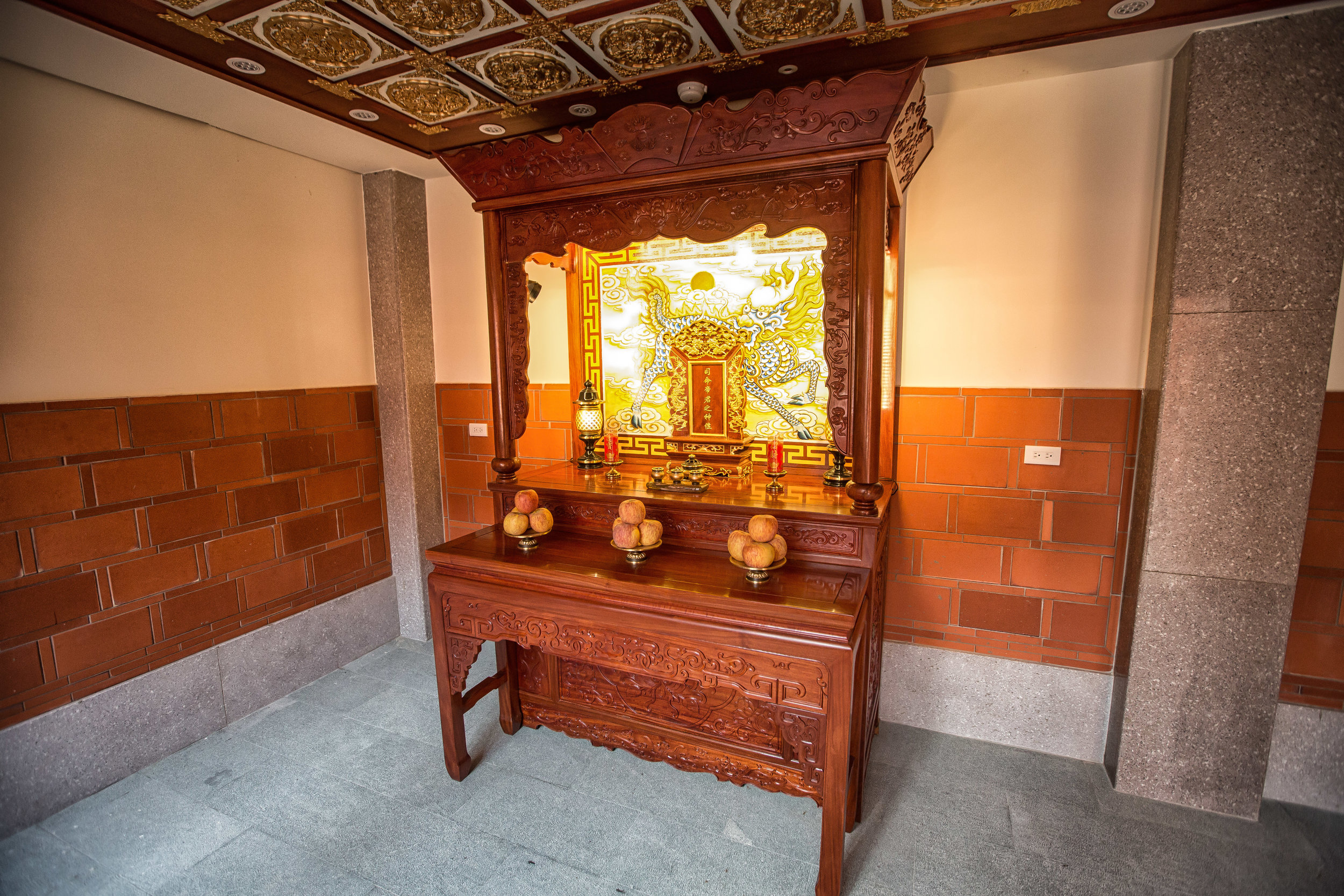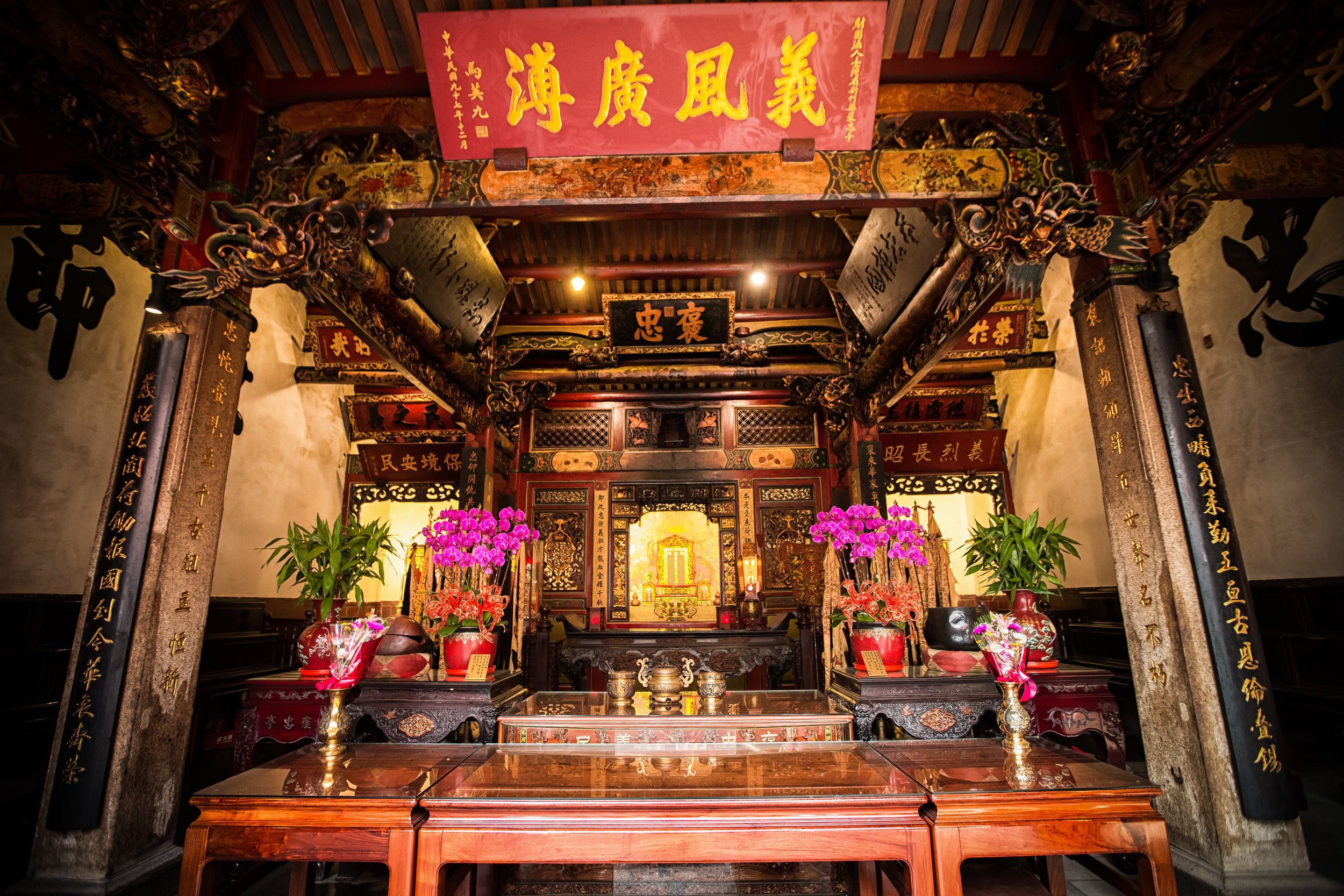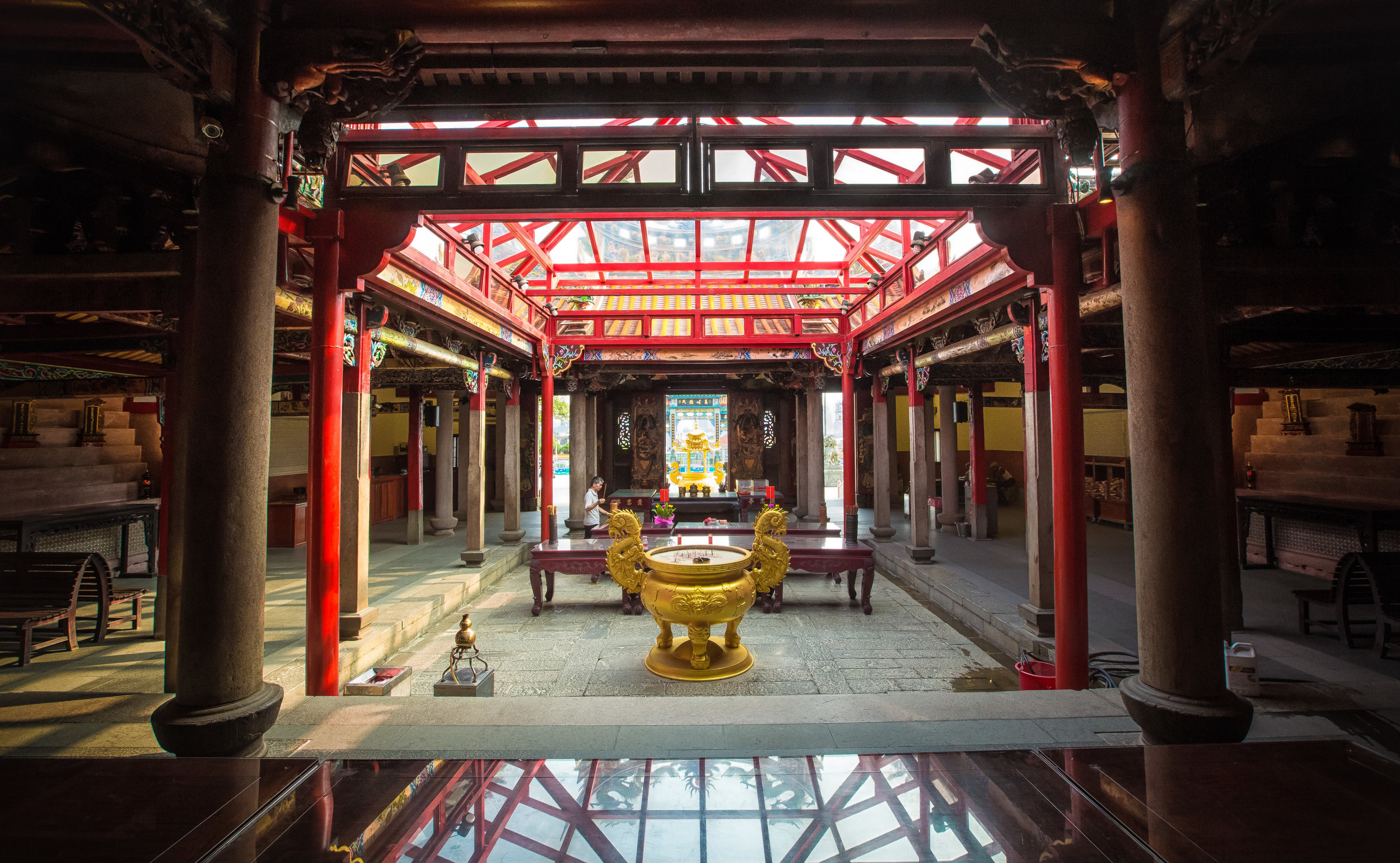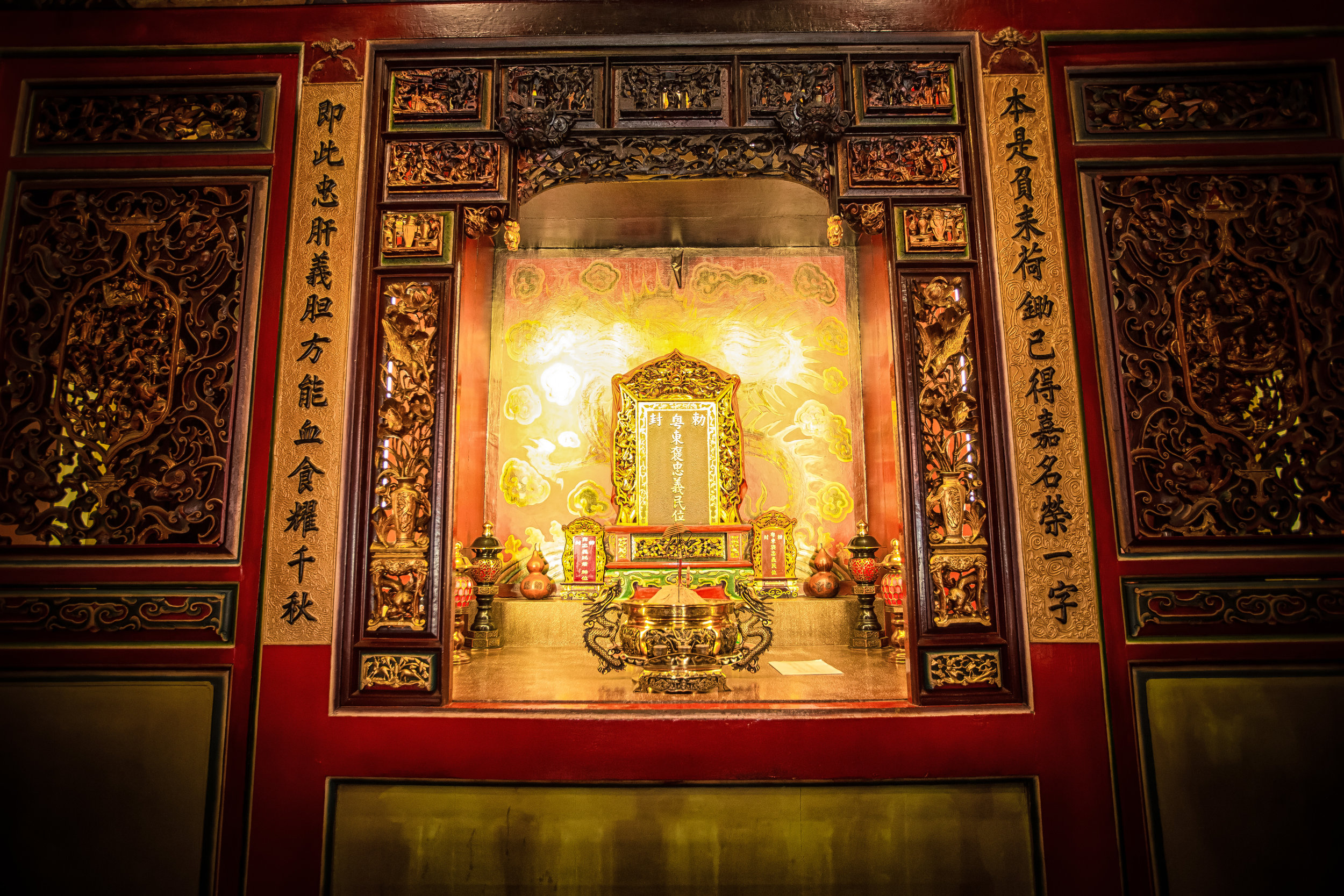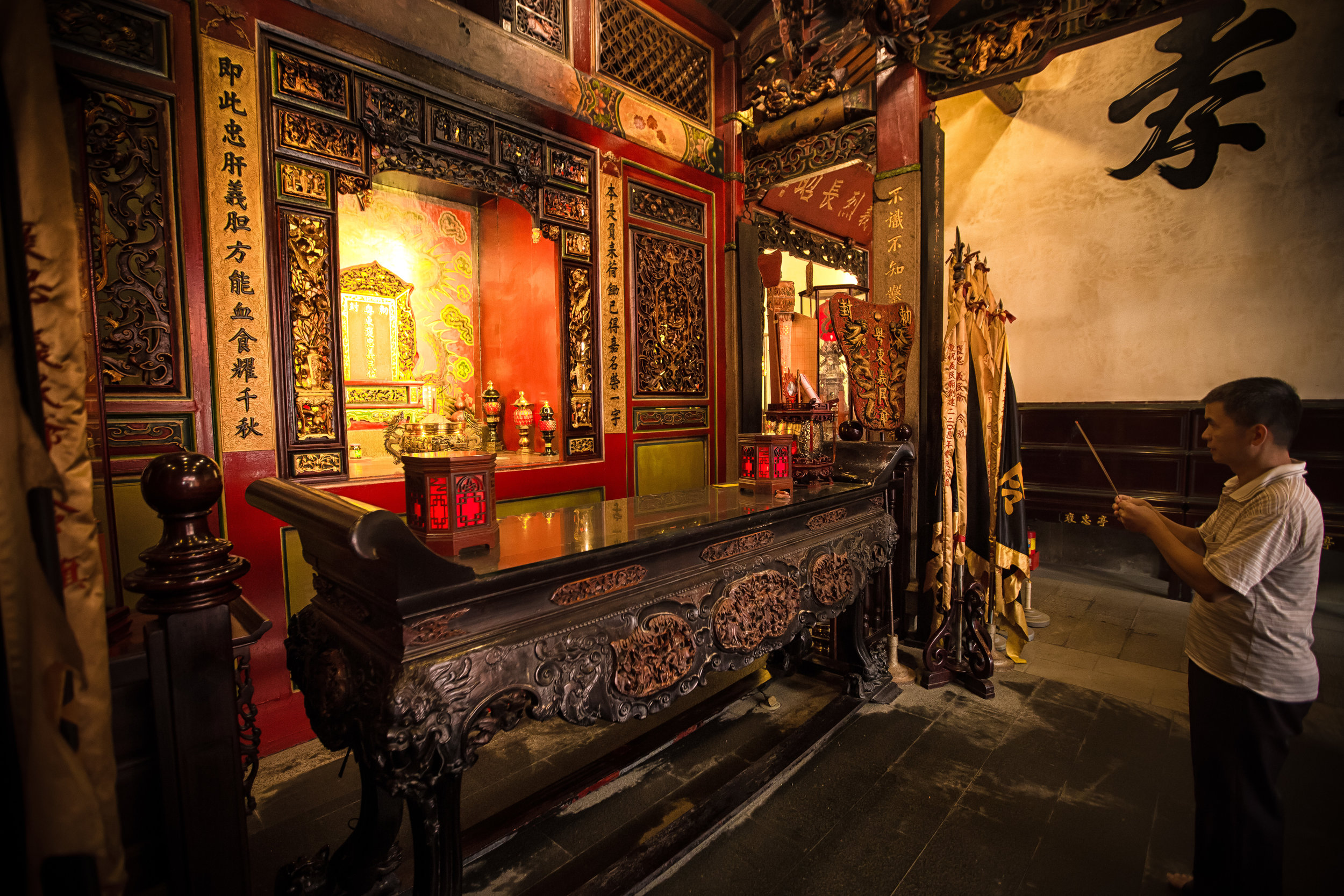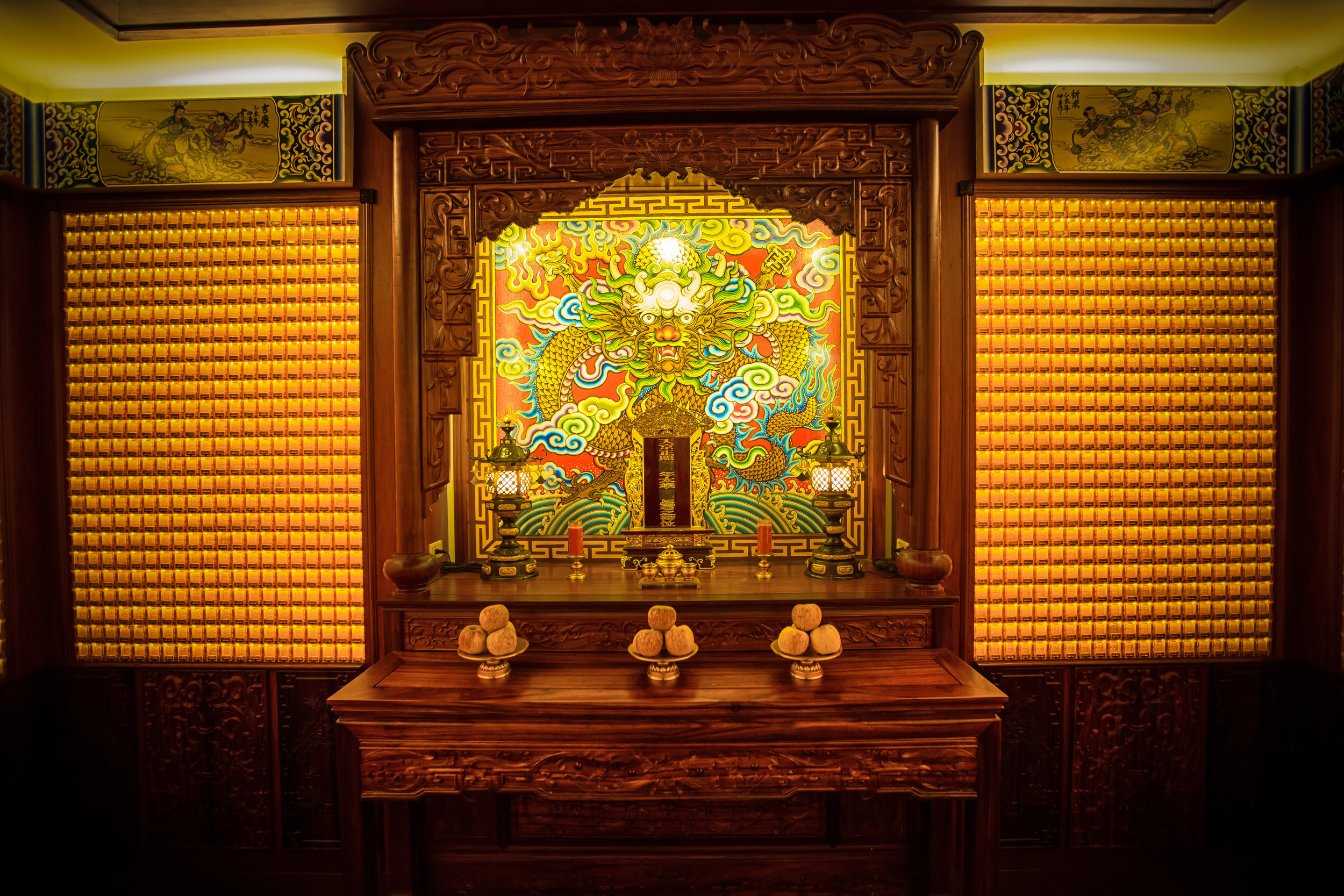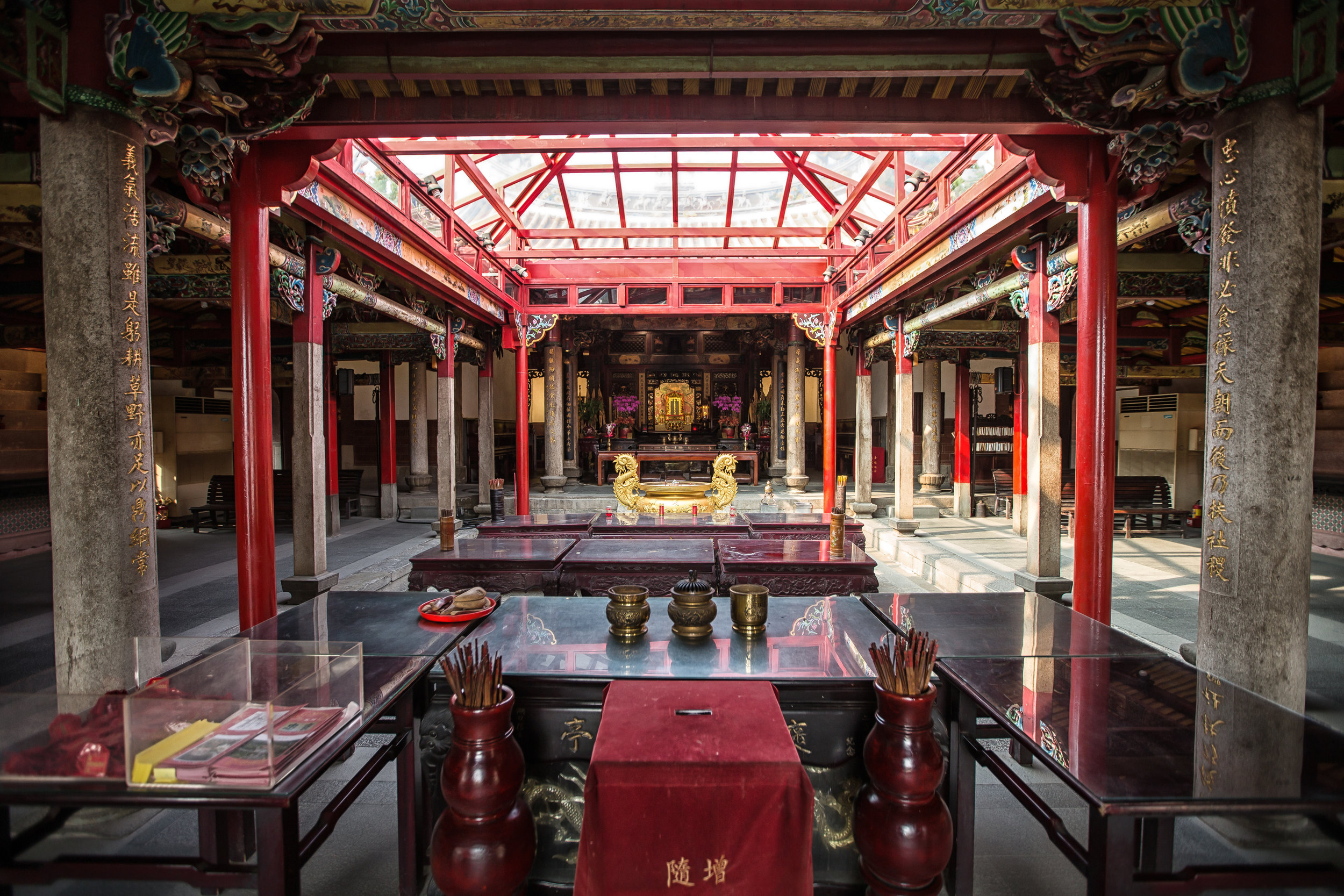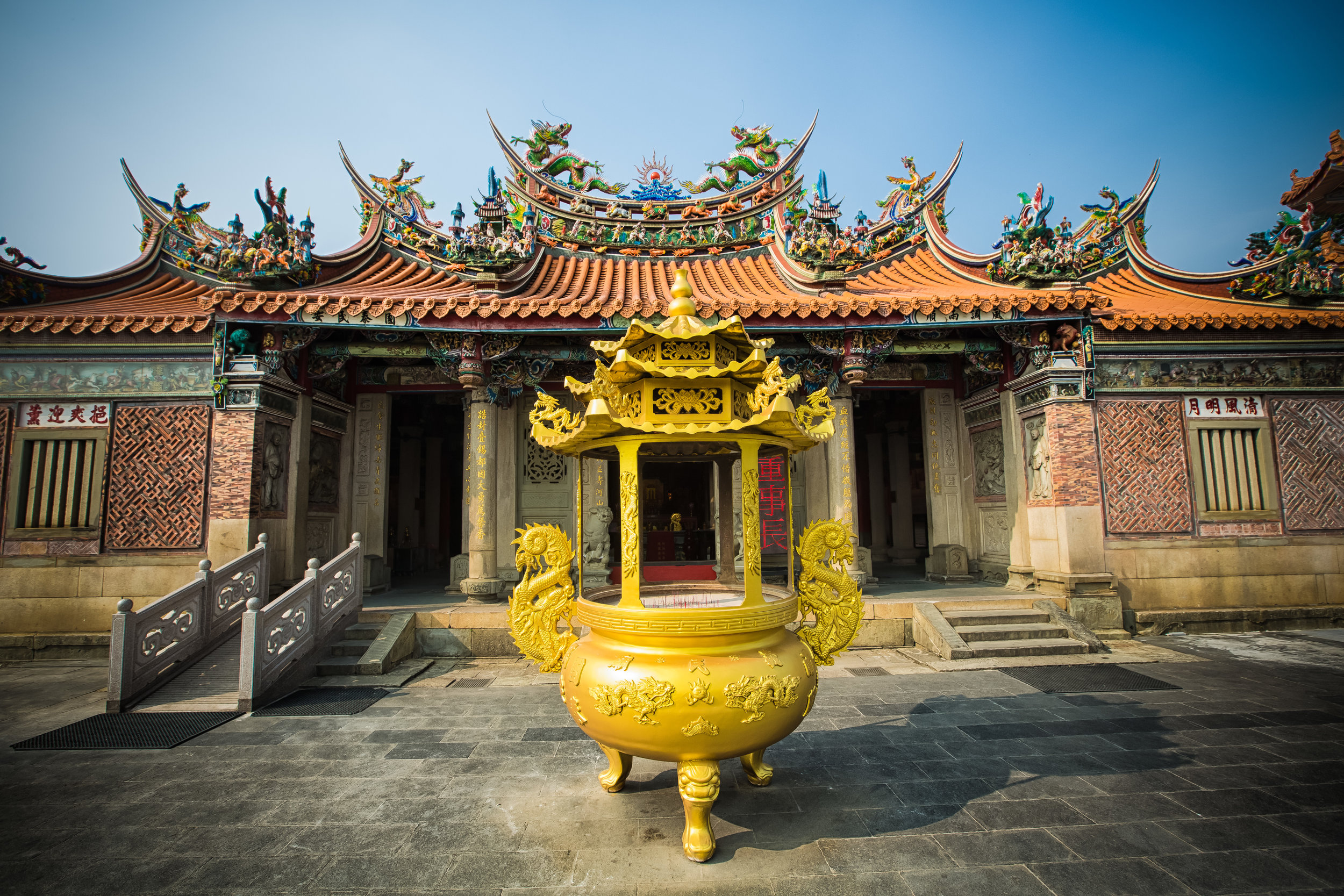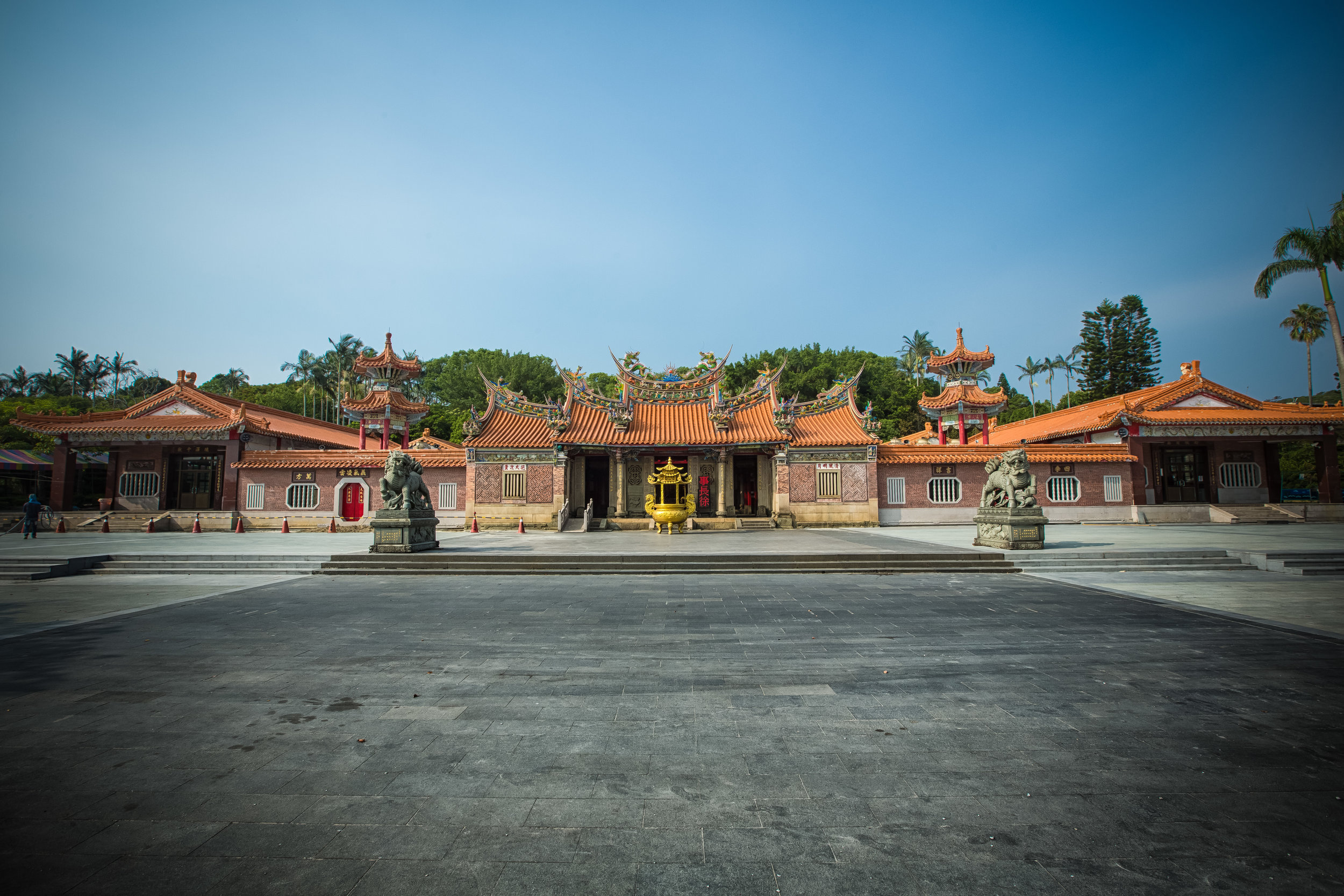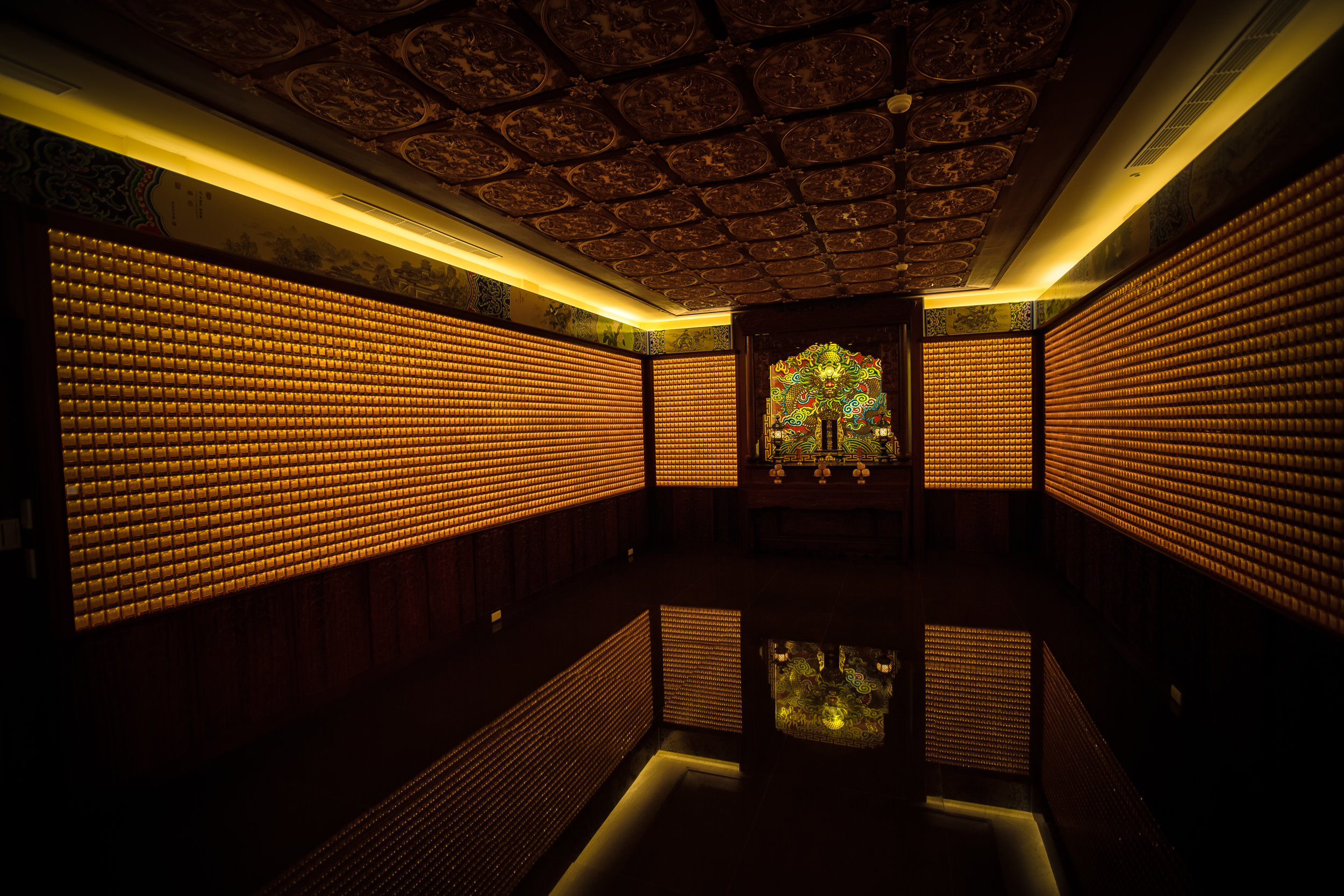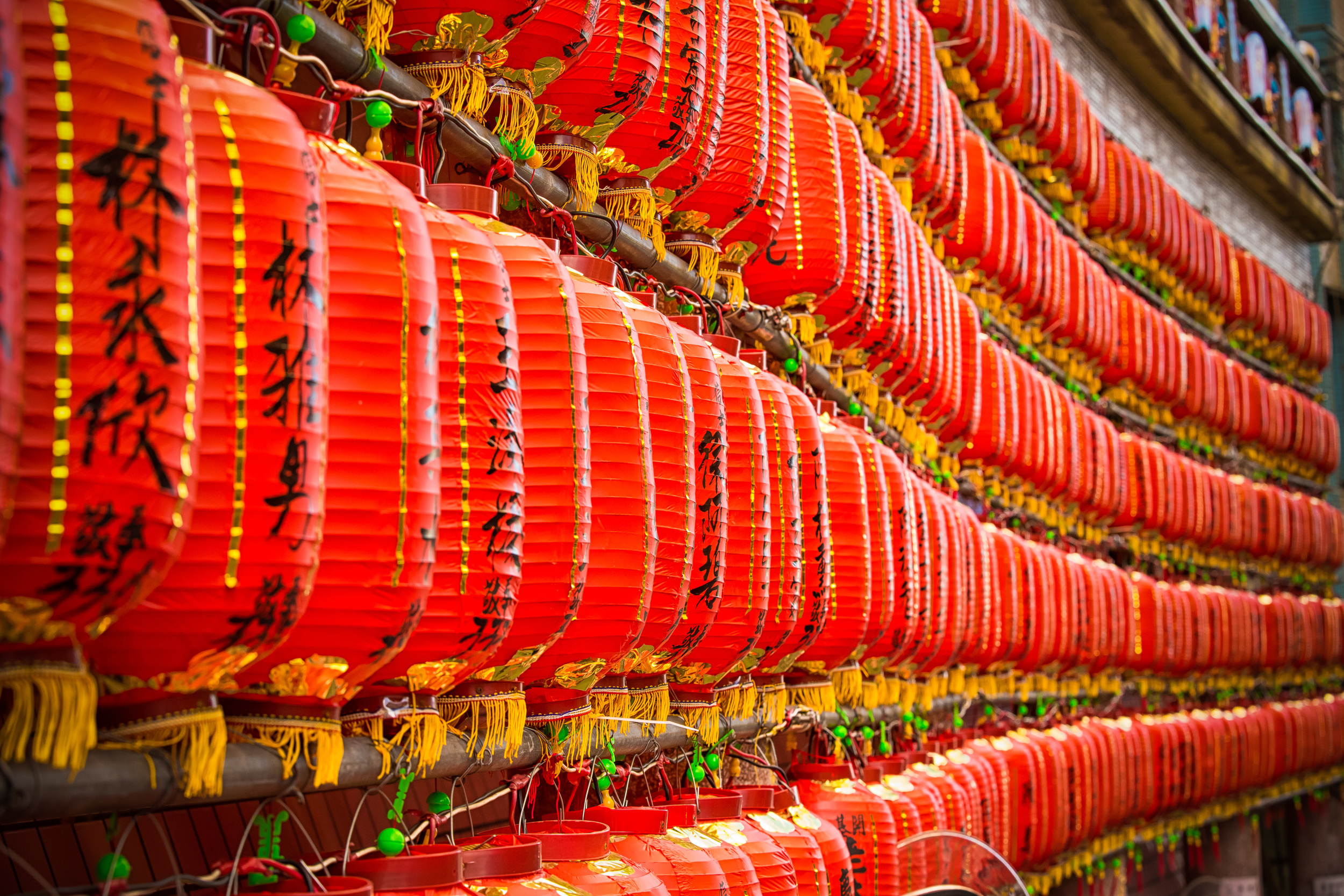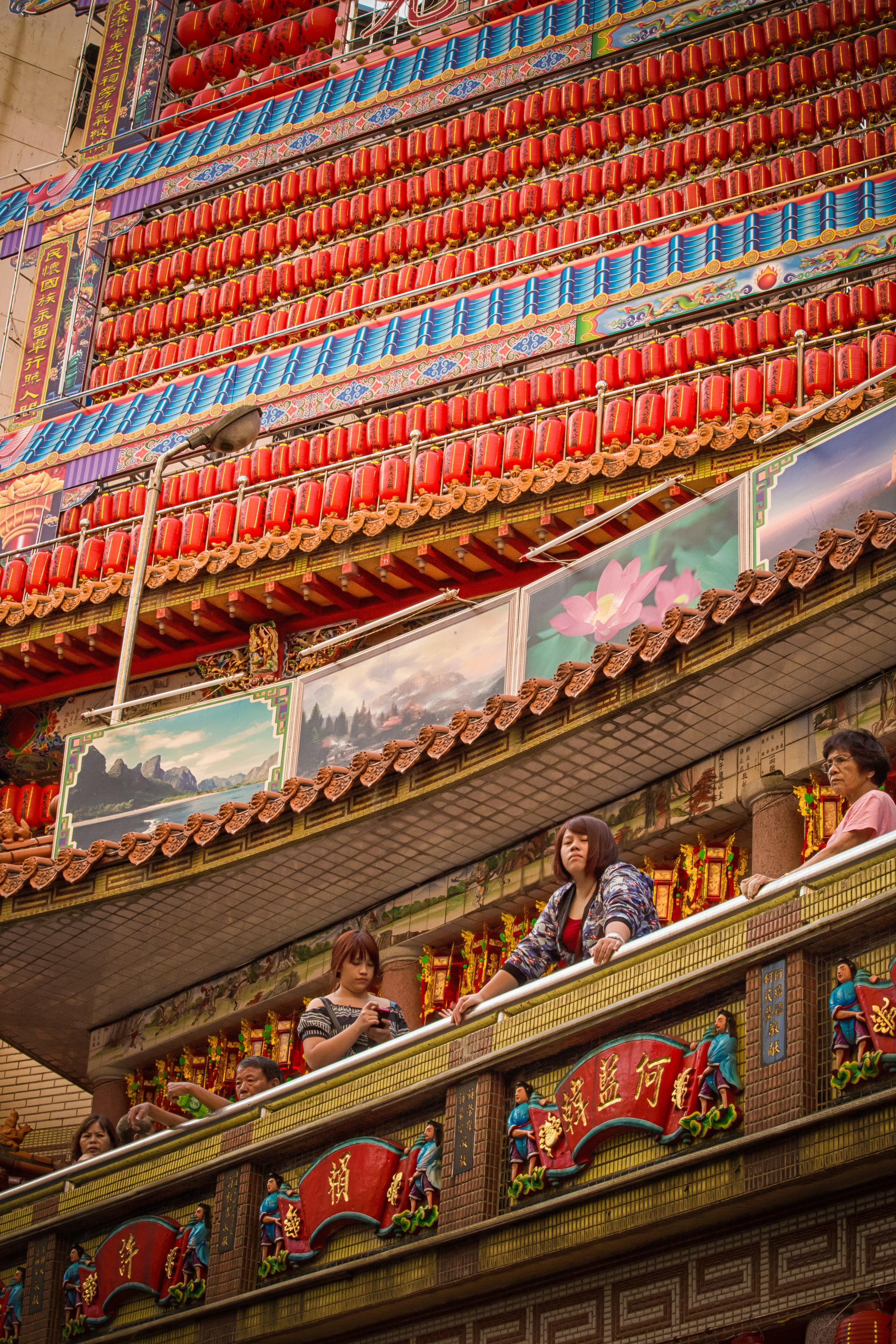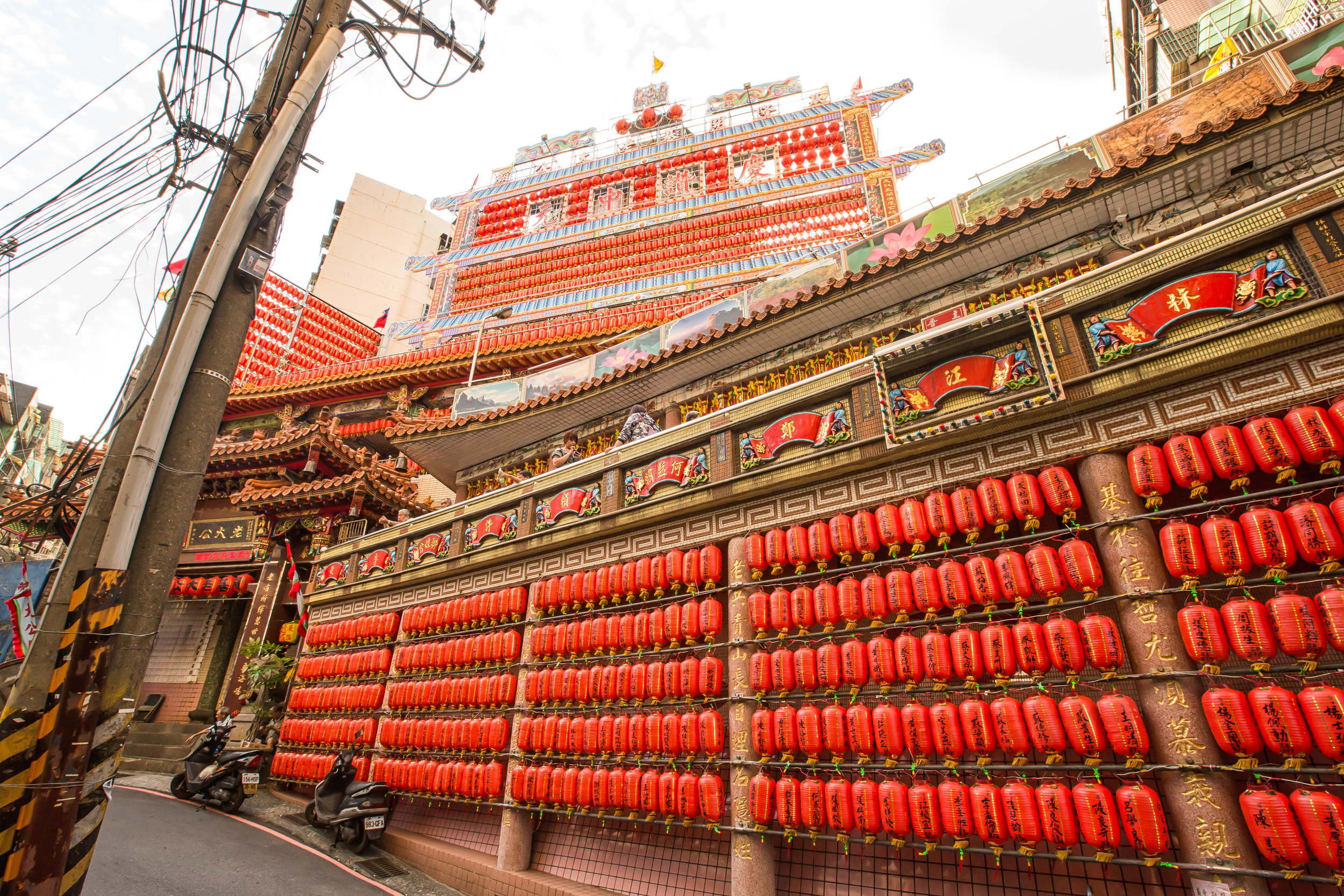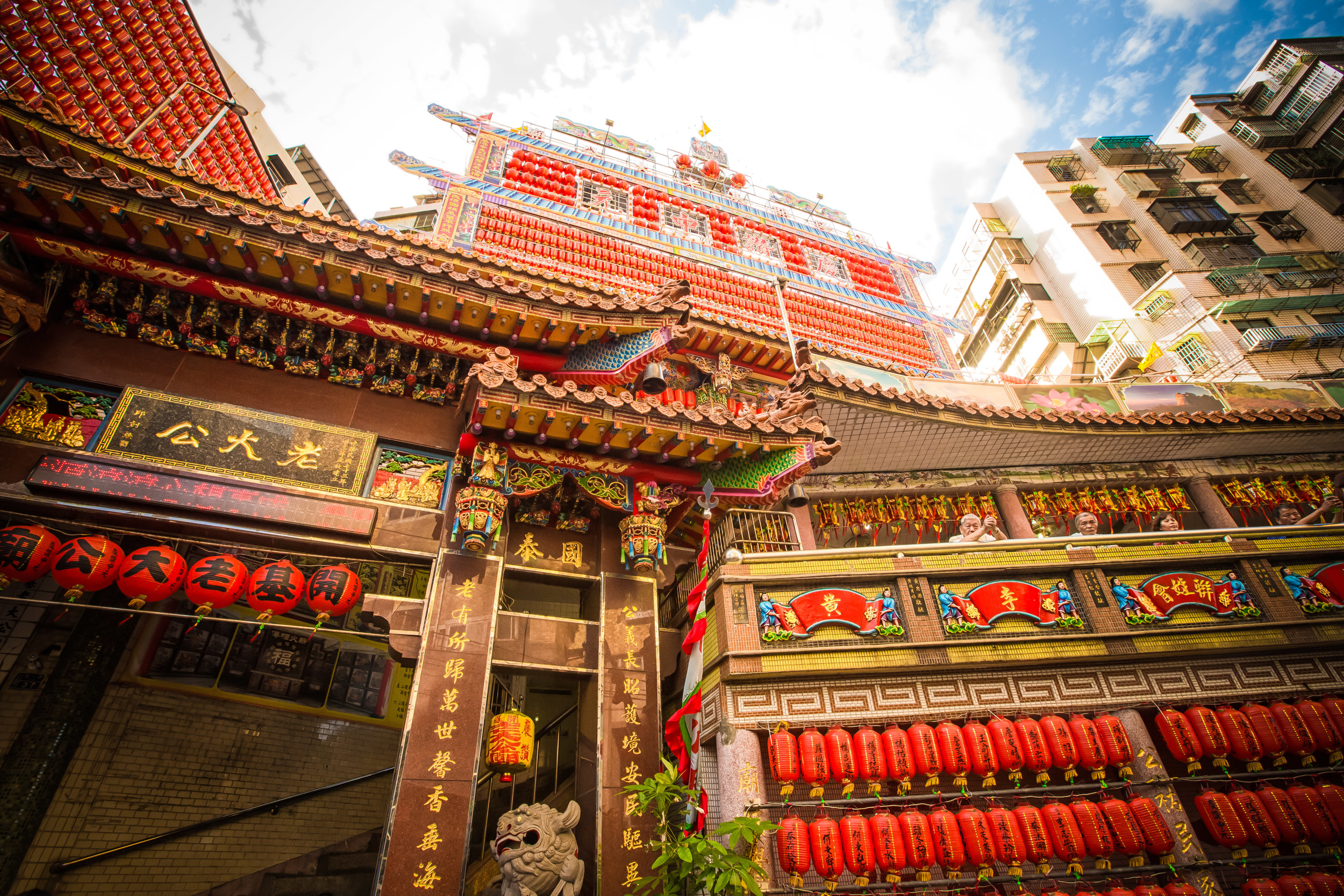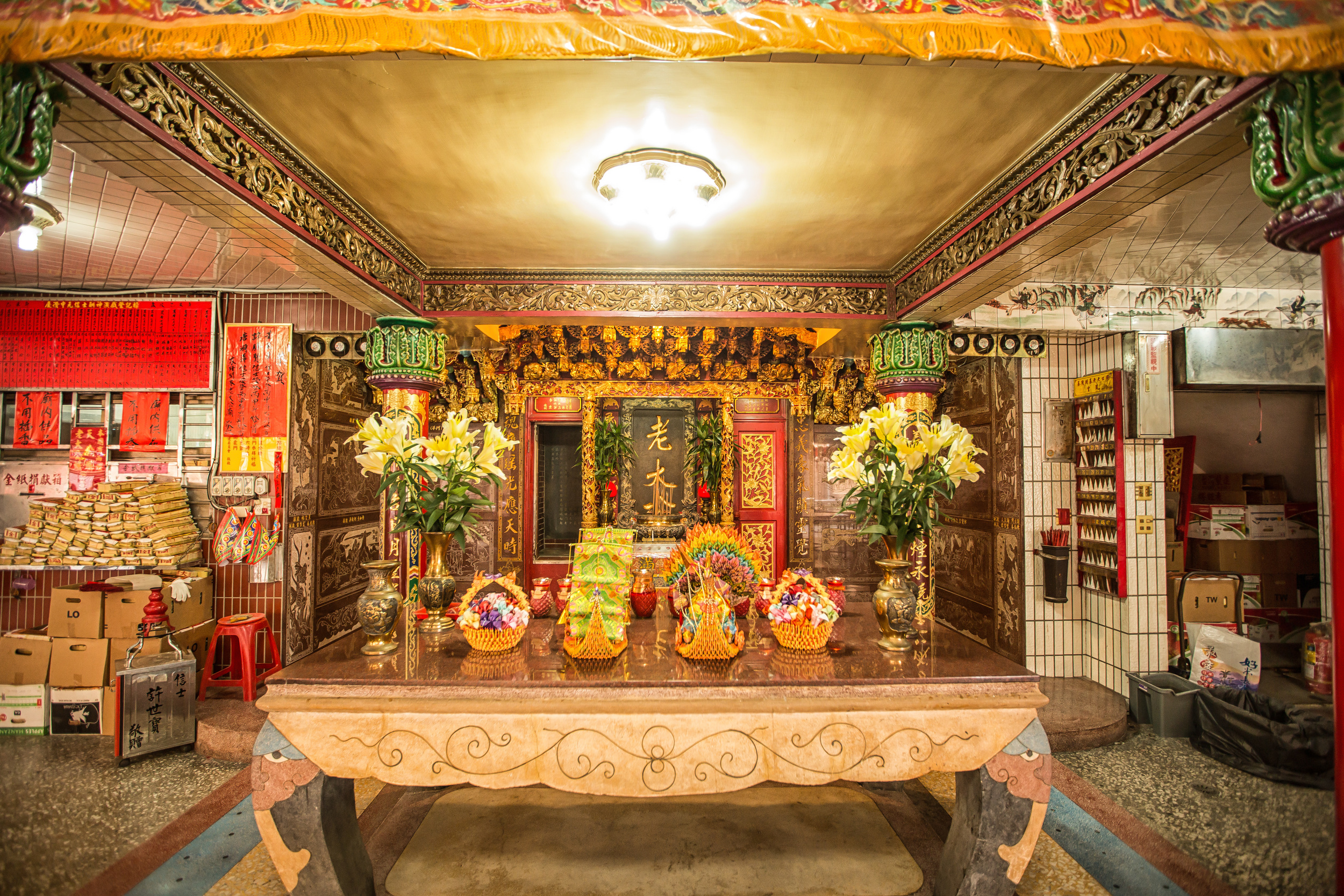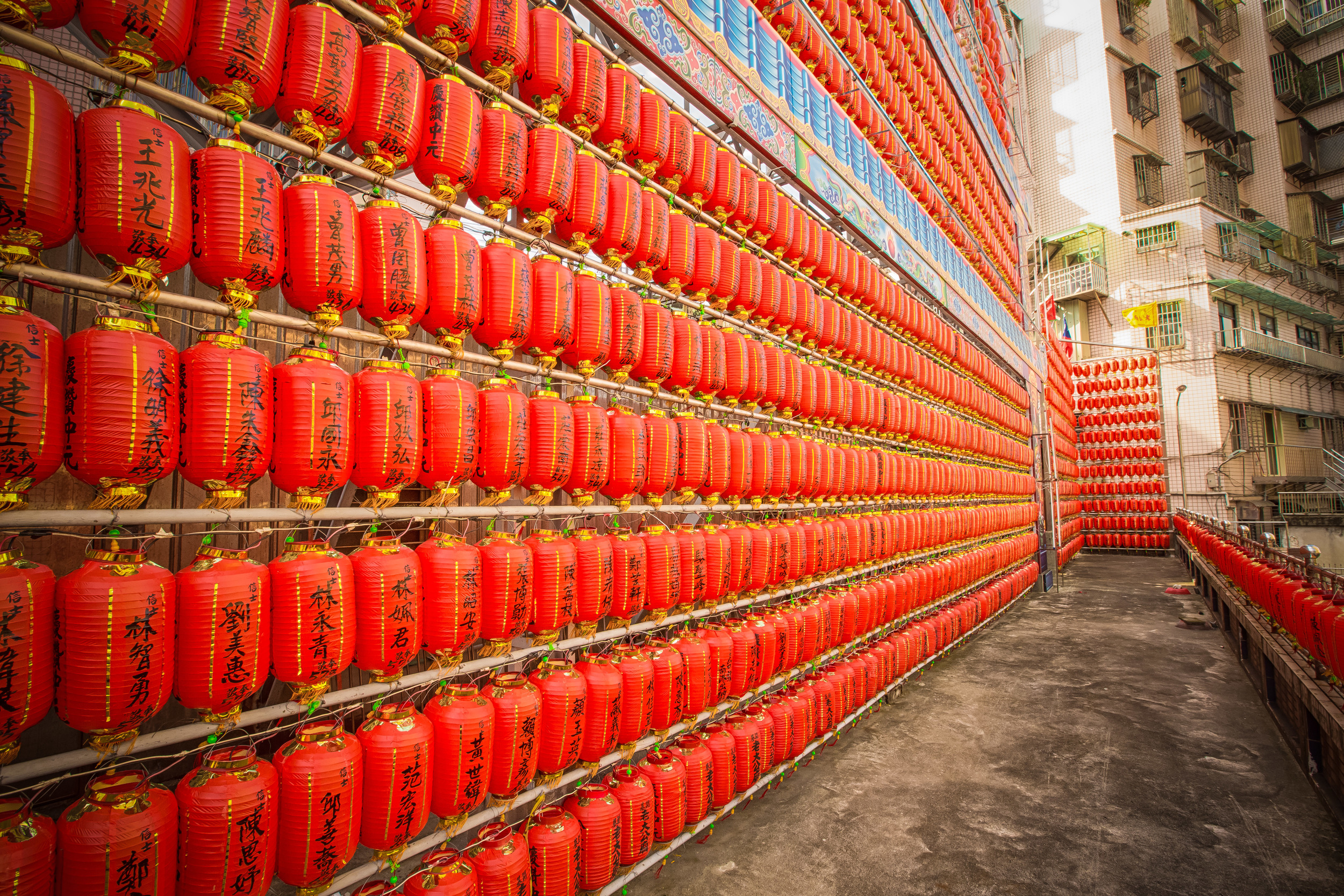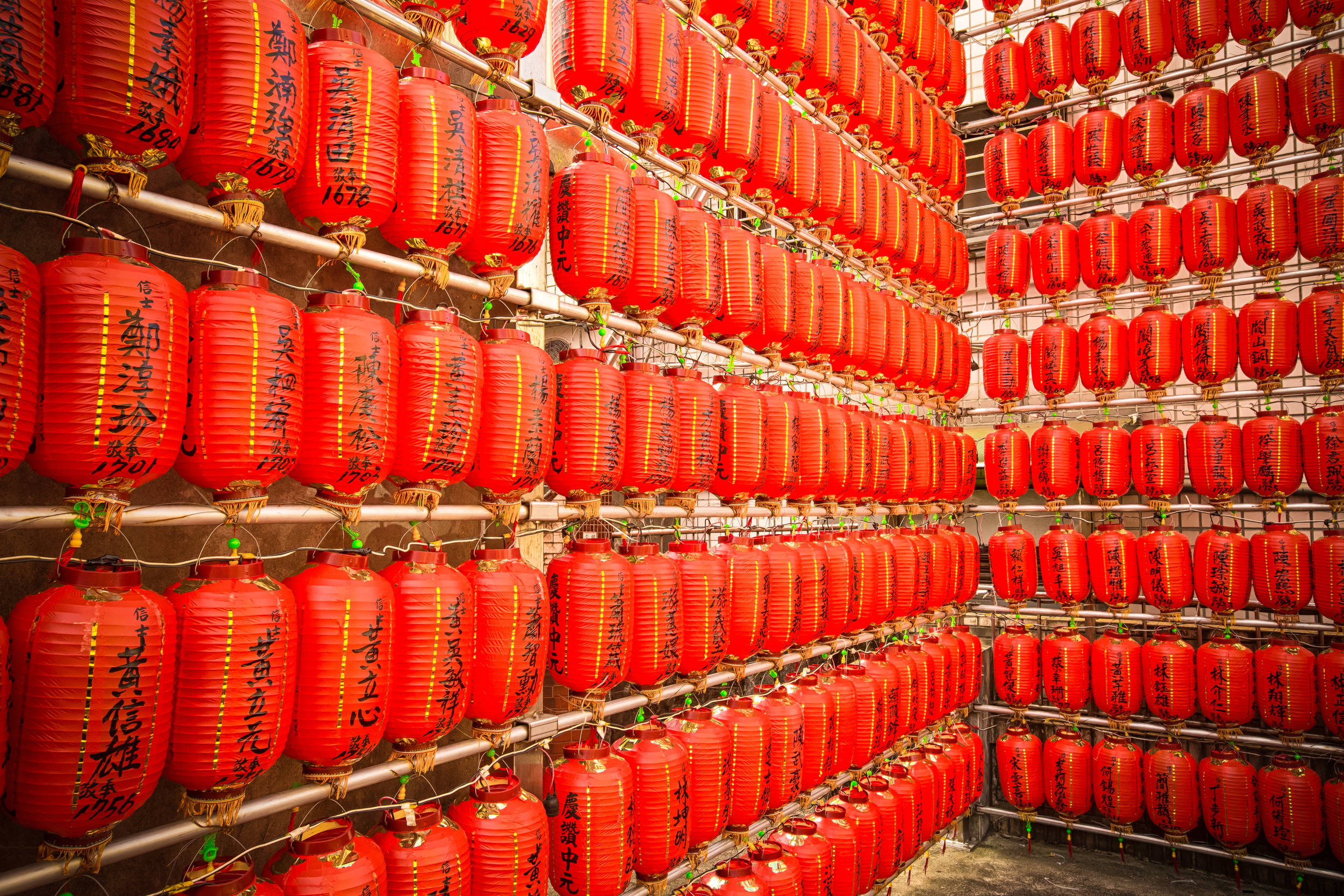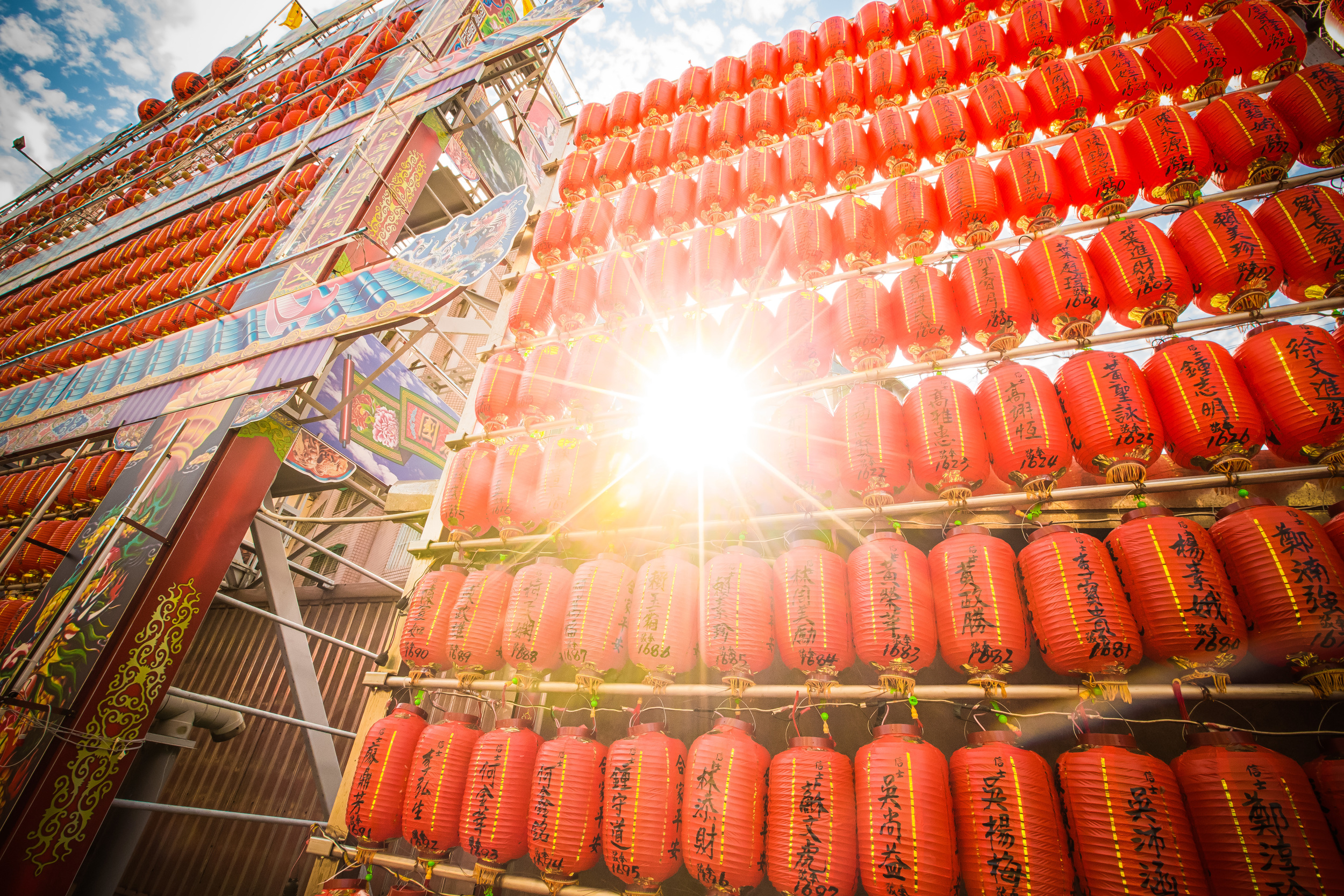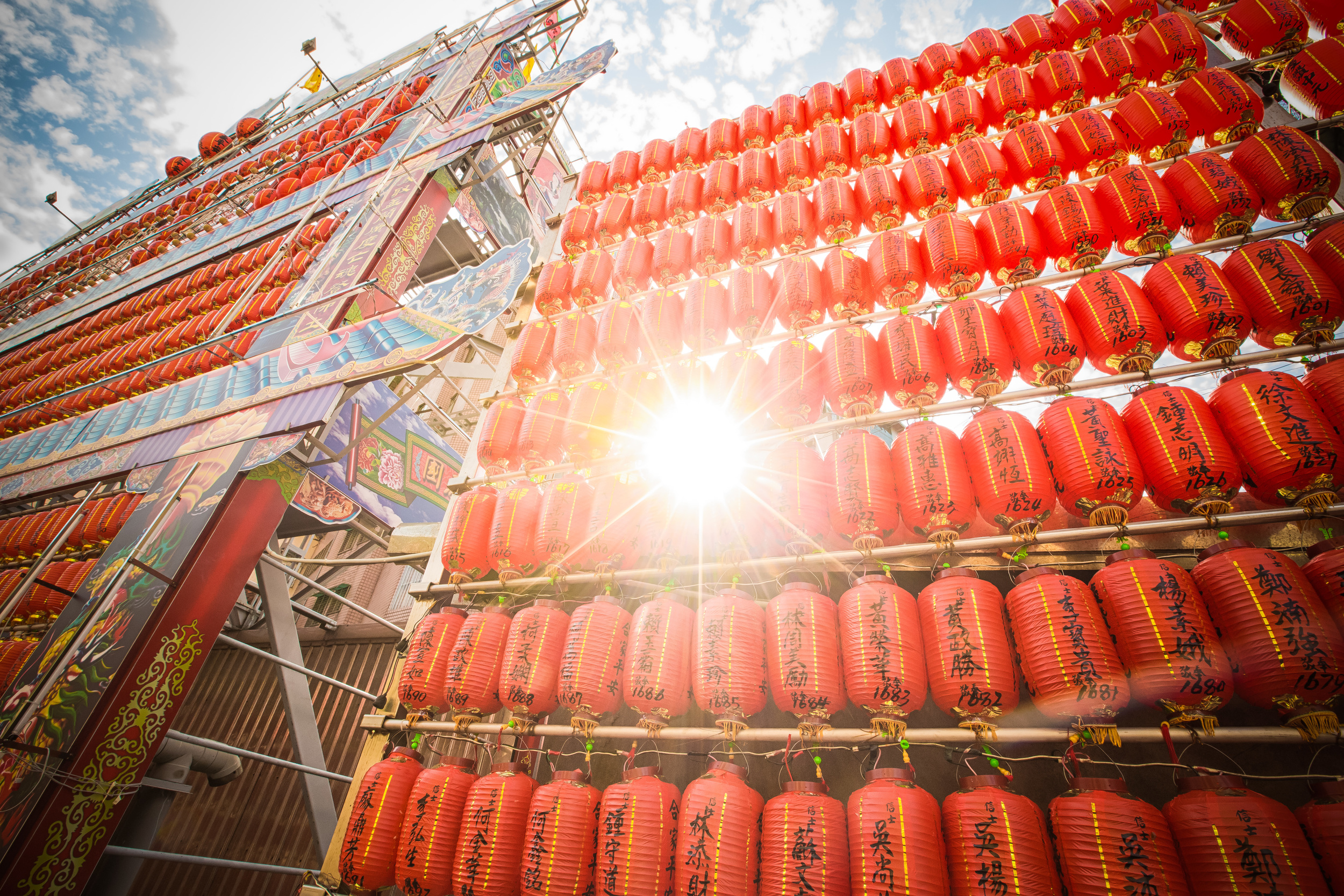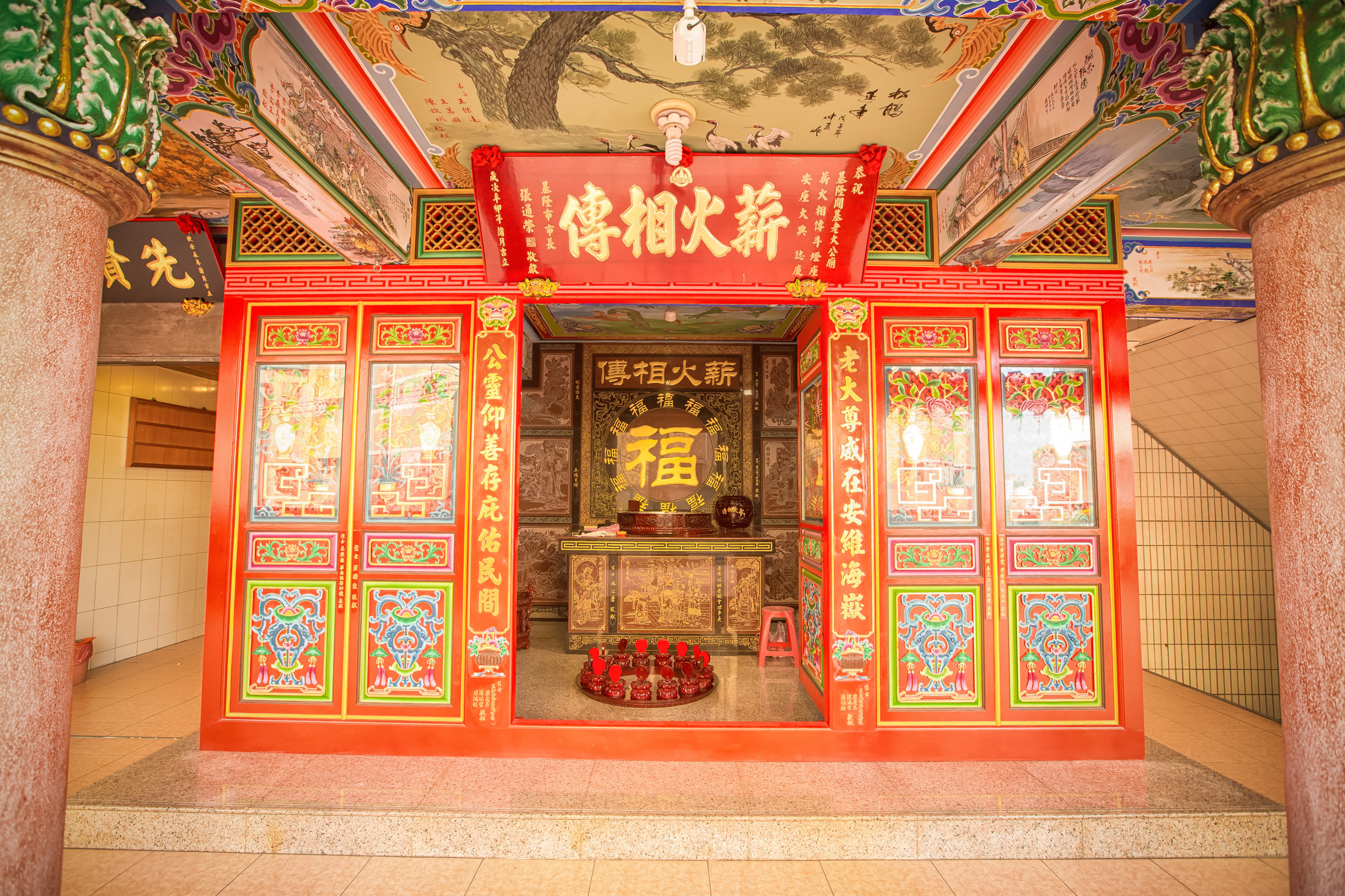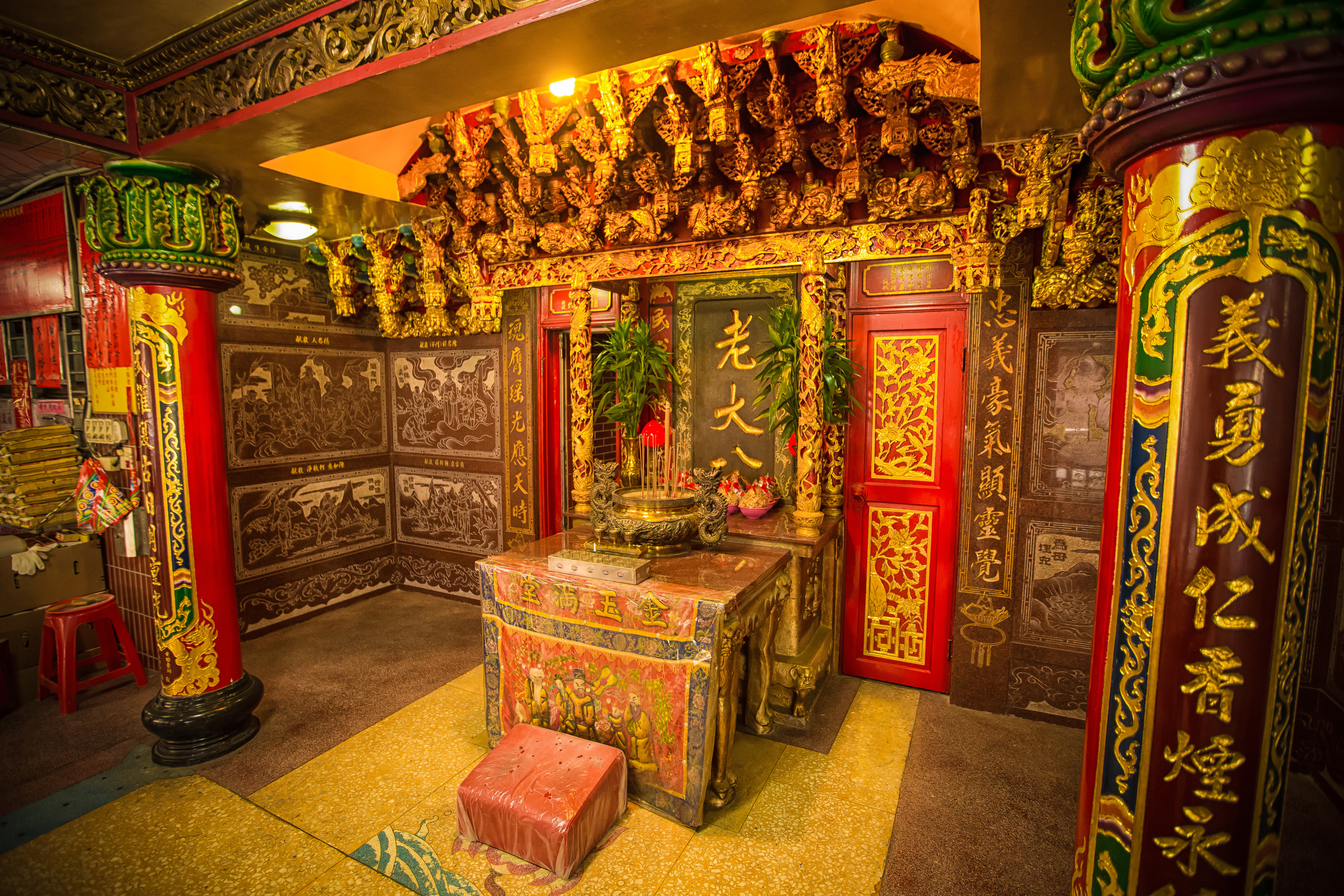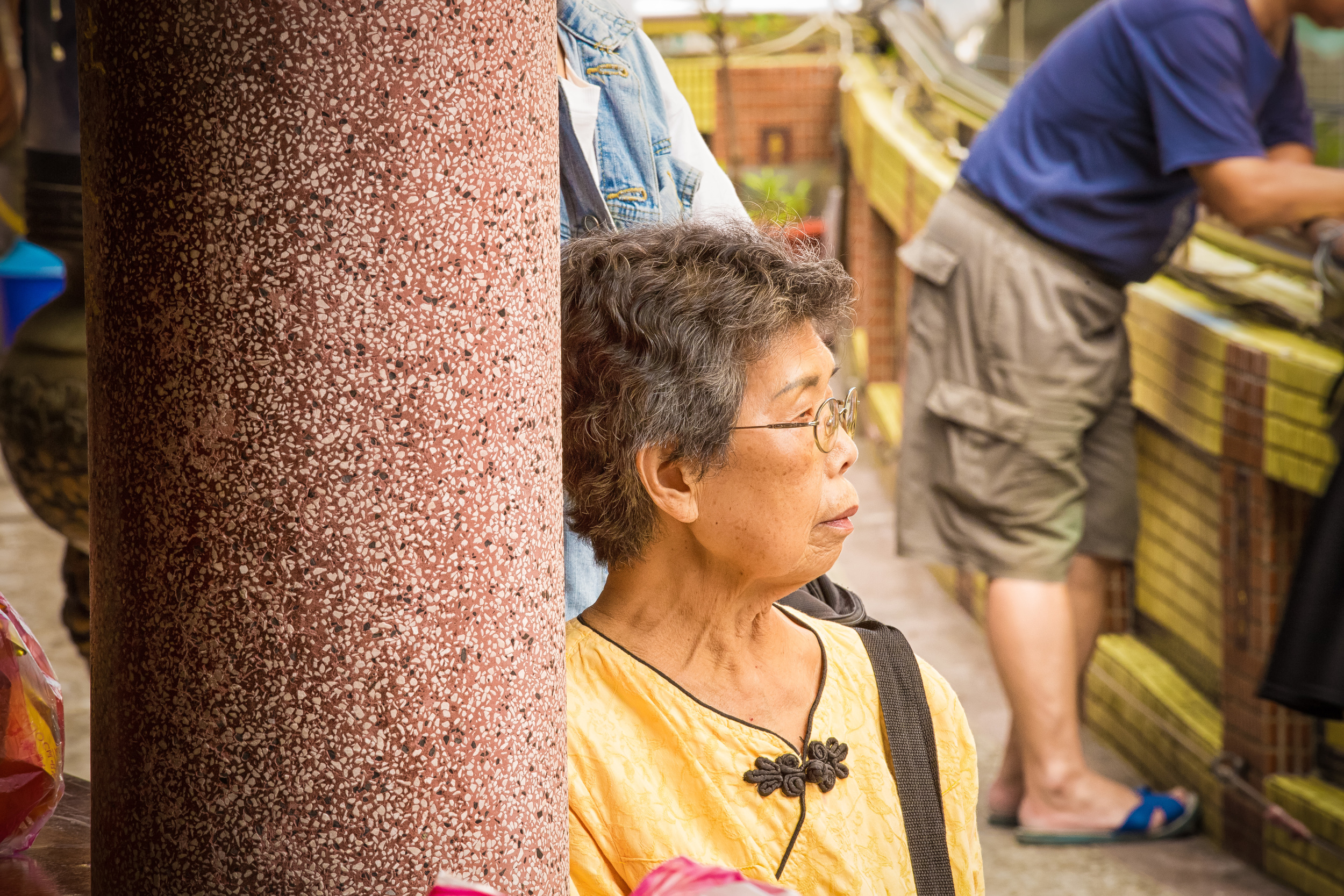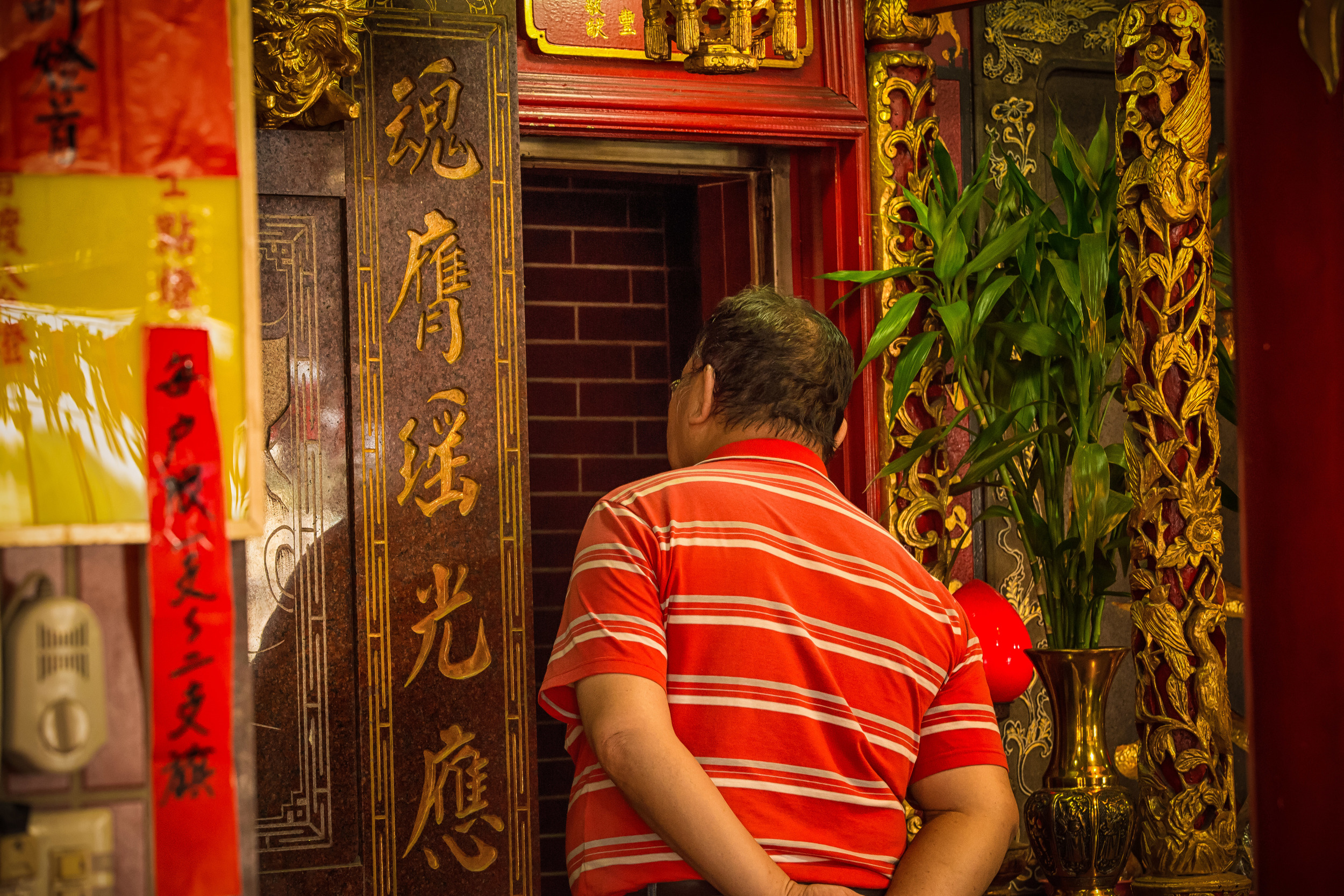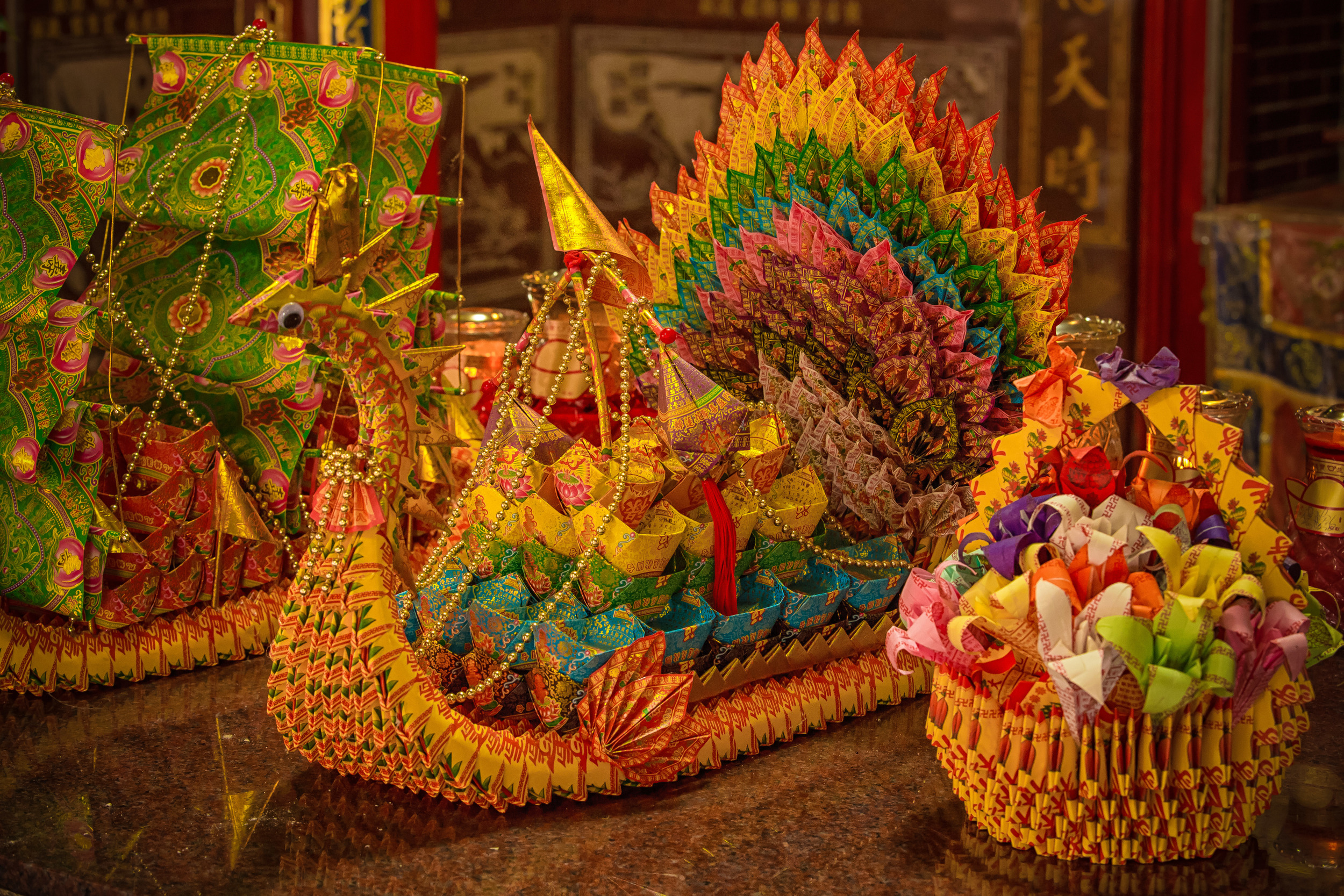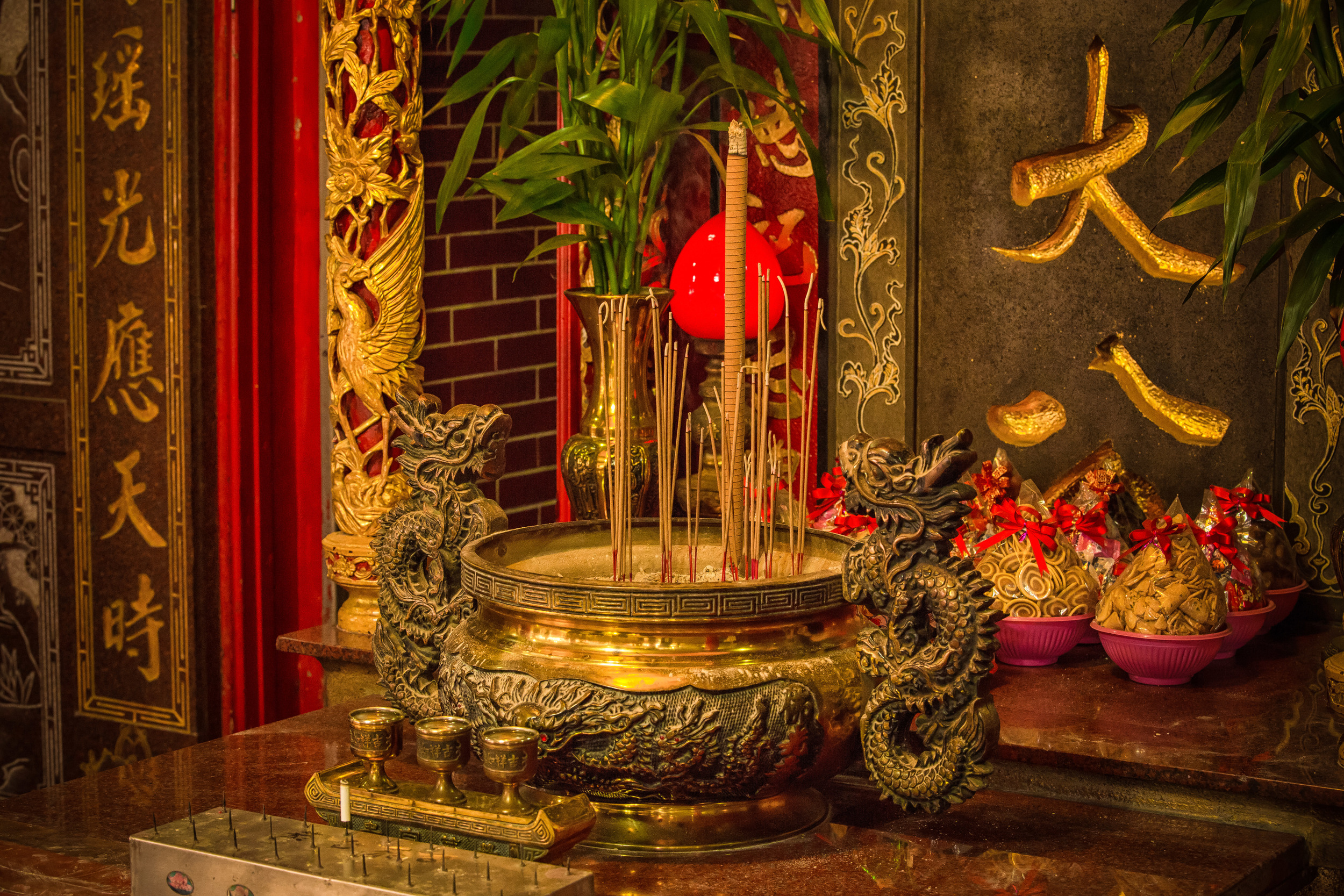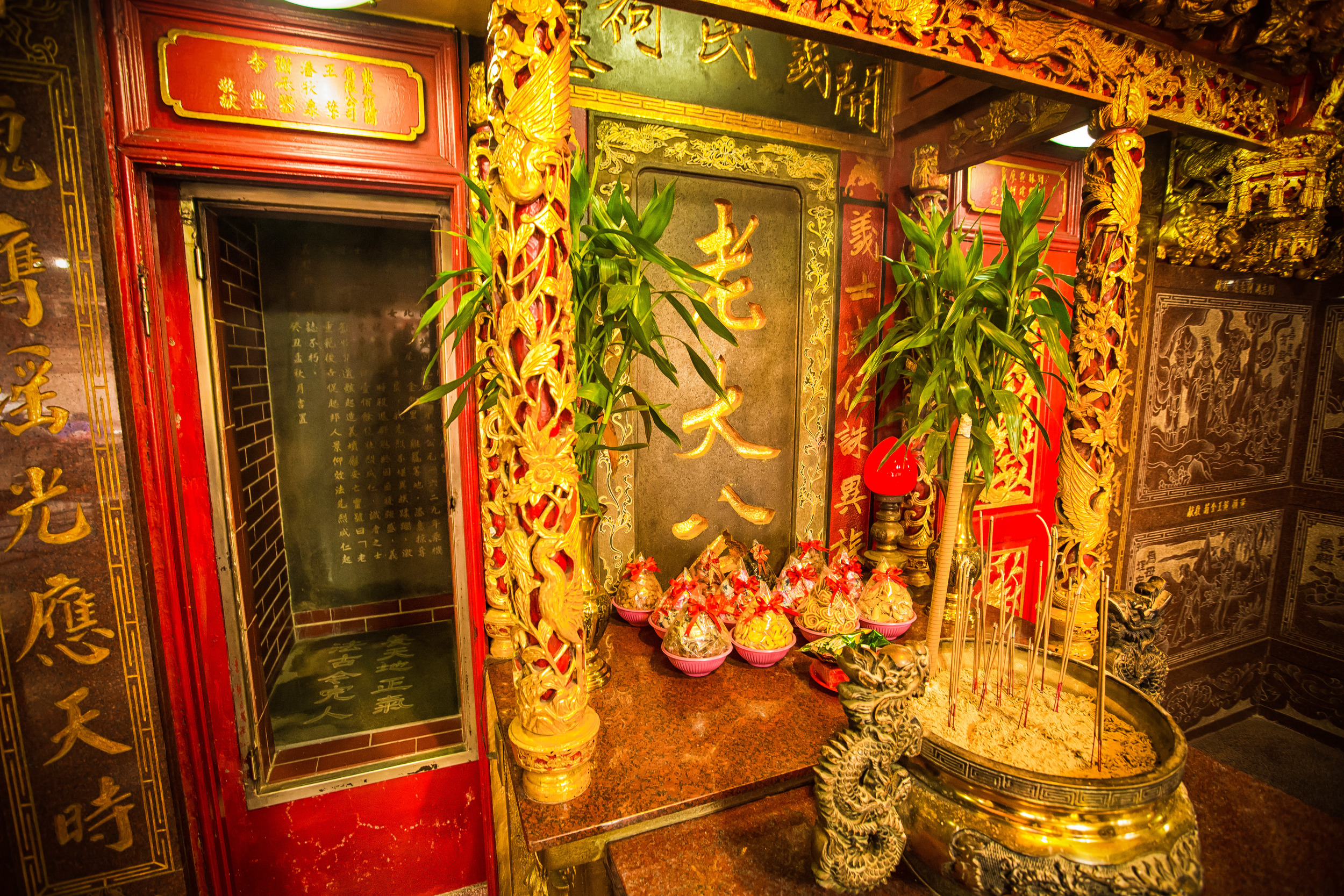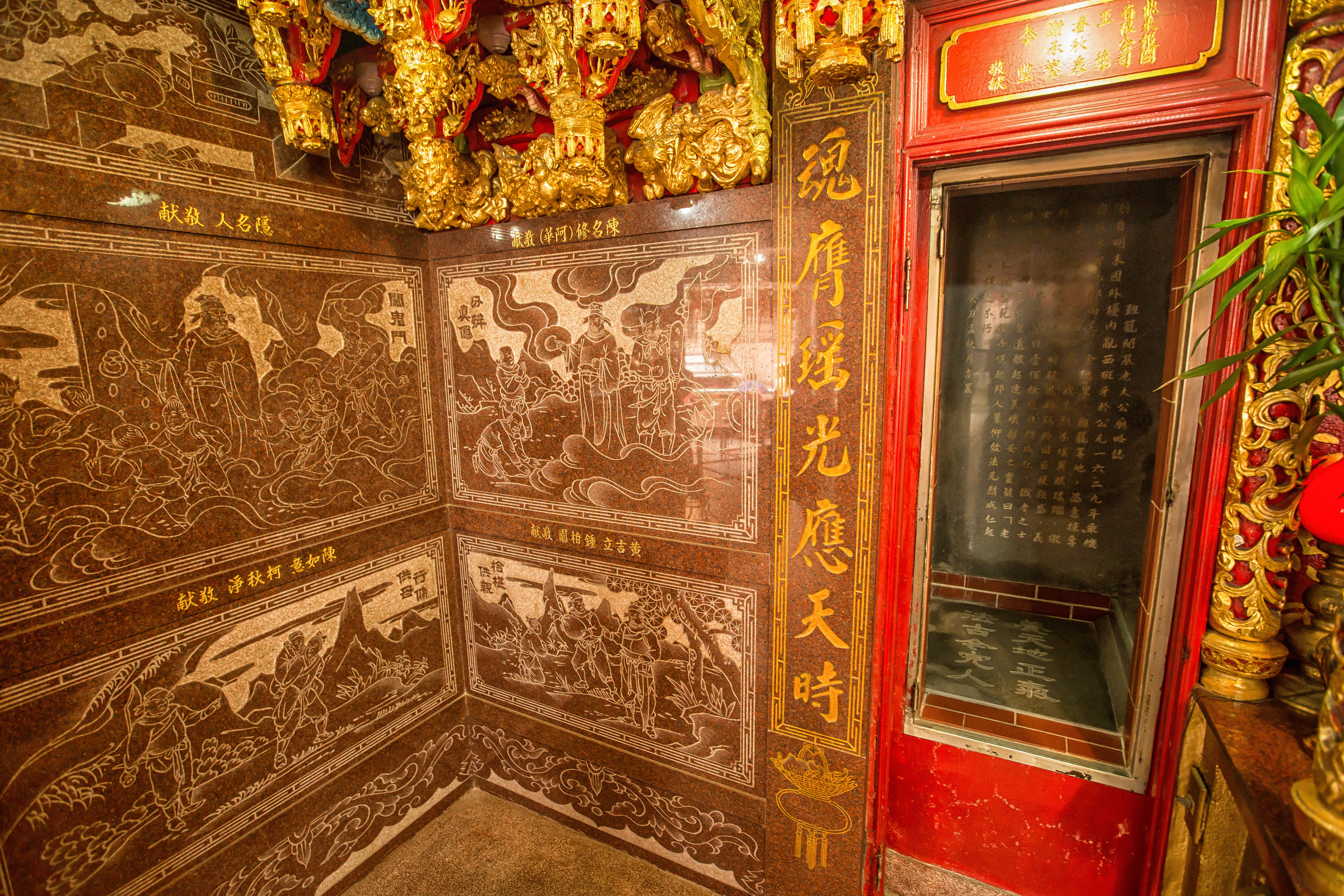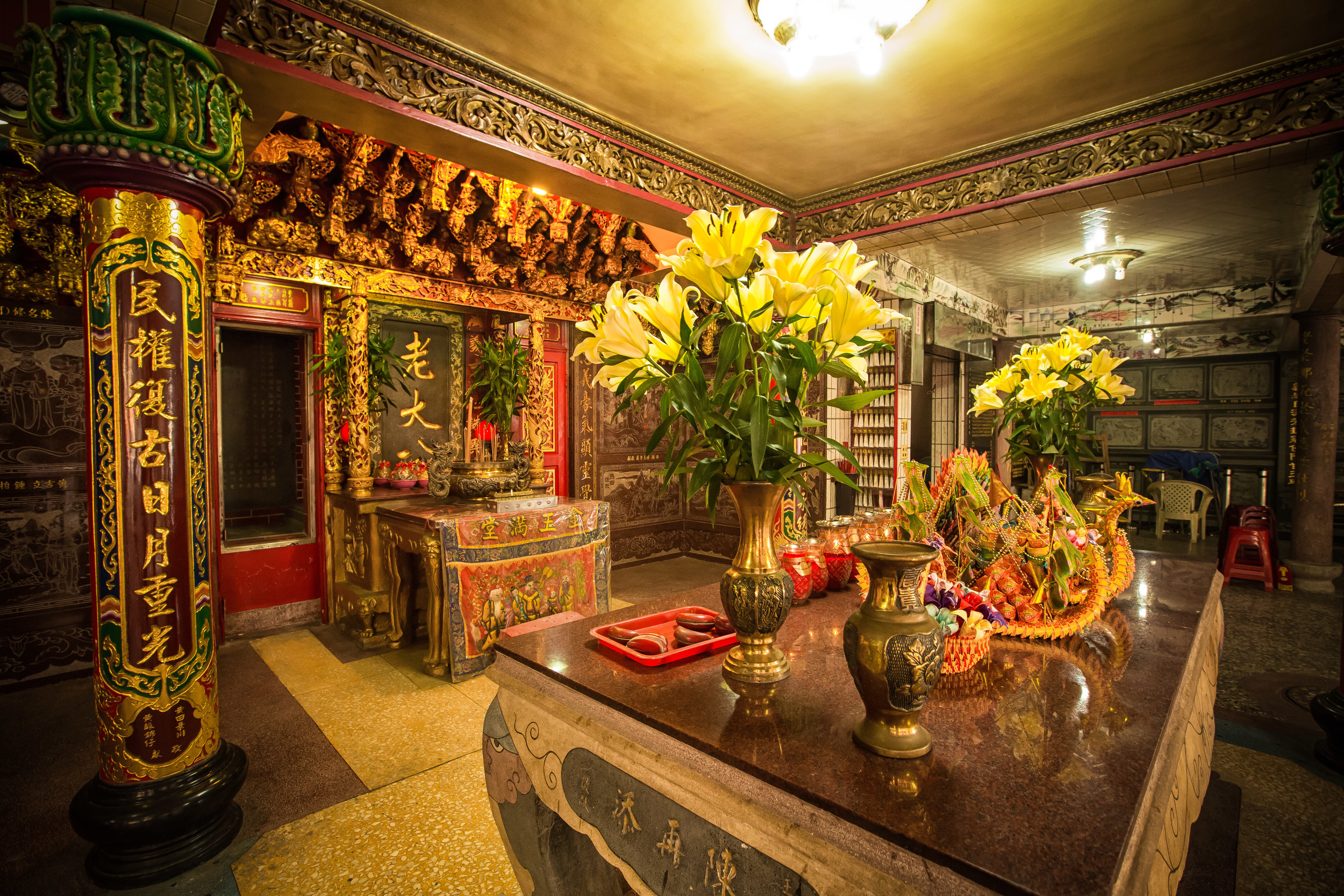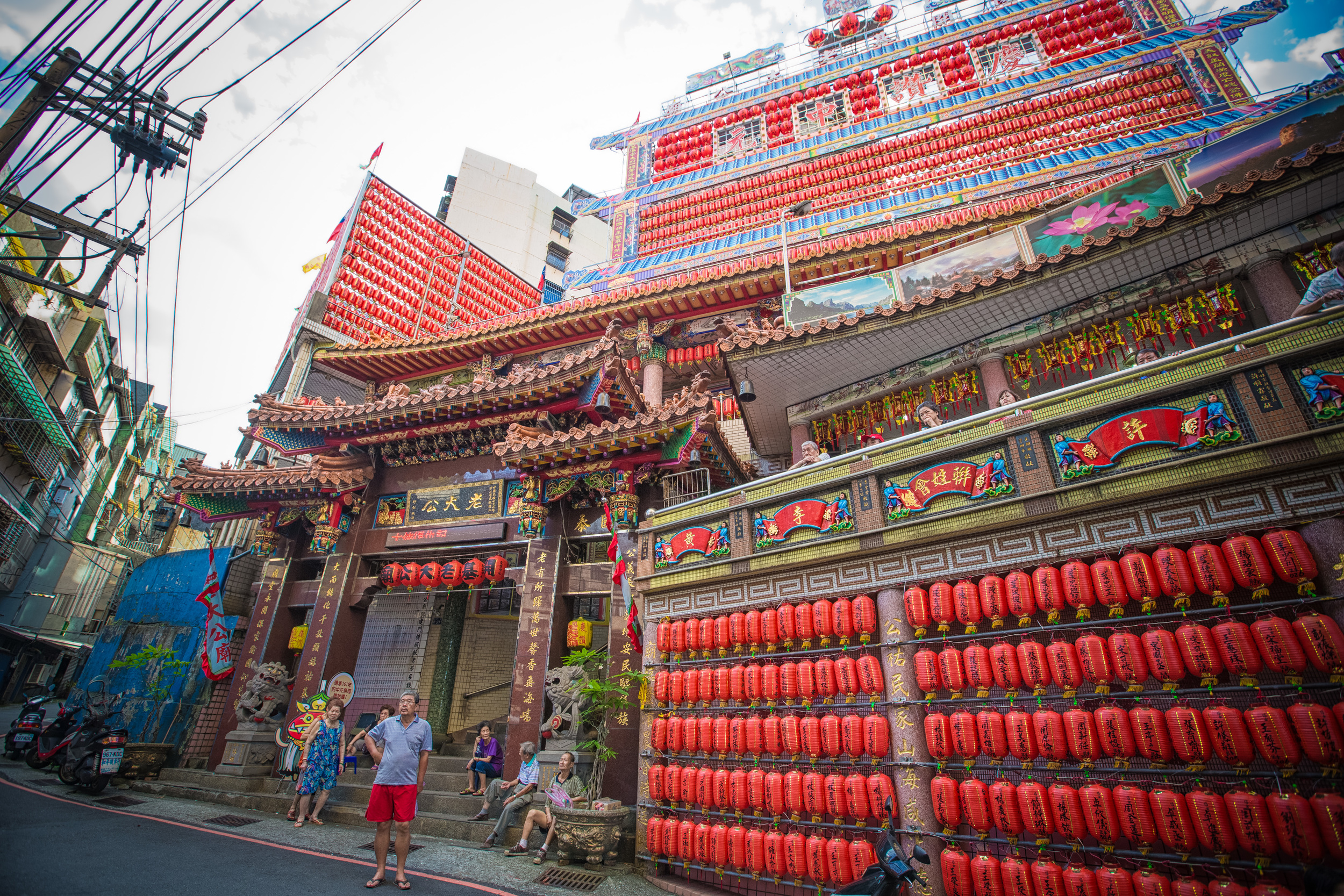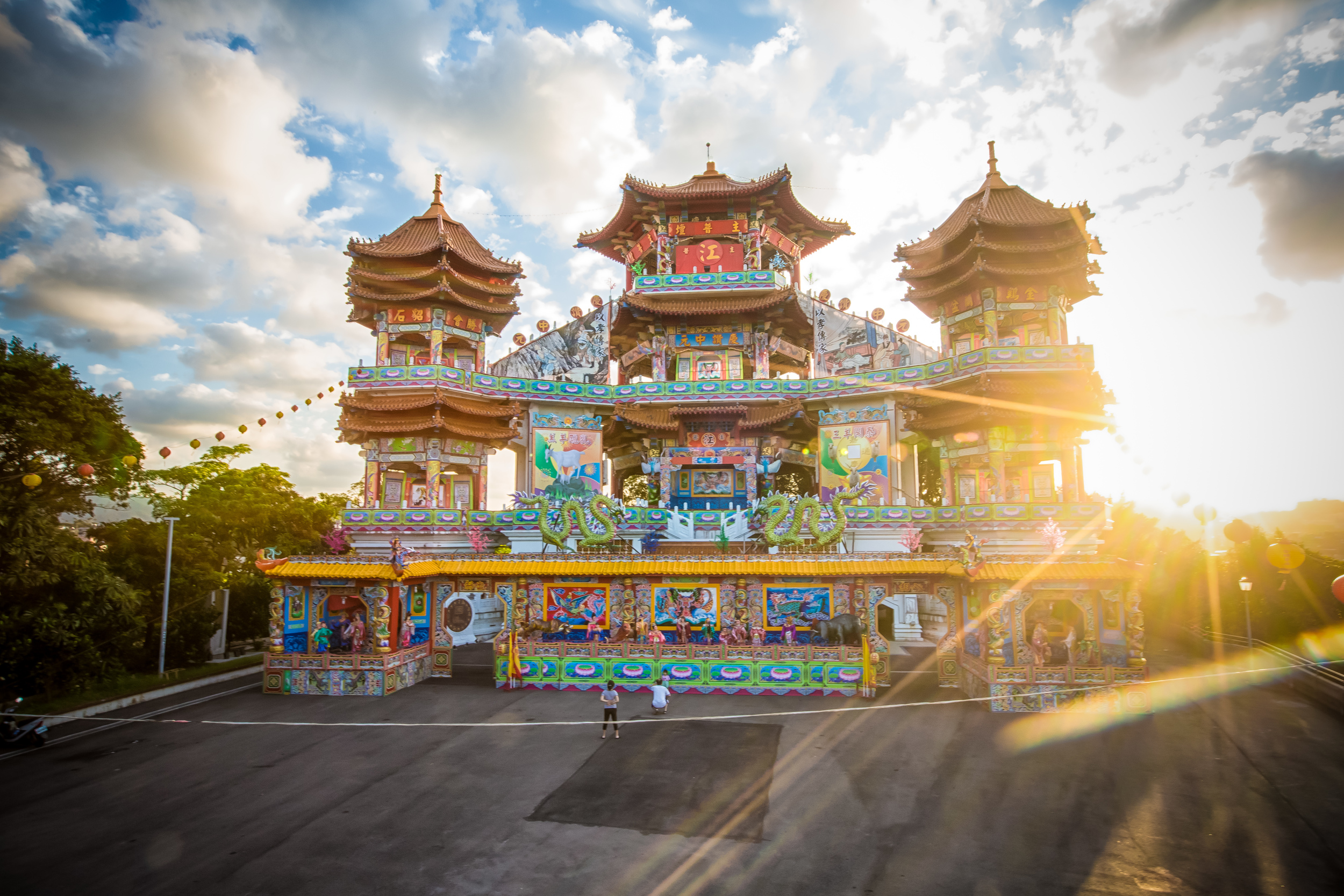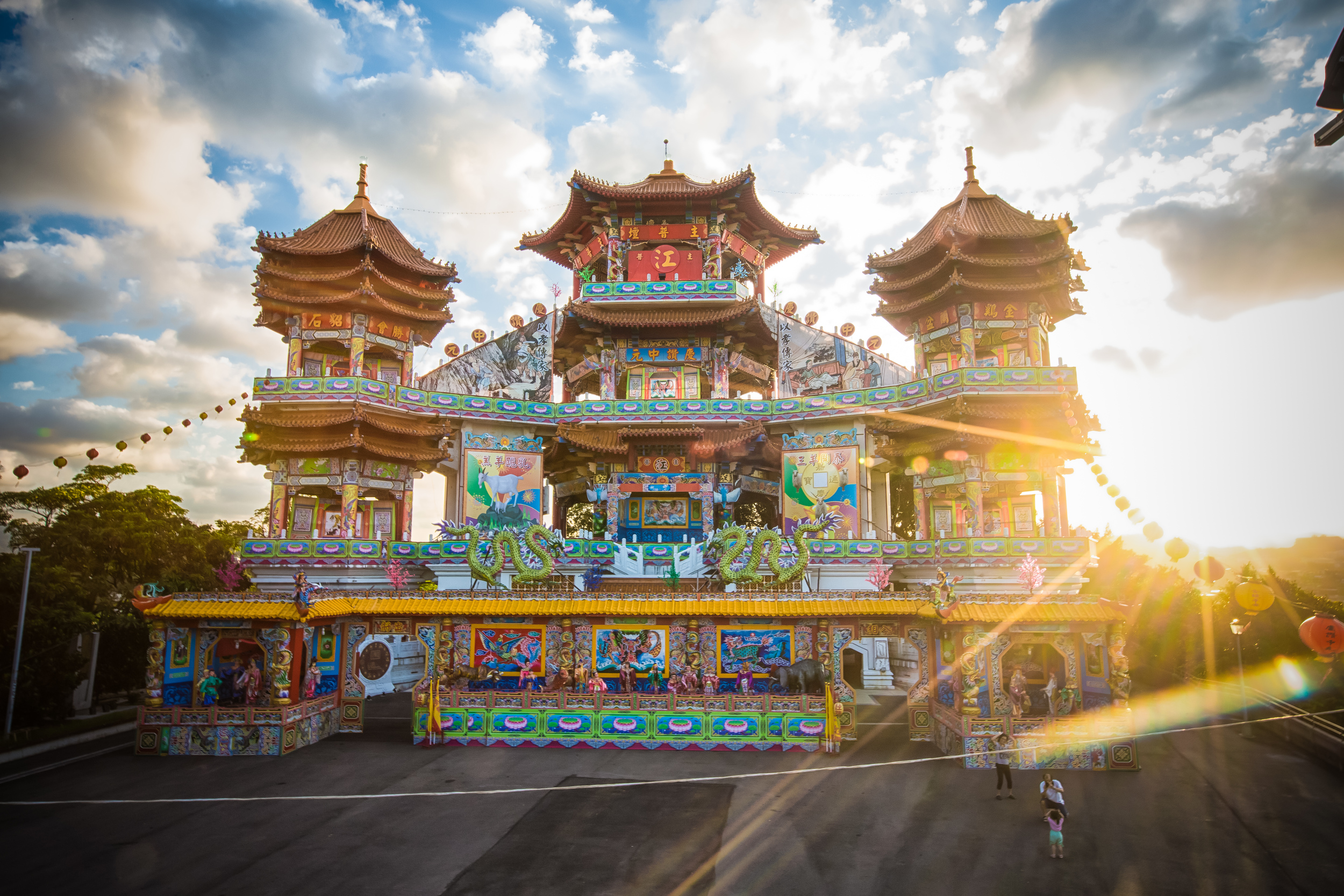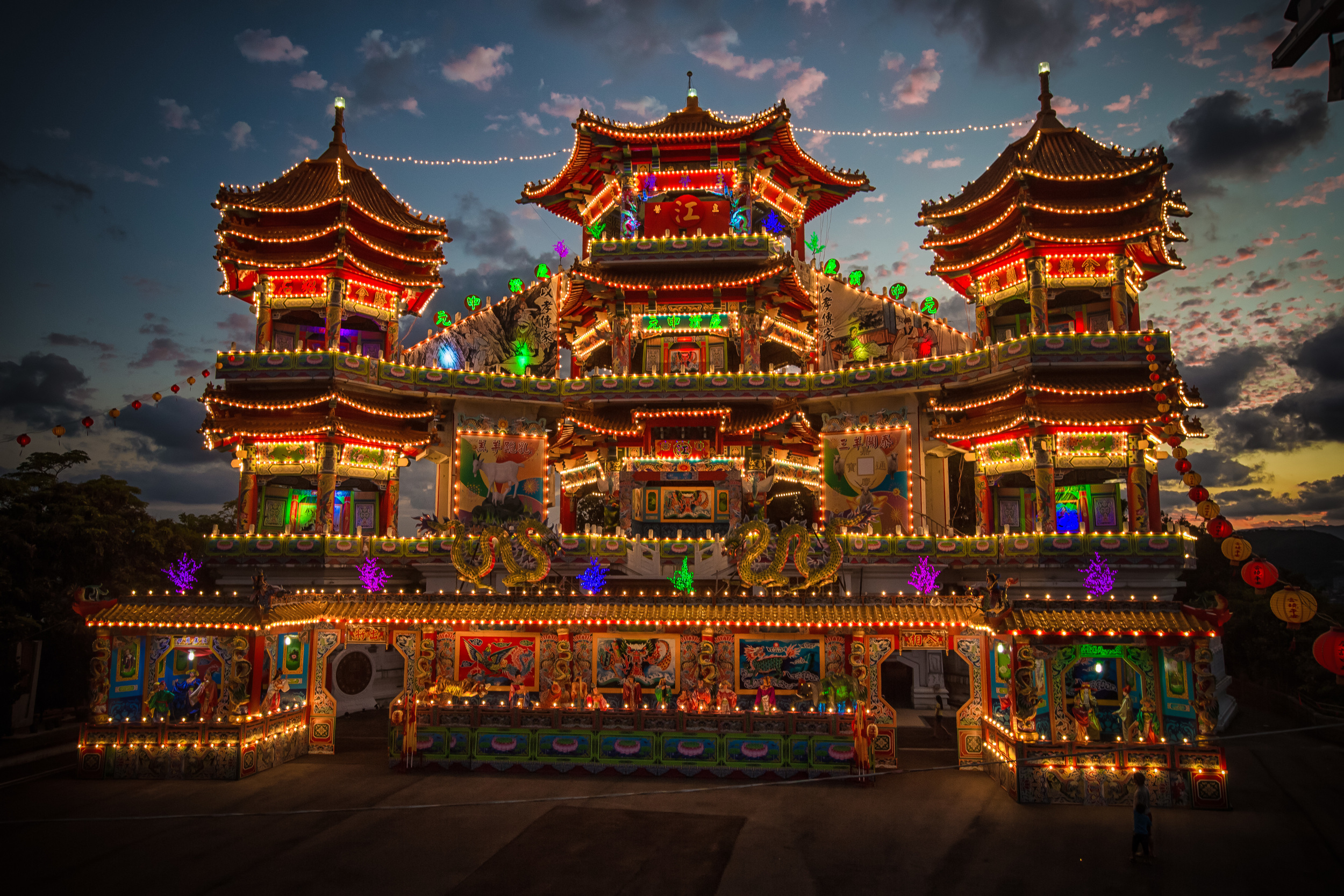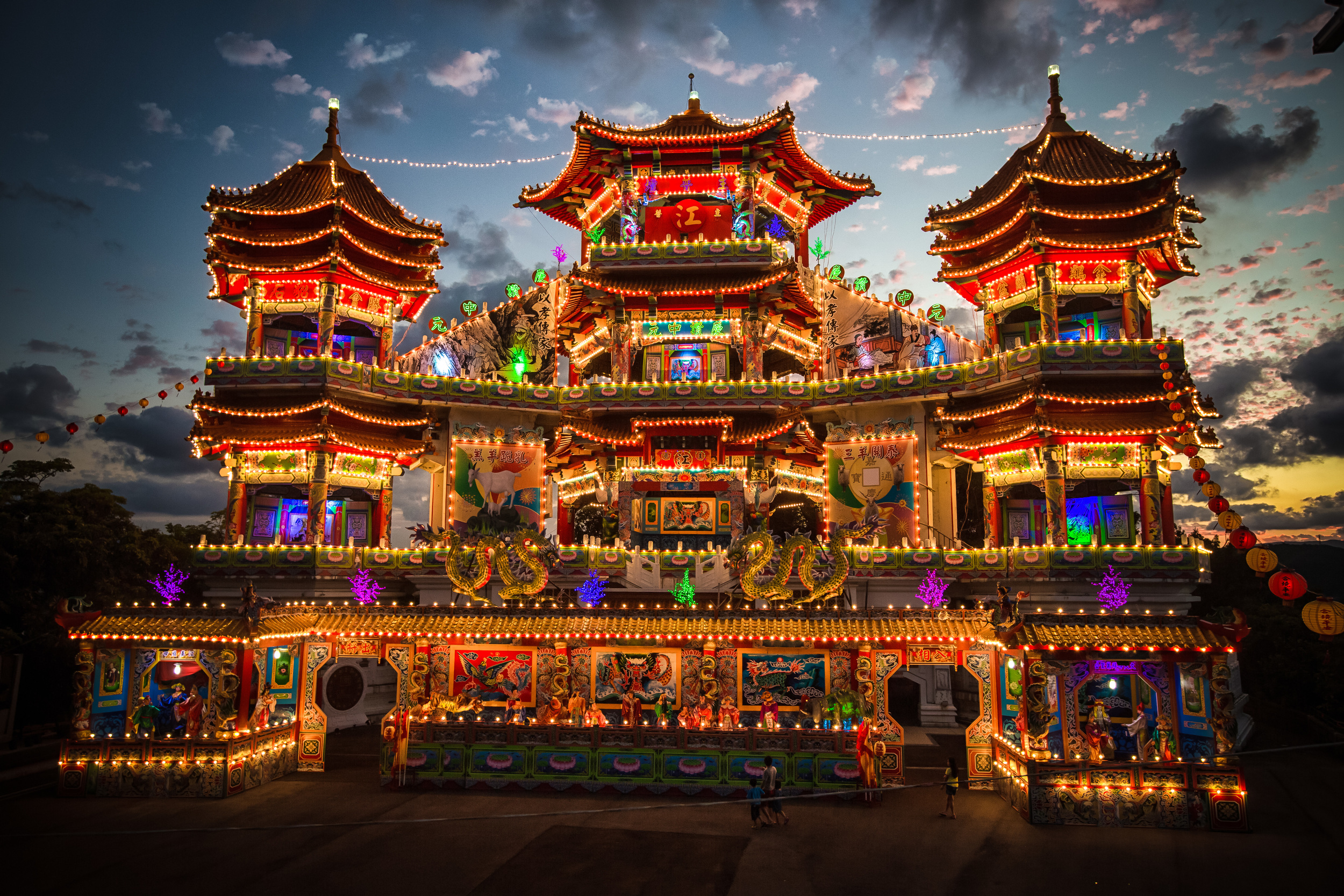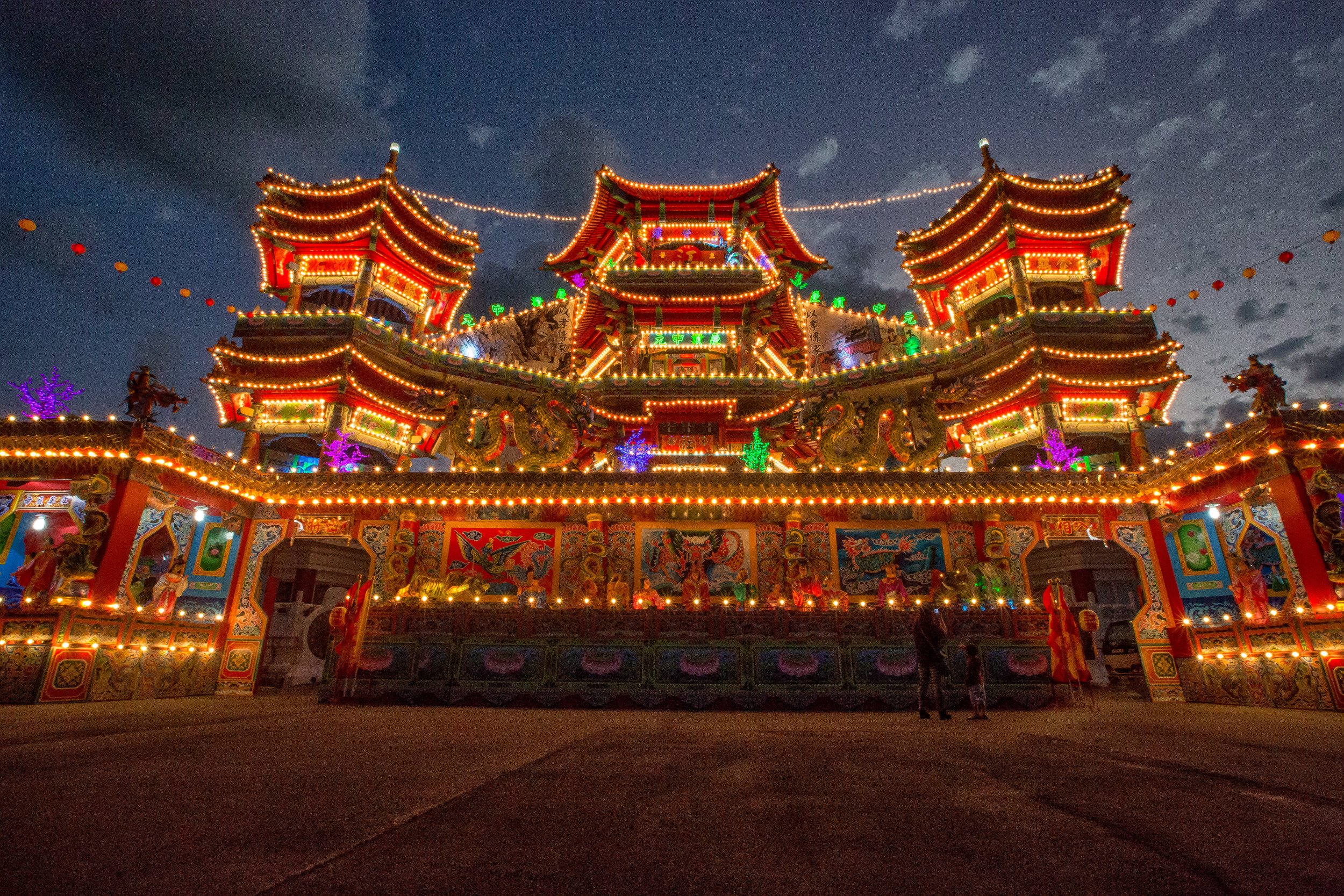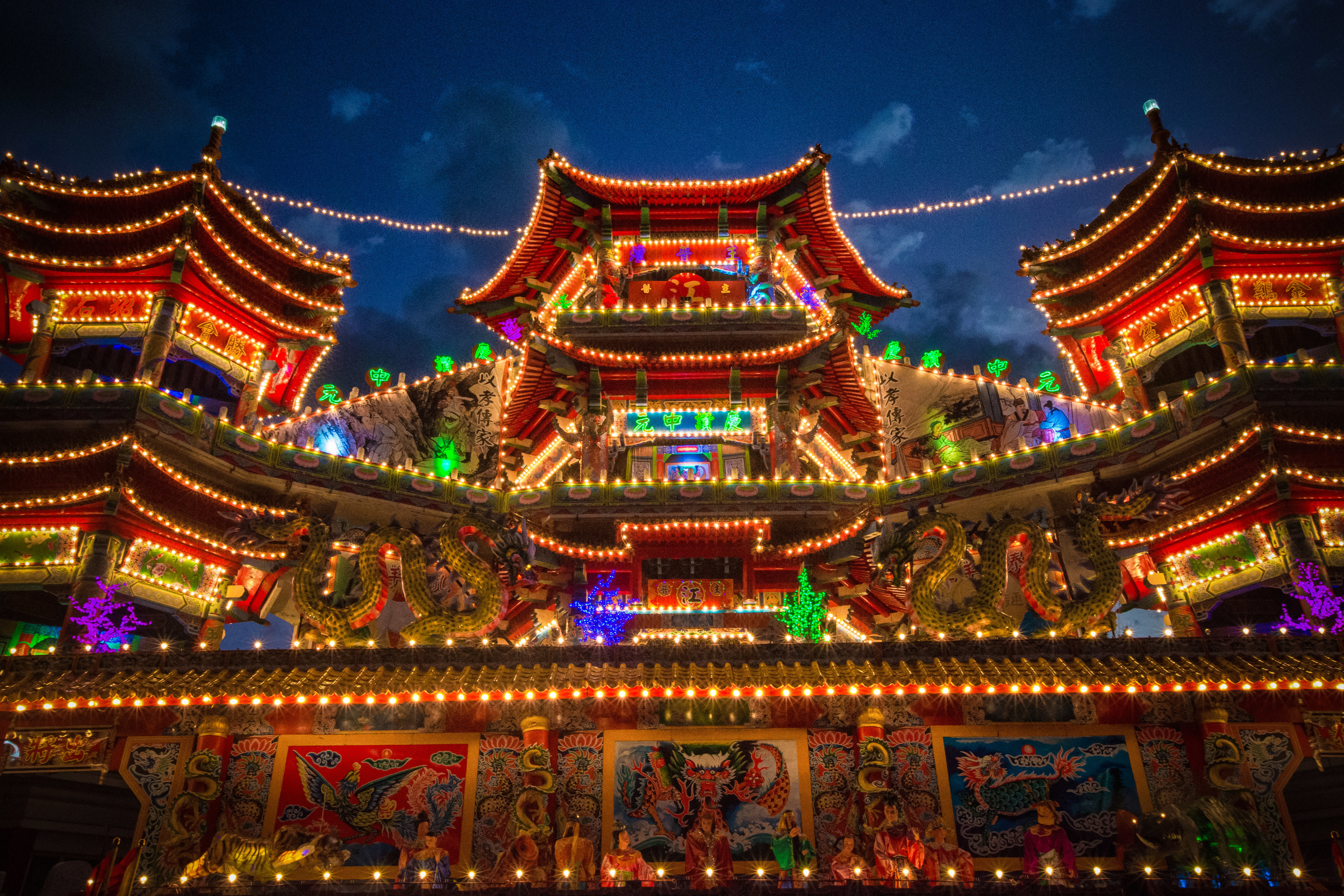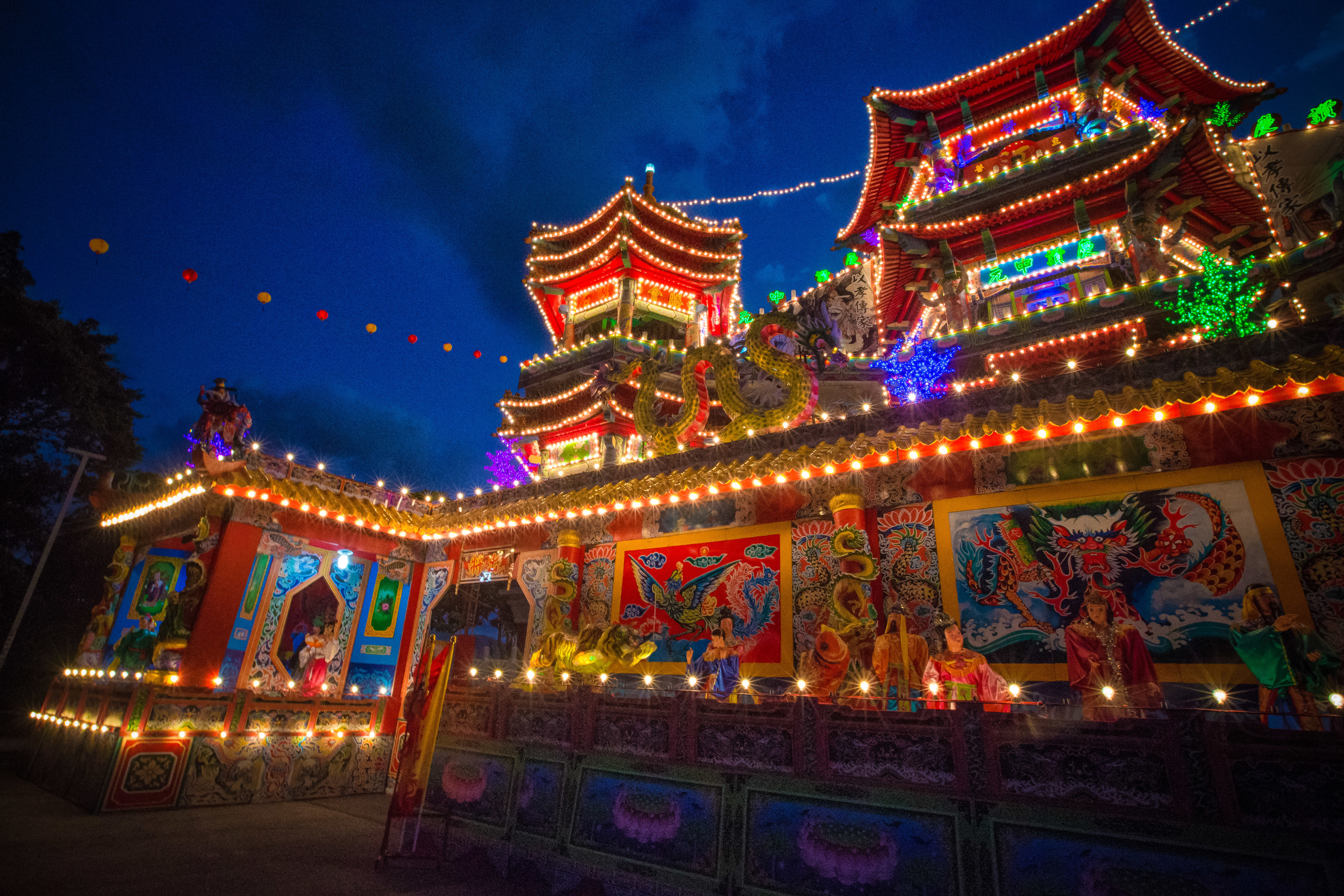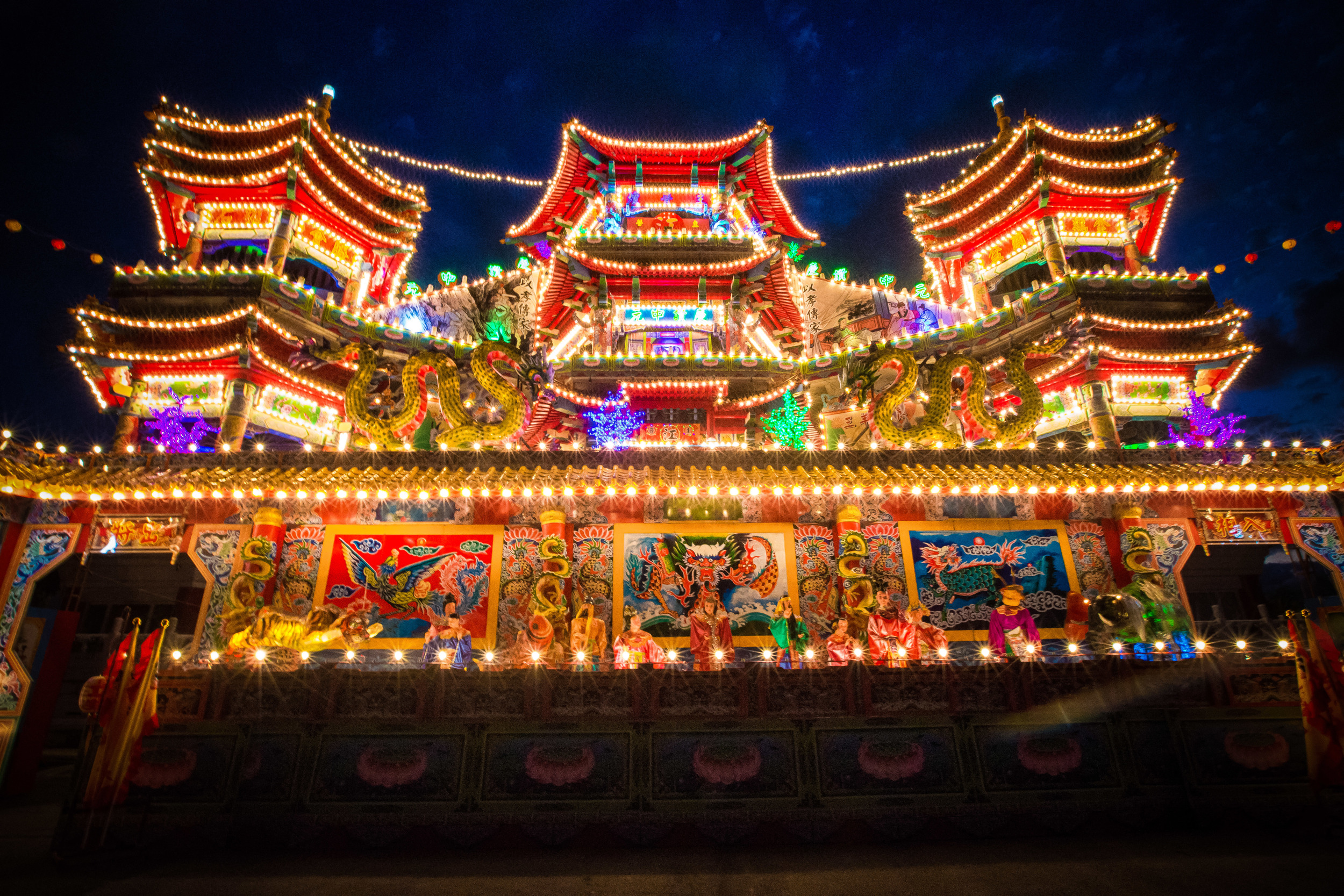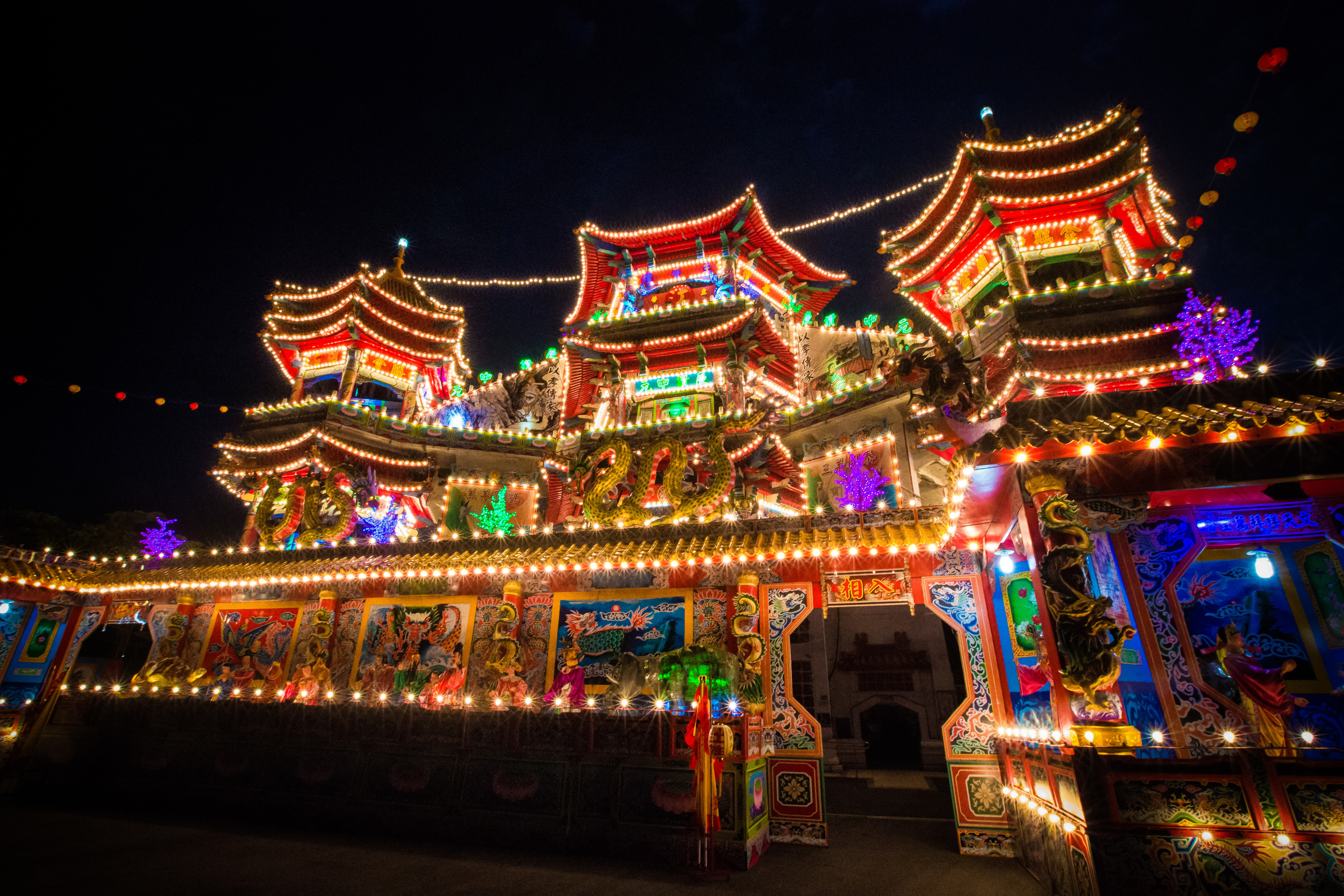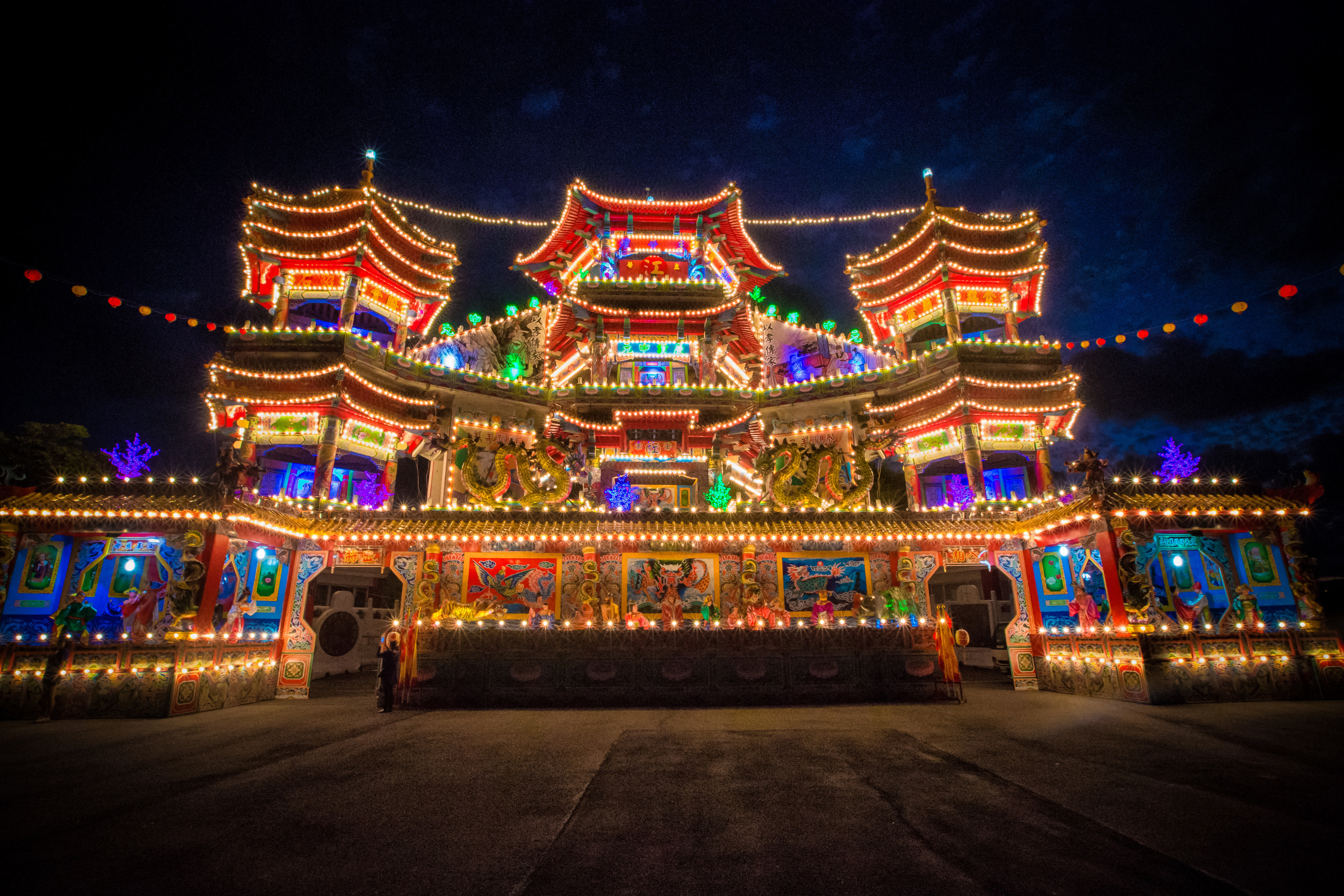If you've been following my blog for a while now, you'll know that I'm a big fan of Taiwan's temples - I love the history, the art and the culture that goes into making them some of the most interesting places to visit in Taiwan. Of all the temples that I've introduced however, none of them have been as difficult to write about than Hsinpu's Yimin temple.
I have lived in an area of Taiwan for the last decade and that ispredominately populated by Hakka people and most of my friends, coworkers and food I eat are all Hakka. I have a great respect for the culture and feel like if I'm going to write about this temple that I'm going to have to do it justice.
This temple is most responsible for the preservation of Hakka culture in Taiwan and no matter how many hardships the Hakka's have experienced throughout their history - this temple has played an instrumental role in reminding them that it is okay to stand up proudly and tell the world "I am a Hakka".
The Baozhong Yimin Temple (褒忠義民廟) in the tiny village of Hsinpu (新埔鎮) has thus become a Mecca-like place of worship and celebration for the Hakka people of Taiwan where their culture, history, and cuisine have been carefully preserved over the last few centuries of Taiwan's development despite discrimination and persecution from other ethnic groups.
The Hakka (客家人) are an ethnic group which originated somewhere near the Yellow River (黃河) in what is now China's northern Shanxi (山西), Henan (河南) and Hubei (湖北) provinces. The early history of the group is shrouded in mystery and historical records aren't really clear as to their origin given that the earliest recorded history referring to the group was during the Song Dynasty (宋朝) between 960 and 1279.
They are part of the 55 different ethnic groups that makes up the Han people (漢族) and are genetically similar to the northern Chinese with the only distinguishable different being their language, culture and cuisine.
The Hakka are pejoratively known within China as the "Jews of Asia" due to the fact that throughout their recorded history they were forced to migrate en-masse on five different occasions mirroring that of the experience of the Jewish people in the Middle East and Europe. The problem with this comparison however is that the Jewish people often migrated due to the sheer hatred and racism directed towards them whereas the Hakka people migrated in order to escape the turbulence of China's warring states period and the political and social upheavals that occurred when there was a regime change in the Middle Kingdom.
Each migration found the Hakka people moving further and further south ultimately settling in areas such as Guangdong (廣東), Jiangxi (江西), and Fujian (福建) provinces and once again becoming some of the earliest Han people to migrate to Taiwan (as well as other parts of South East Asia) where they would find a permanent home. Today they are considered the most diasporic among all of the Chinese ethnic groups with a total population of around 80 million living in countries all over the world.
The Hakka people started immigrating to Taiwan in the 16th century and even though life on the island was tremendously difficult in the early years, they persisted due to their wealth of experience and their ability to adapt to new environments. Today the Hakka population in Taiwan is around five million which is about twenty percent of the entire population of the country. They live all over the country but have concentrated populations in Taoyuan, Hsinchu and Miaoli as well as in the south of Taiwan in Kaohsiung and Pingtung counties.
Today the Taiwanese government has set up a division known as the Hakka Affairs Council (客家委員會) to assist in preserving and promoting Hakka culture in Taiwan as well as around the world. Hakka culture and traditions however have been passed down generationally and the group has become well-known in Taiwan for the importance they place on hard work, family and relationships. The Hakka people might have been guests (客人) in the places they migrated to in China hundreds of years ago, but today they treat guests like family making them one of the friendliest and most hospitable groups in Taiwan.
The Baozhong Yimin Temple was the original centre for the preservation and consolidation of Hakka culture in Taiwan and the role it has played over the last 200 years has been integral in keeping Hakka language and traditions alive.
Yimin Temple isn't a typical Taiwanese temple and while the exterior may look similar, there are quite a few differences that separate it from the rest. What makes it stand apart is actually quite simple - Most temples in Taiwan are dedicated to a specific deity (or even several) whereas the purpose of this one isn't for the worship a higher power but instead the proud history of the Hakka people.
To understand all of this, we have to go back to the reason why the temple was built in the first place - "Yimin" (義民) which translates into English as "righteous people" refers to a group of Hakka men who banded together to form a militia in order to protect their homes from invasion. Today they are memorialized as righteous, brave and loyal defenders of their homeland showing what is considered some of the best aspects of Hakka culture. The story is not unlike a feel-good Hollywood movie where a group of underdogs band together against all odds to achieve something incredibly unlikely.
In 1786, a Hoklo (閩南人) uprising against the Qing dynasty formed in Changhua (彰化) which later became known as the "Lin Shuang-Wen Insurrection" (林爽文件事). The Qing dynasty at the time had little resources in Taiwan (due to disinterest in the island) and was unable to quell the insurrection on its own which meant that they required assistance from groups loyal to the empire.
The Hakka people who had developed a prosperous economy in the Taoyuan, Hsinchu, and Miaoli areas of western Taiwan got together to discuss the insurrection and decided to form a volunteer militia in order to protect their lands from an army which conspired to oust the Qing and conquer lands to the north which threatened to once again send the Hakka packing.
This time, rather than migrating of their own free will, the Hakka amassed a force of 1,300 men and marched its way into Hsinchu to battle the rebels. When the dust settled and the battle was over the Hakka militia had lost around 200 soldiers yet were victorious in battle.
When it came time to return home, the militia piled up the bodies of the deceased and placed them on ox-carts to be taken back home so that their families could honour them properly. Upon reaching Hsinpu, it was decided that the bodies would be buried in a common tomb in the Fangliao area (枋寮) of the village.
Local people pooled together money and built a large tomb for the fallen heroes who were later awarded with a hand-written plaque of appreciation from the emperor which read "Baozhong" (褒忠) or "in praise of loyalty" which was regarded as a great honour for the people in the area and was the reason why the temple was given the name: "Baozhong Yimin Temple" (褒忠義民廟).
The Hakka people share a common history with many other ethnic-Chinese groups and ancestral worship has traditionally been an important part of their culture and religious beliefs. When the initial planning started for the temple it was decided that a building would be constructed in front of where the tomb was built and inside the temple would be a spirit tablet (神位) which would be dedicated to the deceased members of the Hakka community who died during the insurrection.
This would become the foundation for "Yimin" worship in Taiwan and is a tradition that has spread throughout Taiwan over the past two centuries having expanded to over thirty temples throughout the country known as either Baozhong Pavilion (褒忠亭) or Yimin Temple (義民廟).
A spirit tablet is a plaque is meant to take the place of someone of importance or even a god. It is common to find spirit tablets within temples dedicated to Confucius (Taipei, Taoyuan Hsinchu) as well as in some Taoist temples. The purpose of a tablet like this is to designate the seat of a deity or an ancestor. Tablets like this are common throughout East Asia in places where ancestral worship is common. The tablet placed within Yimin temple reads "敕封褒忠粵東義民位" which basically refers to the fact that the Hakka warriors represented within the tablet were venerated by royal decree.
The spirit tablet which became known as "Yimin Ye" (義民爺) isn't supposed to be a 'deity' in the traditional Taoist or folk religion sense but over time it started to serve a lot of the same function making Yimin worship a bit confusing in the context of traditional religion in Taiwan.
The original purpose of the Yimin spirit tablet was to allow the Hakka people to have a place to honour their ancestors as well as to keep the Hakka spirit alive. Local belief has it though that a few (so-called) miraculous events surrounding the tablets took place which led to people starting to pay their respect to the spirit tablet in the temple as well as using it to receive spiritual guidance and some much needed good luck. The superstitions that ultimately evolved from early Yimin worship helped to foster the importance of the Yimin Cultural Festival (義民文化節) which has become the largest event of the year on the Hakka calendar.
The Yimin festival had modest beginnings and started as a way for the Hakka community to come together once a year to celebrate the harvest and give thanks to the ancestors who helped save their land. There are many activities held around the temple and in other Hakka communities around Taiwan with a feast being one of the most important events. The festival has continued to this day and has unfortunately become most known for the 'Pigs of God' tradition which has become somewhat notorious in recent years. I explained the Pigs of God aspect of the festival in an earlier blog, so I won't go into much detail about that here. The important thing to remember is that the Pigs of God is actually just a small part of a very important festival which celebrates Hakka culture, history, cuisine and their way of life.
Design
Unfortunately the original temple succumbed to a fate much like that of Taipei's Longshan Temple and Confucius temple and only lasted until 1895 when it was either burnt down or bombed by the Japanese during the first Sino-Japanese War (第一日中戰爭).
The temple was rebuilt shortly after and completed in 1904 and is the structure that we see standing in Hsinpu today. It is a very simple temple that doesn't have all the glitter of a typical Taiwanese temple but at the same time is one of the most important temples in Taiwan. It was constructed in a way that it has an exterior that is quite similar in design to the Hakka-style homes of that era (of which there are quite a few well-preserved specimens in nearby Jhubei) and while it is much larger than any home of that era would have been, its interior is very much like other temples that you'd see around Taiwan only a bit simpler.
To give a little more detail the temple is constructed in a specific style consisting of two main halls, two corridors and two side halls. (二殿二廊二橫屋). The hall at the entrance has help desks on the sides with a large courtyard and a large incense pot in the middle where there are often large groups of people paying their respects. The rear hall is elevated and by a few steps and is where the shrines are located. In the main shrine there is the Yimin spirit tablet with two shrines on the sides dedicated to the Three Mountain Kings (三山國王), Guanyin (觀音菩薩) and another dedicated to Lord Shennong (神農大帝) who acts as a patron to farmers.
The corridors to the side of the main halls lead to separate rooms filled with beautiful art and the cool-looking lamps that you see in almost every temple (光明燈) which are used as a way of collecting donations from patrons of the temple who get to have their name on a lamp for good luck and spiritual wellbeing.
Behind the temple is a small mountain where a beautiful park has been constructed. The walk up the hill during the winter months is especially nice because you get to see beautiful cherry blossoms. The important thing to notice behind the temple though is the tomb that is set up for the Hakka warriors who protected their lands and are the reason why the temple exists in the first place.
To the left of the temple there is a man-made lake with a bridge and a lot of cool things to see and the forest area behind it. Truthfully though the lake area seems a bit kitschy to me so I rarely spend a lot of time around there checking it out.
If you visit the temple during the week it can be surprisingly quiet and peaceful while on the other hand if you visit on the weekend it is usually quite busy with people doing their thing. The last time I visited when I went specifically to ask a few questions about the history of the Pigs of God festival I thought it was really cool to see a group of old men sitting at a table while a younger guy was sitting down recording the way they spoke which seemed like an attempt on his part to not only learn the Hakka language but also record the way that the older generation of people speak the language. If you visit the temple during Lunar New Year or during the Yimin Festival you're going to have a very different experience as the temple will be so busy and there will be so many things going on that it seems a little like sensory overload.
For me, I love visiting this temple, especially during the busy times because it is not your typical religious place of worship. There is so much more going on there than that and that's what makes it special - its a temple dedicated to the preservation of culture and as someone who is interested in the cultural anthropology of Taiwan, it is a great place to visit to not only learn about Taiwan's history but also experience it at the same time. If you find yourself in the Jhubei area or in Hsinchu, make sure to visit this temple.
Gallery / Flickr (High Res Photos)
